 Fashion Trends of Europe & America at turn of the Century
Fashion Trends of Europe & America at turn of the Century
- Simplicity of fashion affected all classes
- At the beginning of the era, the “Gaulle” & “Chemise a la Reign” introduced by Marie Antionette before the Revolution, took hold worldwide
- Being ‘fully dressed’ at this time meant bosom & shoulders bare, yet being ‘un-dressed’ meant being covered up all the way
- French trendsetters would moisten their thin gowns to achieve maximum sexiness
- A new emphasis on hygiene had women of all classes preferring simple cotton that could be easily cleaned
- Invention of the washing machine in 1797 made the little white dress even more popular, as it could be kept constantly bright white
- In about 1800, & for the first time, fashion – including style, line, color, fabric, availability, cost, & construction was nearly the same for all classes
- The basic gown was a straight lined “empire” waisted sheer 1 piece cotton dress that trailed just to the ground
- It had short sleeves & a low decolletage
- The waist raised even more dramatically after 1795
- Influence from improved communication & trade with India, West Indies, China, Greece, Italy; along with scientific discoveries gave new direction to decoration & style as the era progressed
- As time went on women depended on accessories show individualism & class status, or to make a political statement
- Many wore striped garments to show support for their military
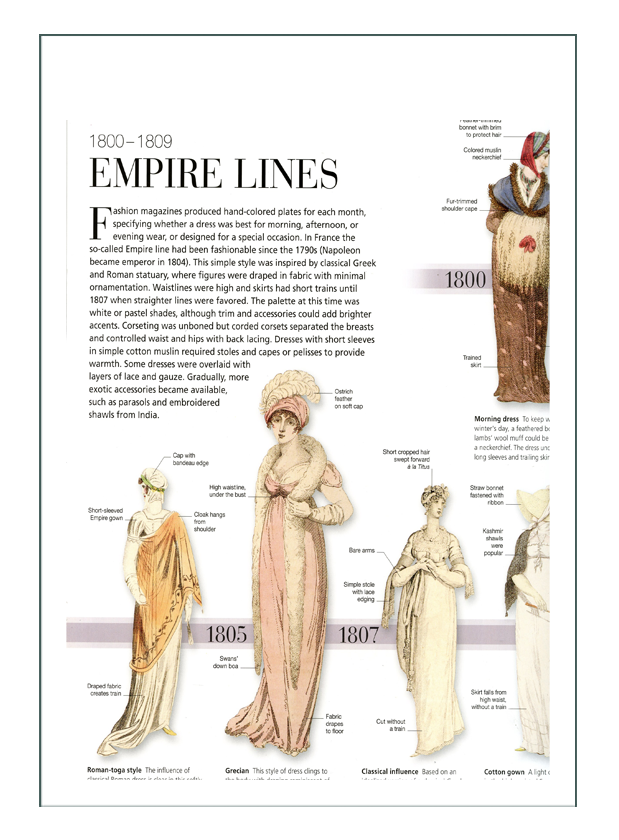
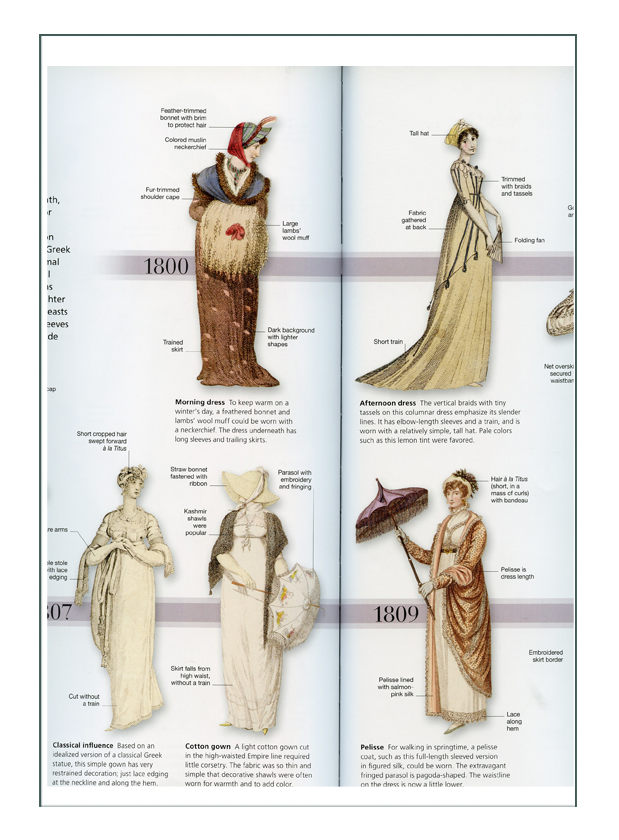
Fashion Specifics
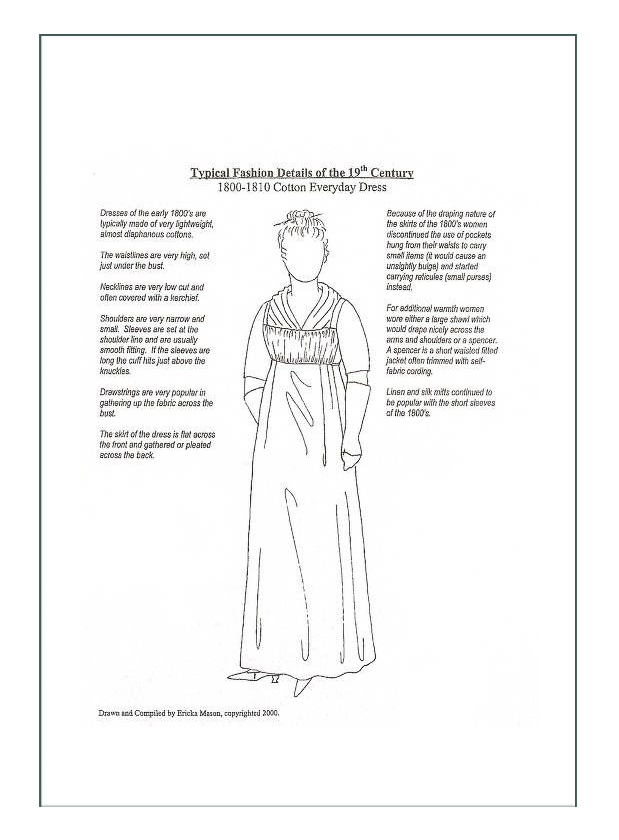
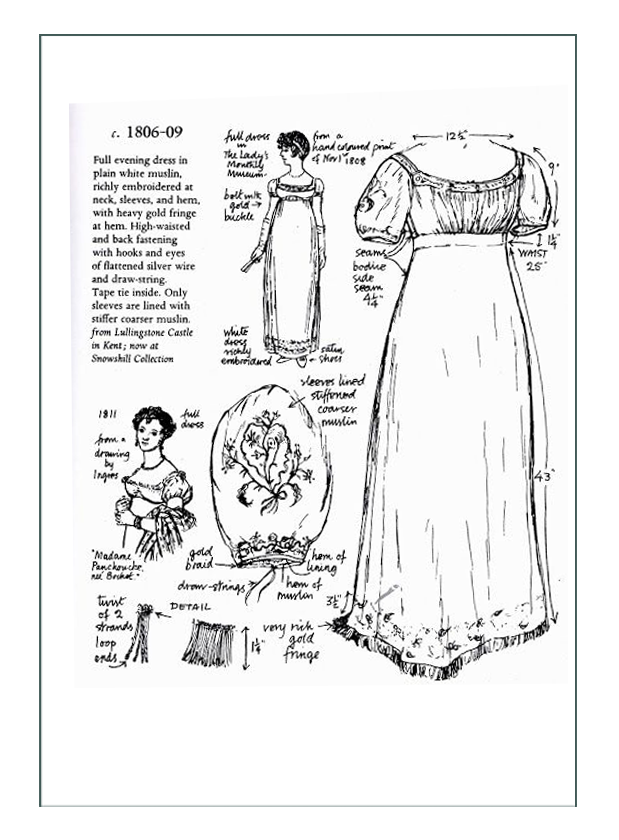
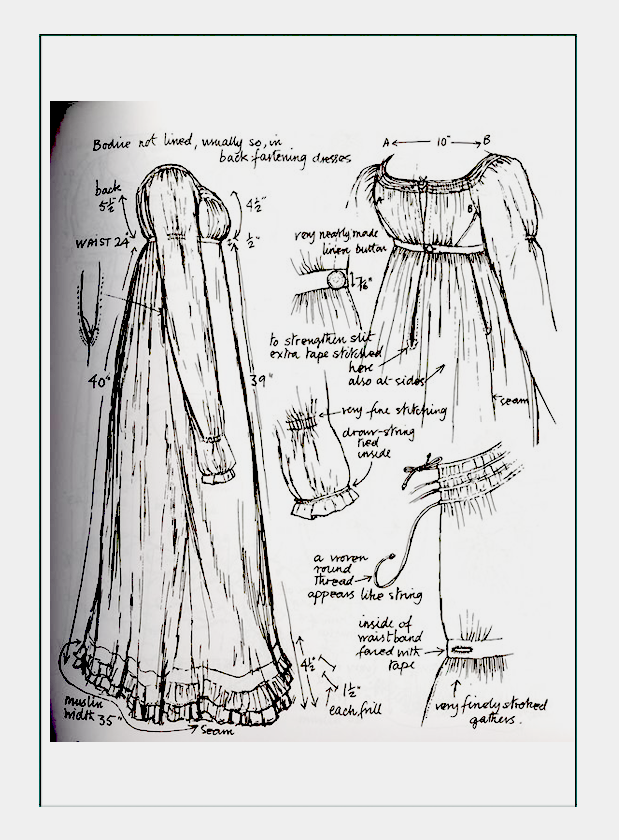
ROBE
GREEK THEN EGYPTIAN
- In the beginning of the era, the gown was called a “robe”. It was a simple, white, muslin dress with straight lines & an empire waist which hit just under the bust in front & back
- The early gown design concept was based on ancient Greek & Roman toga like costumes
- It had evolved in construction method & application from Marie Antoinette’s “Chemise a la Reign”
- It was modeled & intepreted by Empress Josephine
- The Greek influenced simple white tunic like dress was idealized & popularized as artist Jean Louis David designed a national French costume based on it
- Women took the cue from the artist on how they should look & dress
- Robe “a l’Athienne” was the Round Robe of the previous era, which was divested of its fullness, & cut from diaphonous materials & the front fullness considerably reduced
- The front of the skirt of the basic gown & “a l’Athienne” had no fullness, but required a little gathering at the sides to allow for discrepancy in width between rib cage & hips
- Sometimes the front of the skirt was gored on the side seams which eliminated the need for gathers at the waist
- The fullness of the skirt was towards the back so that it would drop straight from the rib cage to the ground without making a “bump” as it passed the derriere
- Robes of the early period always had very long trains which were carried over the arm. Later this would be abandoned
- A complex series of strings & ties kept the dress from drooping down from the high waist
- Robes were fastened center back (from 1800-1810 the bib or apron front replaced the back closure)
- Sometimes there was a tunic overskirt suggesting the Greek “peplos”
- The Grecian effect was done by a low square neckline, short puffed sleeves, white clocked stockings, pumps with low heels or sandals with pearls, & hair styles similar to classical times
- The Greek design would later be dropped to incorporate ancient Egyptian concepts instead
- The same “little white dress” was the basis, but the accessories & garments worn over the basic dress were different
- Egyptian inspired Regency dresses had shawls with symbols & decorations from ancient tombs
- They incorporated reds & yellows of the Nile region, with beautiful woven & printed fabrics
- The Pelisse came into common use
- Collars & belts were worn to some extent
- Following is a breakdown of the style:
- 1800-1810: The Pelisse (coat) was created. It had the empire line to hip or knee length
- 1810 & later: Pelisse was worn almost exclusively at full length & was made of warmer fabrics & construction including long sleeves
- 1812: Pelisse added a broad collar from military influence & became more of an outer garment
- The Pelisse was golden brown, dark green, blue, & was worn over pale gowns which were visible under the opening of the coat
- “Pelisse-robe” was added for inside use, or as a garment by itself
- “Walking dress” was a pelisse worn by itself outdoors
- 1800-1803: Greek influence; more fabrics as new dyed cottons came available from India, including dark colored fabrics
- SE Asia, India, West Indies influence added
- “Robe a la creole” variation was brought from the Indies
- 1804 (Napoleon crowned)-1807: Egyptian & classical (simple straight silhouette) influence on lines especially
- Etruscan & more exotic & oriental ornamentation as inspired by Napoleon’s expeditions
- The Spencer Jacket was created. It was based on a man’s military coat without tails; very high waisted & strictly ornamental included frogging, epaulets, & all the military frick-frack
SLEEVES
-
-
- Sleeves were tiny & puffed until about 1815 when long sleeves were added
- By 1818 long sleeves were common, though still puffed & ornamented
- Into the next era, Renaissance & Rococco (Spanish & military) inspired themes would replace the tunic like draping & puffs of this era
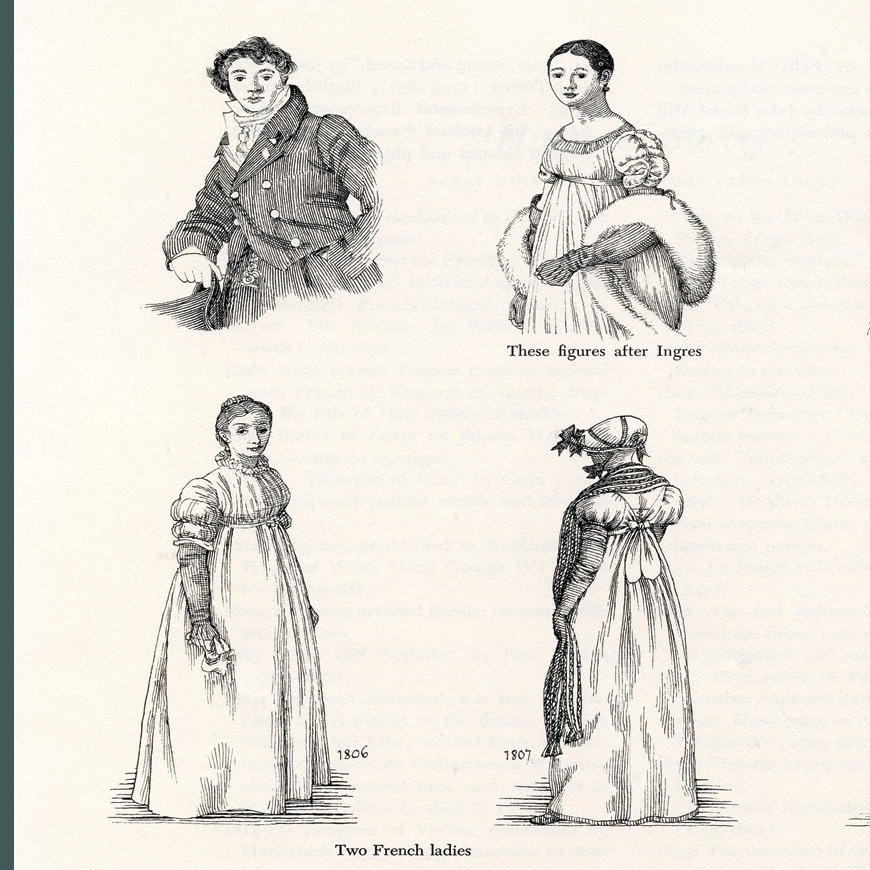
-
UNDERGARMENTS
-
- Stays (the early name for corsets) were still the light weight, corded or half-boned stays of the previous decade
- Boning was light or the stay was only stiffened with cord
- A new introduction was a gusset which would make a round shape around each breast
- The gusset separated the breasts, & made a more full & round shape within the bodice of the garment, as well as lifting the breasts up to show in the decolletage
- Stays were either very short or long over the hips, depending on the modesty level & need to control the figure under very revealing dresses
- They did not have tabs on the bottom, but were (almost) always bound straight across
- Many older women continued to wear their old stays
- Some women wet their dress so it would cling & be very sexy
- Others wore a white or flesh colored full body suit under the virtually see through dresses
- There was no petticoat worn at all
- Stockings were white or flesh colored silk, held up with the new “metallic stretch” garter
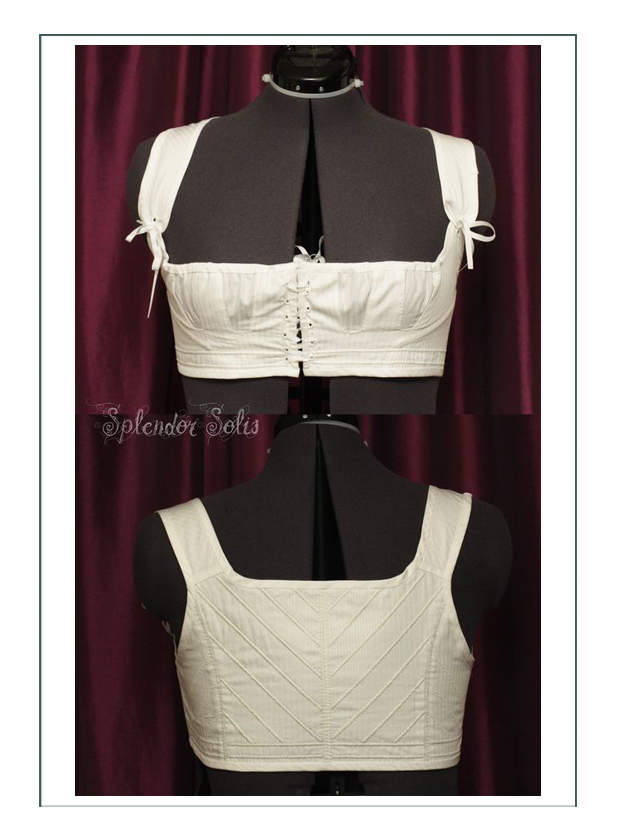
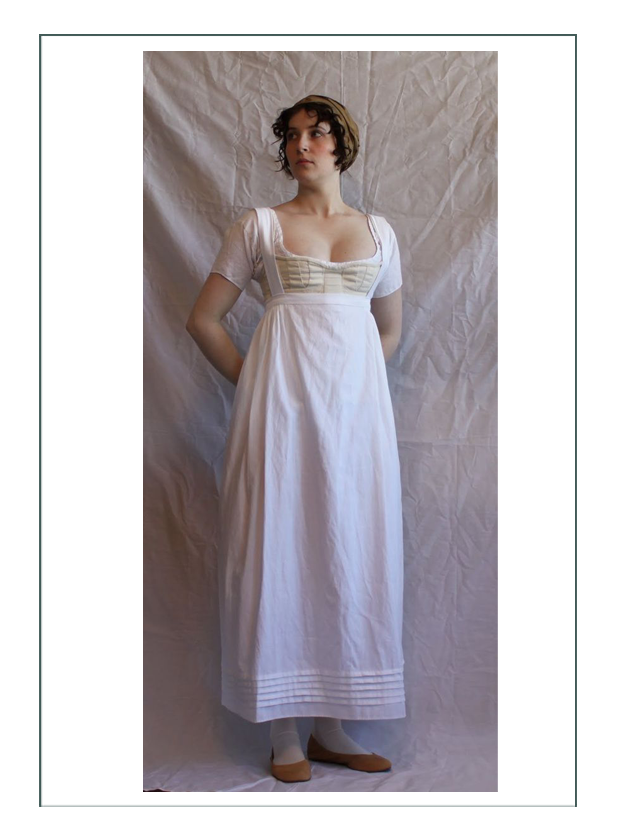 Understructure – Ties:
Understructure – Ties:
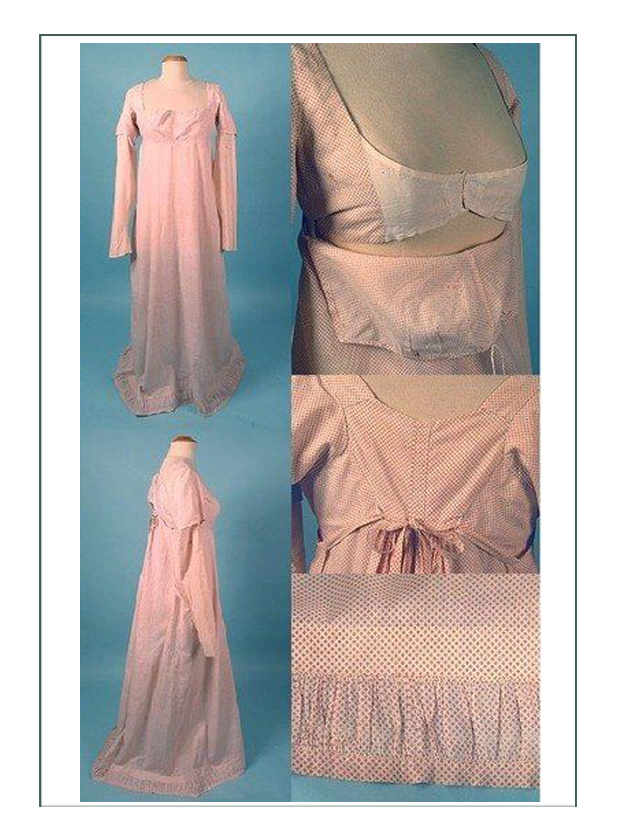
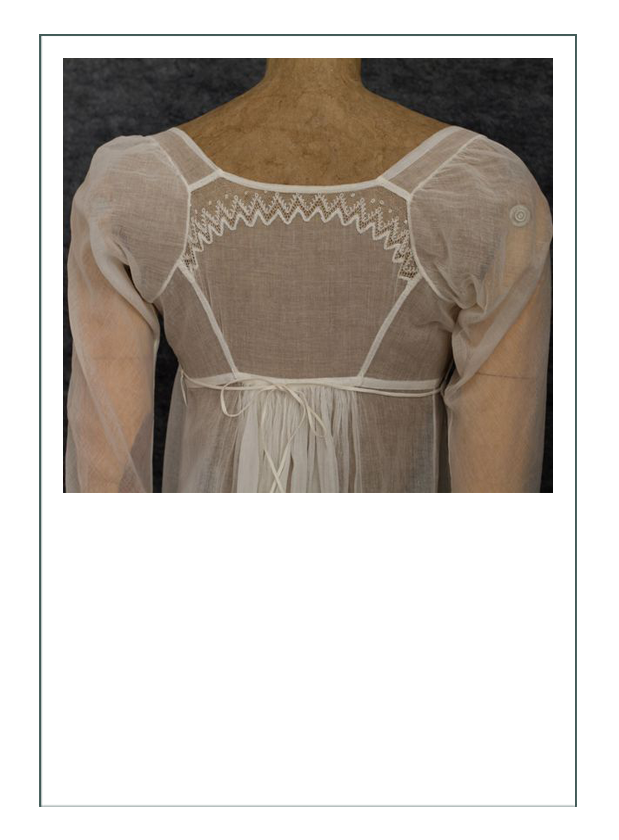
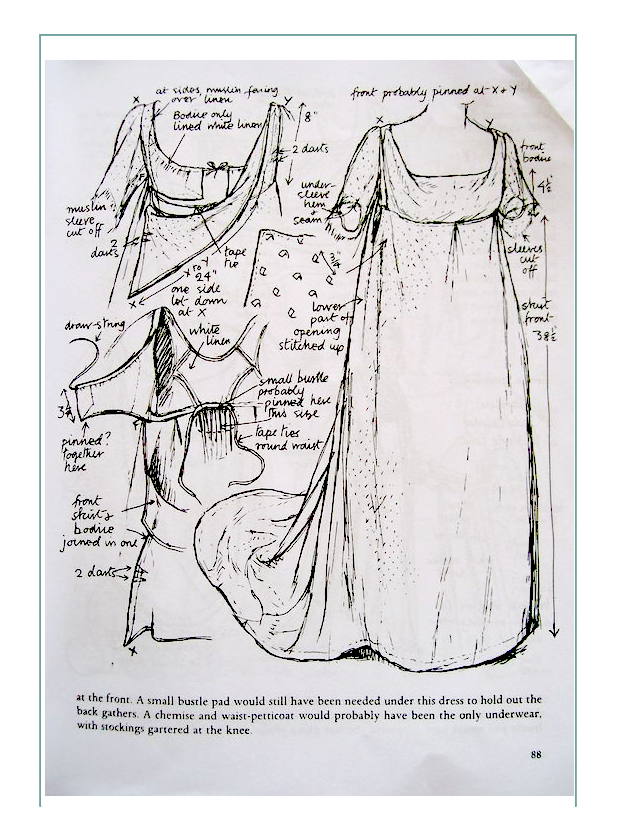
OUTERWEAR;
- pelisses to stay warm since the dresses were thin & small
- Outer garments, with American influence & availability, were fur lined, of merino wool, velvet, or made of black gauze
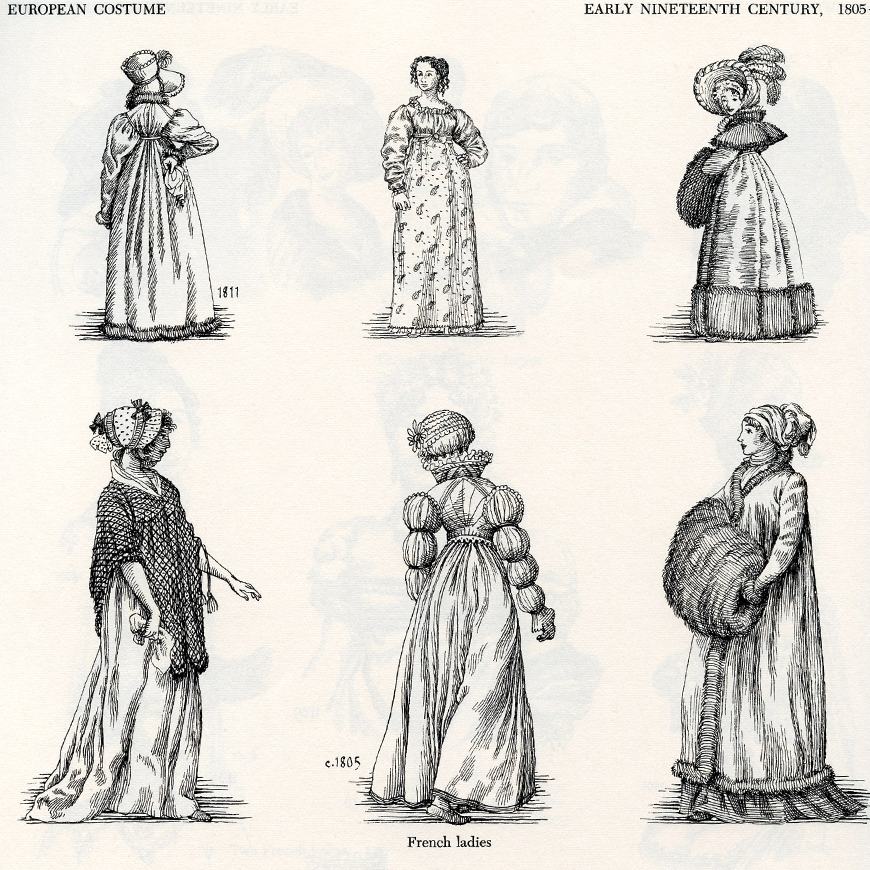
SCARVES & WRAPS
Special mention needs be made of this era and huge and paisley scarves and wraps. Because dresses were light, airy, and very revealing, most women of the time wore extensive layers of chemisettes, fichus, stoles, wraps, turbans, scarves, and hats.
Kasmir and Paisley were the height of fashion from 1780 to the 1870’s. They were given as wedding gifts, gifts for all events, and worn in high as well as lowly social situations. It was only when they became perceived as for “old people” that they lost favor.
During their run, millions were woven, embroidered, and printed in Kashmir, India, Russia, the USA, and Europe. In France at Paris and Lyon, Austria in Vienna, England at Norwich, and Scotland at Edinburgh, Glascow, and the town of Paisley they were made.
It was the Scottish versions that caught on first, although India is credited with their initation in about the 11th century. The word “Shawl” derives from Persian “shal”, denoting a class of weaving rather than an article of dress. Further weaving and design forms were developed by the Mughals, Afghans, and Sikhs. They were initially men’s waist girdles, and then shoulder wraps for men.
From about 1775, Kashmir shawls were acquired worldwide through trade with India.
Shawl & Scarf motifs
The earliest design on Kashmir was a single flowering plant complete with roots. The design gradually developed into an upright spray of flowers, and by 1800 was stylized into the cone-boteh, which we now call the “Paisley Pine”. It is a squat cone with an elongated curve.
Before 1850, shawls were made by one man on a loom. After that, sections were made by boys, and the man would piece it together. Europe replicated original Kashmir motifs, and by 1790 both Edinburgh and Norwich were doing the same.
Weavers were always men. Finished shawls would be taken to a shawl merchant who would clip off loose threads, wash, stretch, and press it.
Paisley (the city) introduced an attachment to the hand loom in 1812, which enabled 5 different colors of yarn to be used instead of just the two original colors of indigo and madder.
The basic difference between Kasmir shawls and imitators are type of cloth and weaving method. Kashmir are woven from hair, making them very light and smooth with a natural sheen. European were woven from silk or wool which made them heavier and less fine.
Changes of Shawl Fashion over Time
During its 100 years of popularity, the shape of shawls changed to suit the type of dress it would be worn over. From 1770-1810, with the simple high-waisted white muslin dresses, shawls would be very simple, very long, and light stoles with narrow borders and deeper woven ends, or they might be small 1 yard square with narrow borders folded int a triangle when worn.
The centers of the small squares were either plain or had a small repeating sprig or pip design. The ends and narrow borders were separately woven, often having small meandering flowers or pine motifs using 3-4 colors. Such a shawl would have cost around $20 in 1805 in Europe.
Shawls widened in the 1820’s until they became elaborate parts of every trousseau. They were worn to church “kirking” shawls. By 1865 they were gigantic to completely cover crinolines, or became very small to just cover the bodice. These large shawls, different than the earlier ones, had the paisley woven throughout to fill the space. Later reversible shawls with double thicknesses were added.
Extant Samples Shawls & Scarves
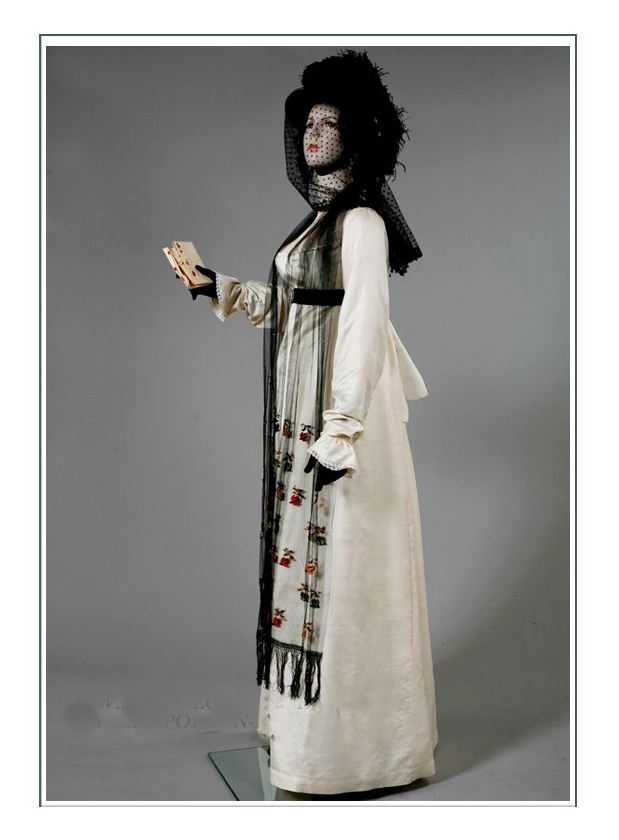
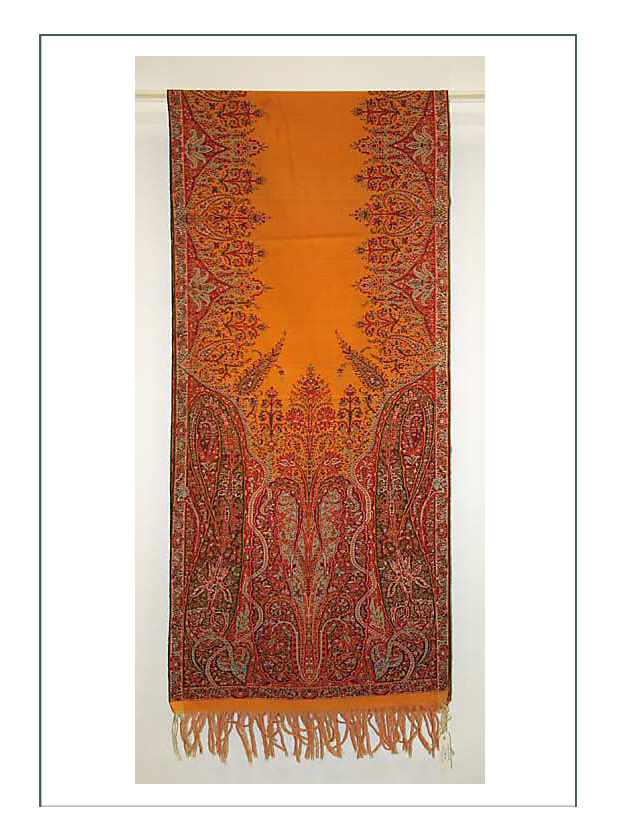
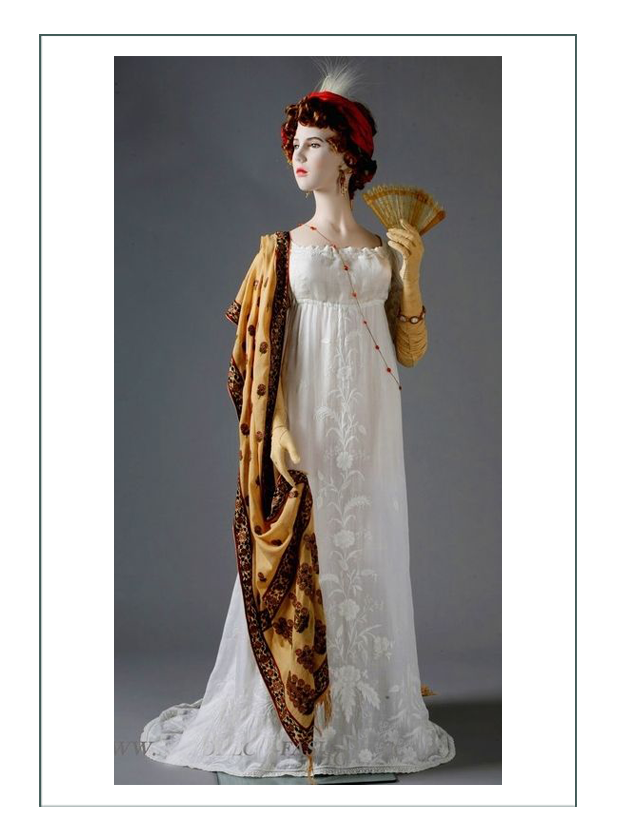
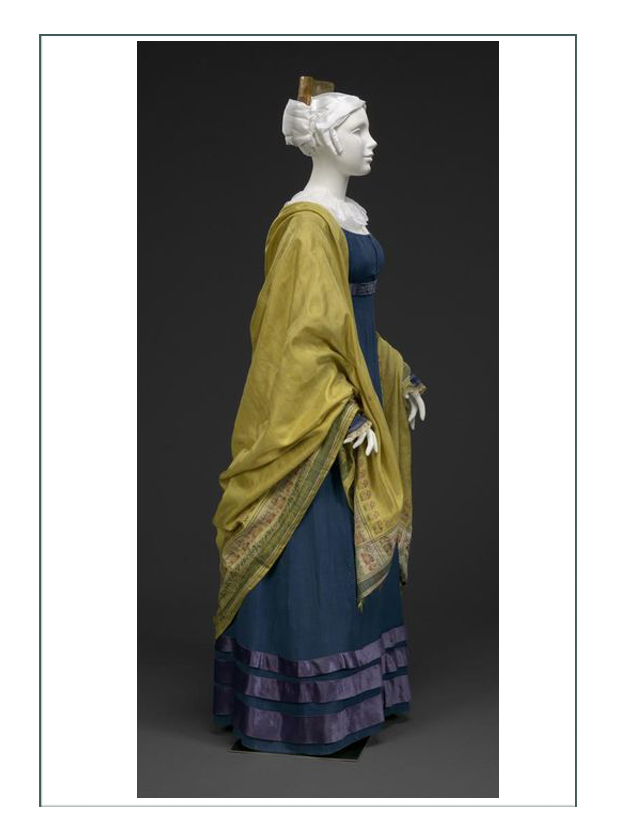
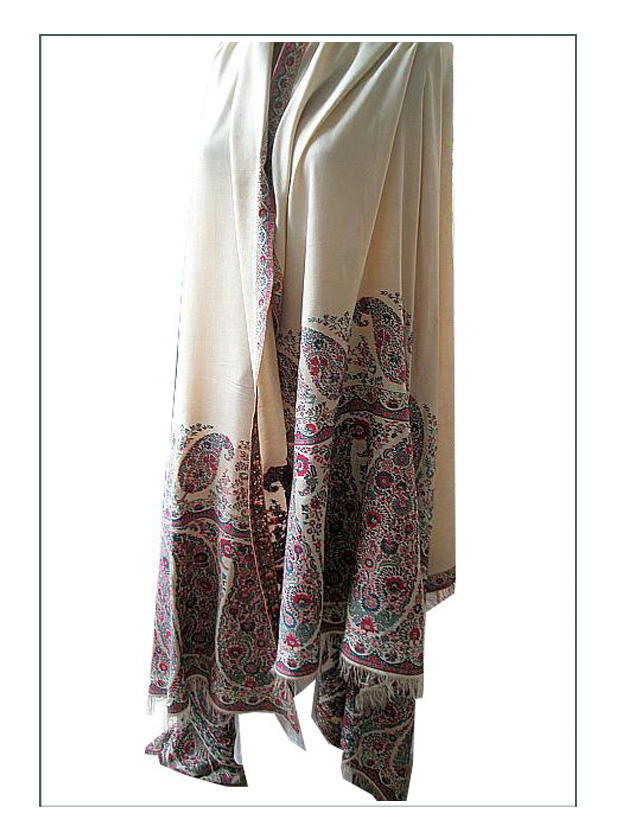
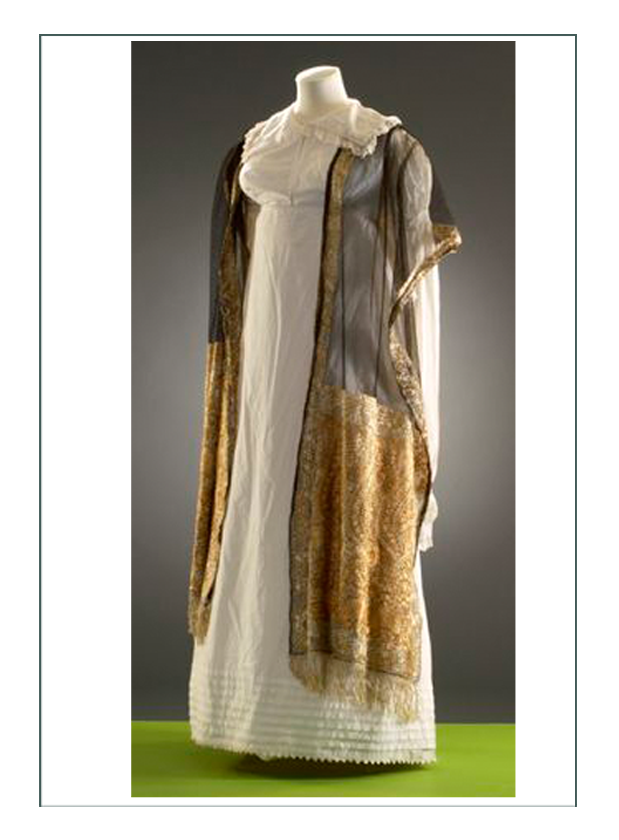
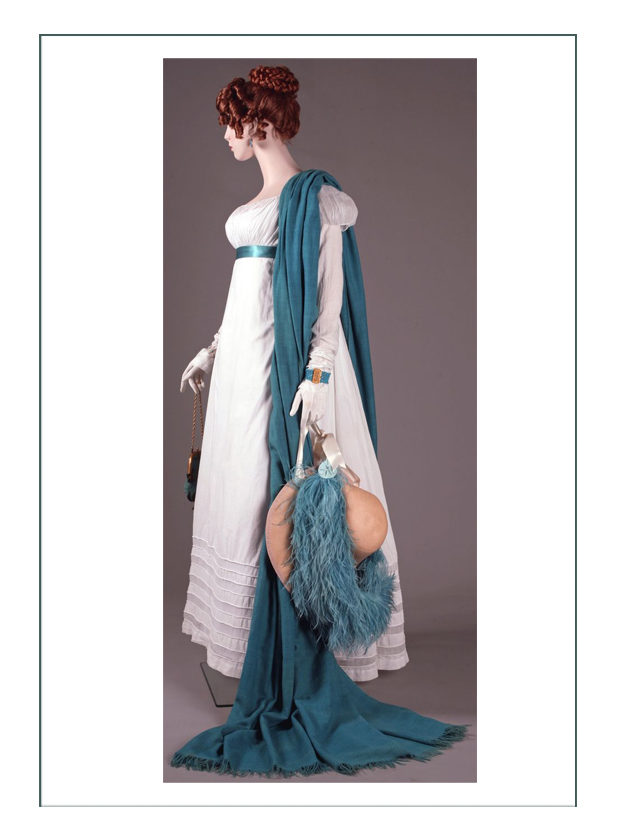
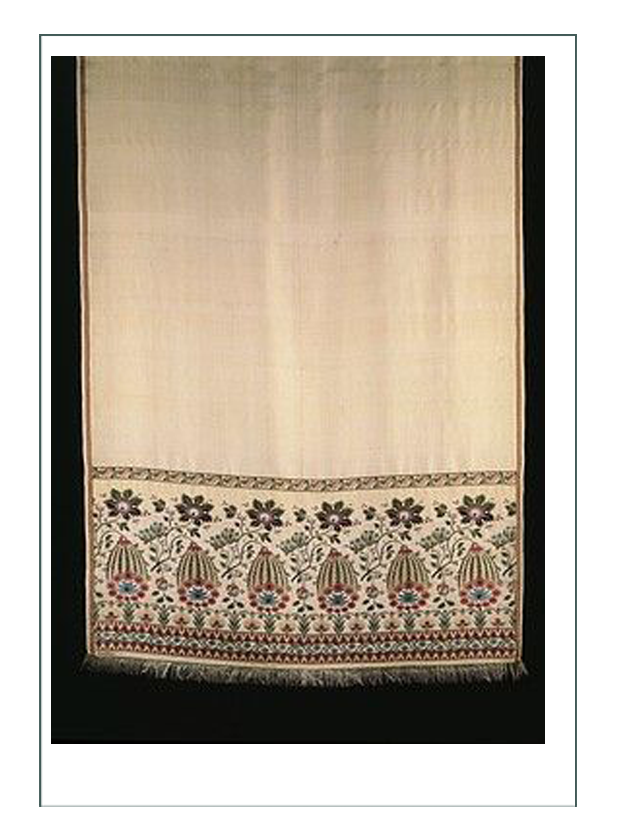
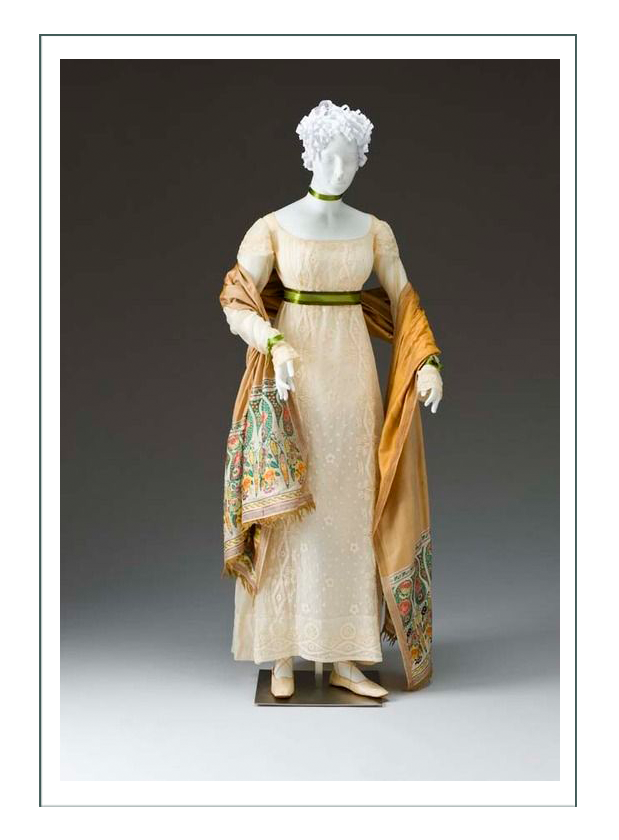
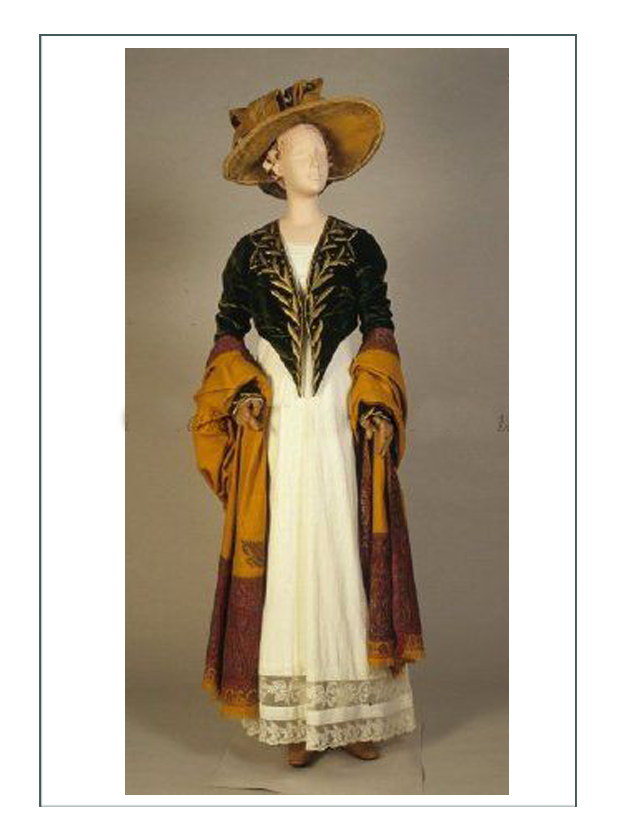
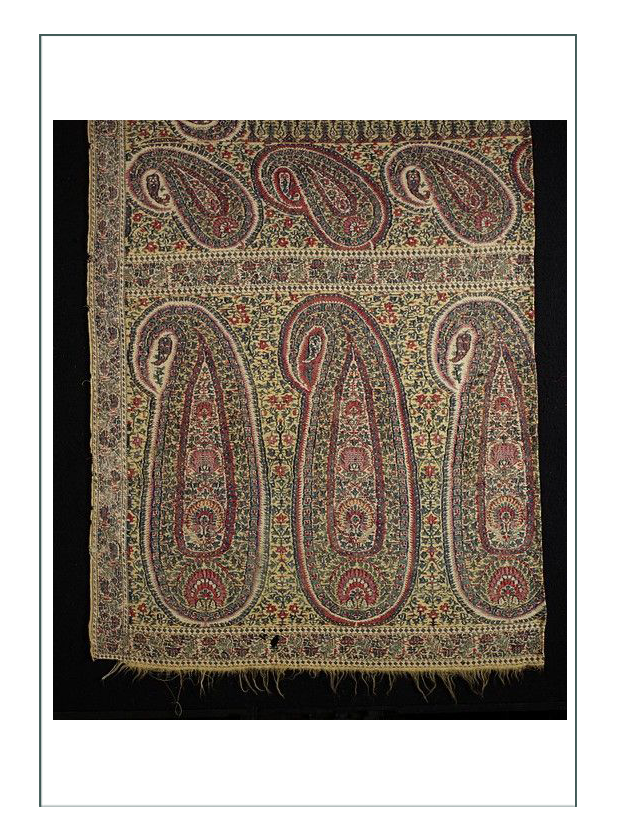
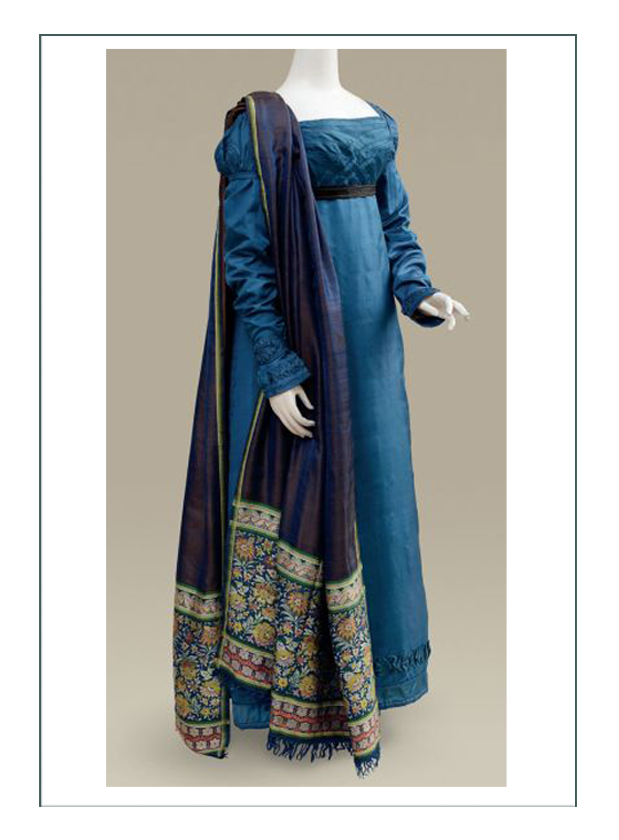
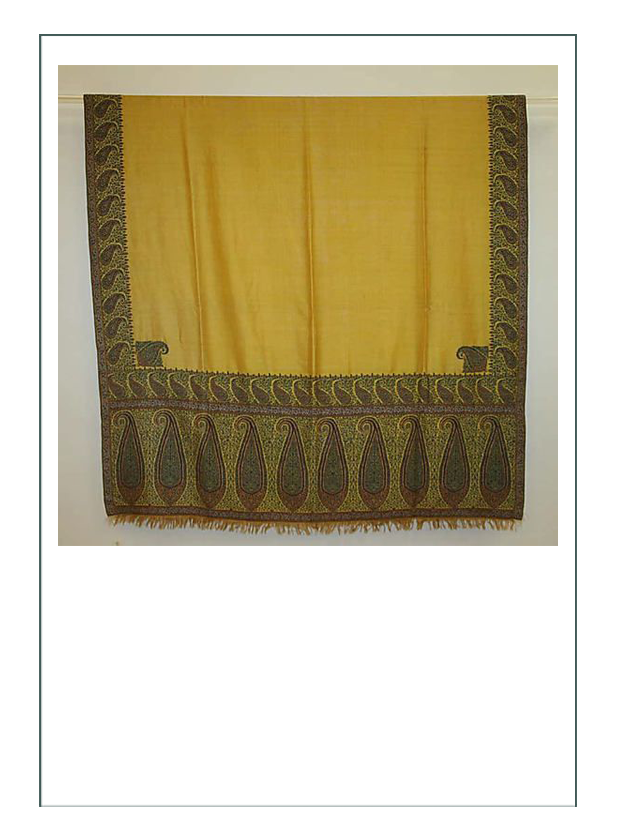
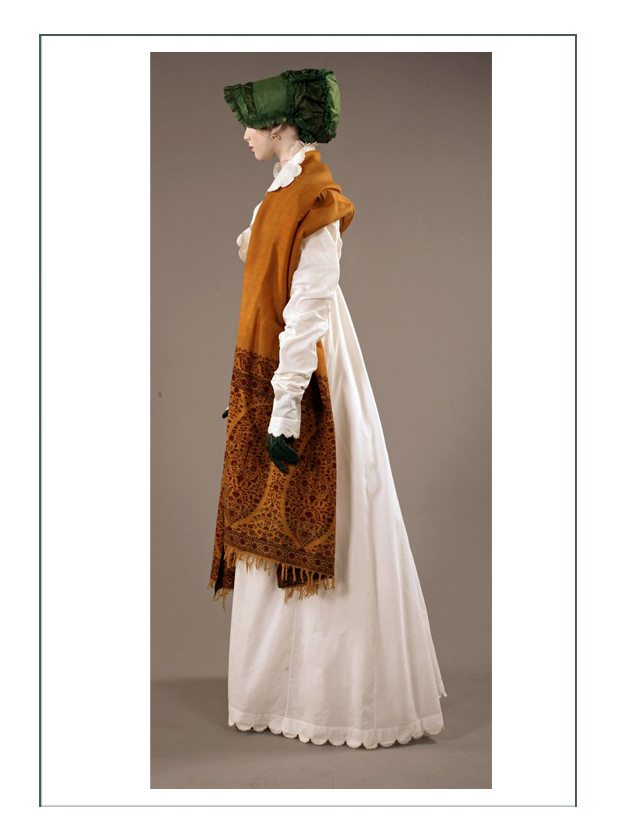
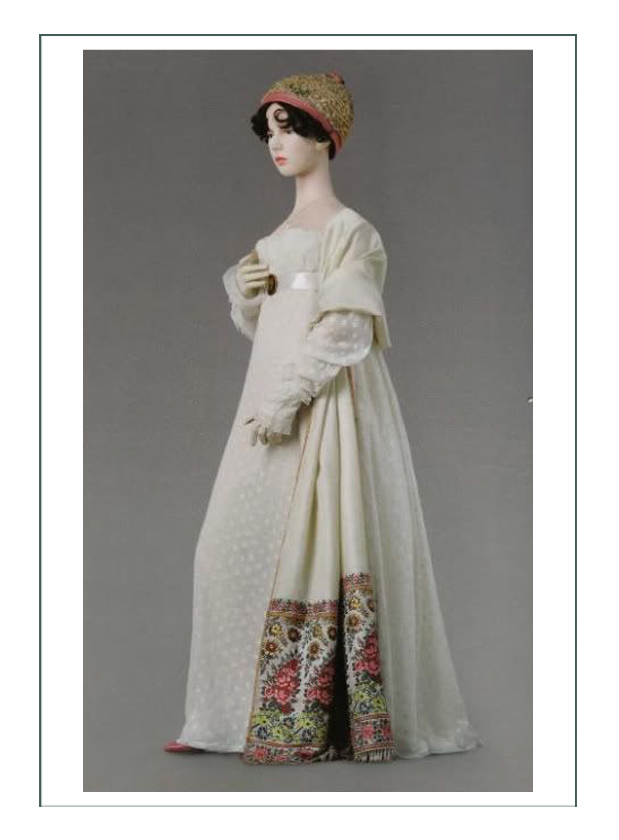
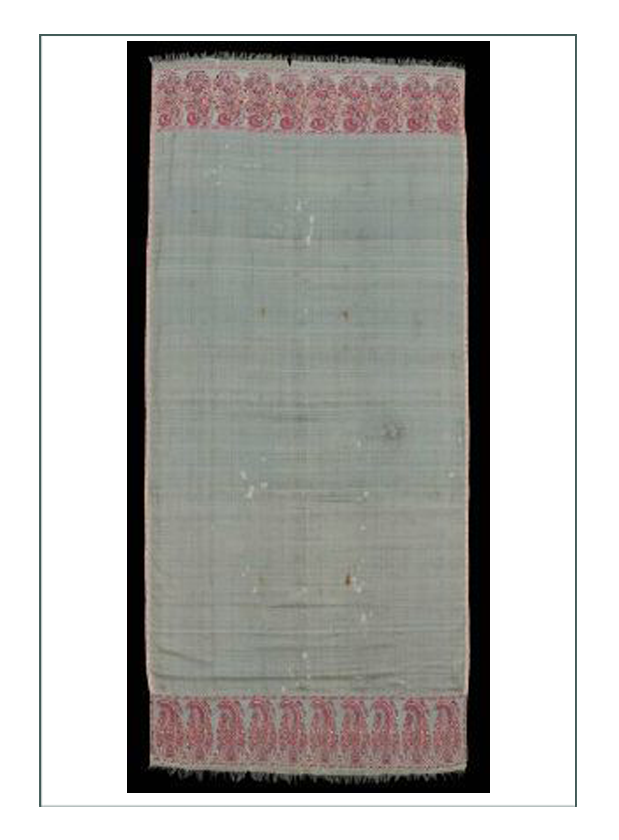
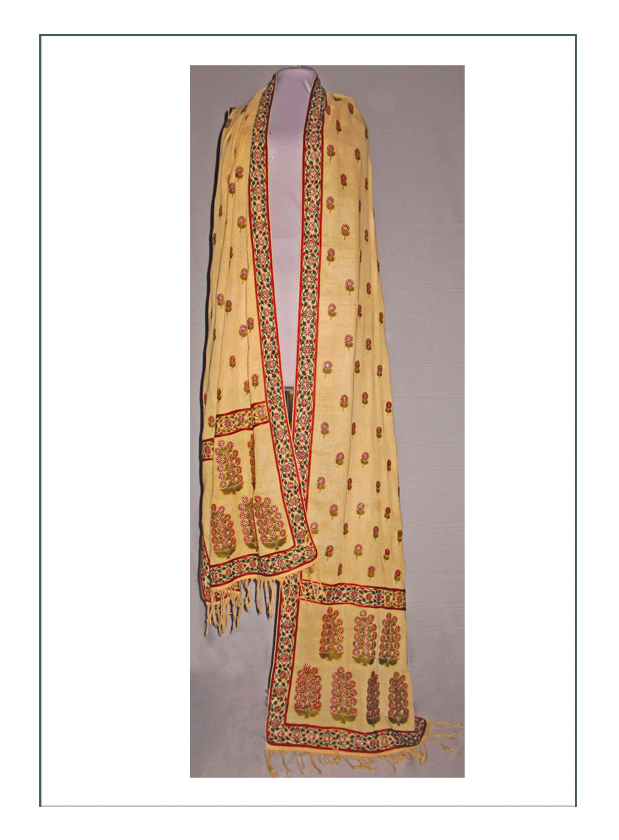
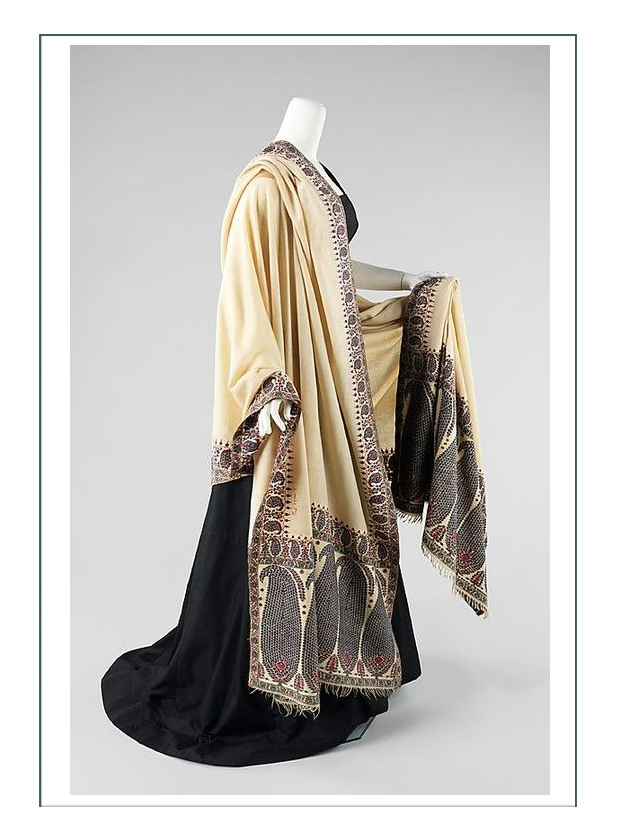
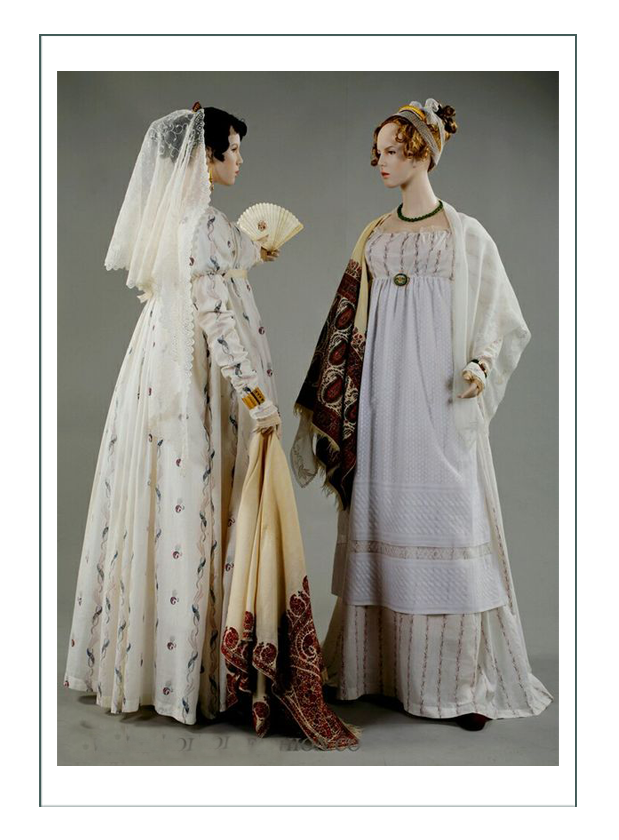
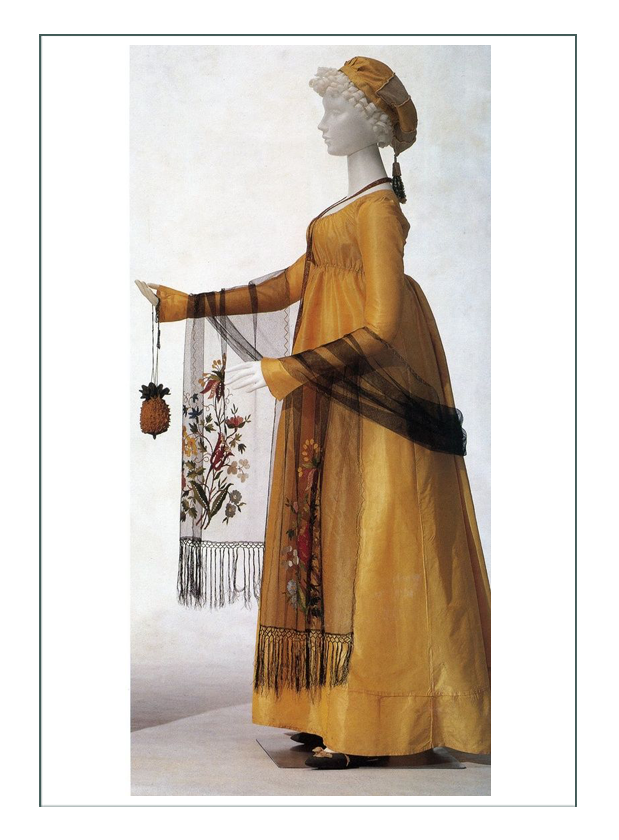
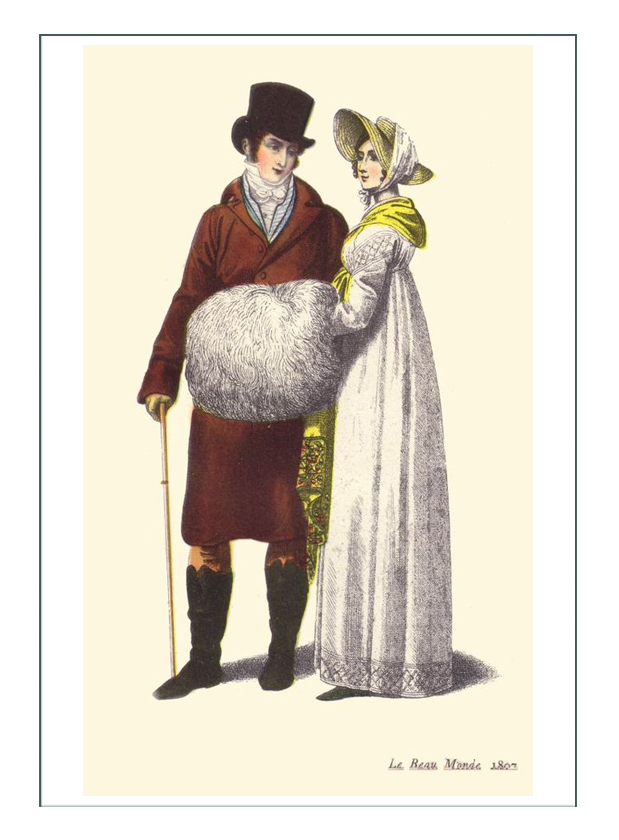
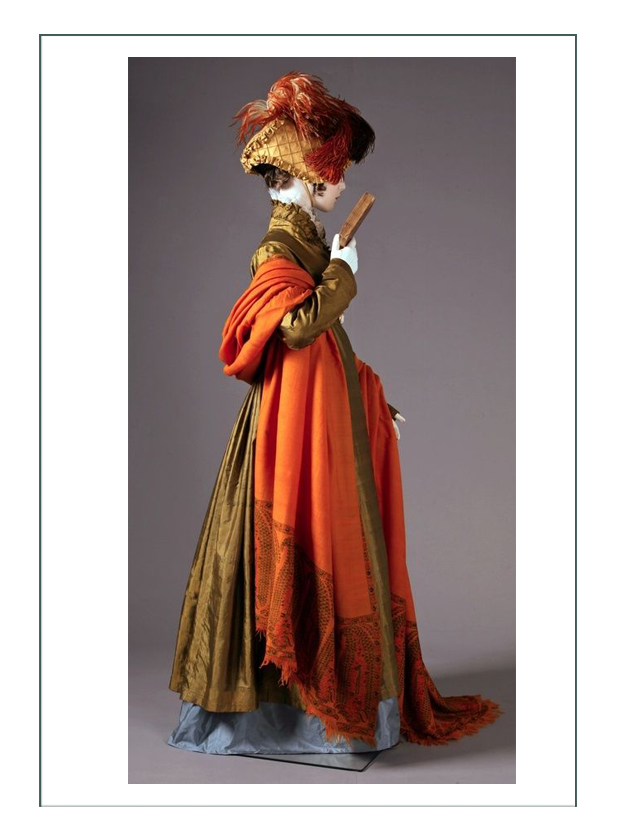
GENERAL FASHION – COLOR & FABRICS
- Matrons wore rich colors (purple, black, crimson, deep blue, gold) & showed their breasts
- Maidens wore pastels in subtle shades like periwinkle, pearl, & lilac & showed their breasts
- Because of conflict between classes & political factions in England & France, it was not safe to be seen in silk, velvet or luxurious fabric early in the era, because it would indicate you were aligned with a certain party
- After Napoleon took office, the luxurious fabrics & trimmings were desired in the imitation of Josephine
ACCESSORIES
- Most “regular” women were not exhibitionists, & wore tuckers, fichus, & scarves to keep so much skin from being exposed
- “Chemisettes” (fake blouse-like chest coverings that tucked into the bodice of the dress) were favorites for covering up & keeping warm
- Flat slippers were worn with no right/left
- While some shoes had small narrow heels, most were flat or sandal like
- Women in court would follow the Greek example by lacing up the entire lower leg in pearl-strewn straps
- Women & men added metal pattens to keep shoes out of the mud
- Pattens were metal snowshoe like structures made for a specific shoe or several shoes
- Turquoise blue was a favorite shoe color, although they often matched shoe color to dress color
- Gloves were a “must have”; they were long when sleeves were short, & full length always for evening regardless
- When sleeves got longer, gloves got shorter & more fanciful
HEADWEAR
- All extravagant wigs, trims, plumage was discarded
- Hair was washed regularly & left unpowdered with no false hair added
- Hair was as the ancient Greeks & Romans had worn it: with tight curls on the head & braided & worn up
- Turbans were a favorite. These had tall feathers. The higher the better
- Head bands & ribbons were abundant & also per ancient models of Greek laurel wreaths & crowns
- The first woven straw hat in America was invented in 1798 by a 12 year old girl in England
- The straw hat was mostly worn by sailors at this time
- The straw hat craze created a new export for England to worldwide ports
- When America went to war with Mexico in 1846, the army wore only straw hats
- Straw hats would eventually replace the turban & wrap, but not yet>
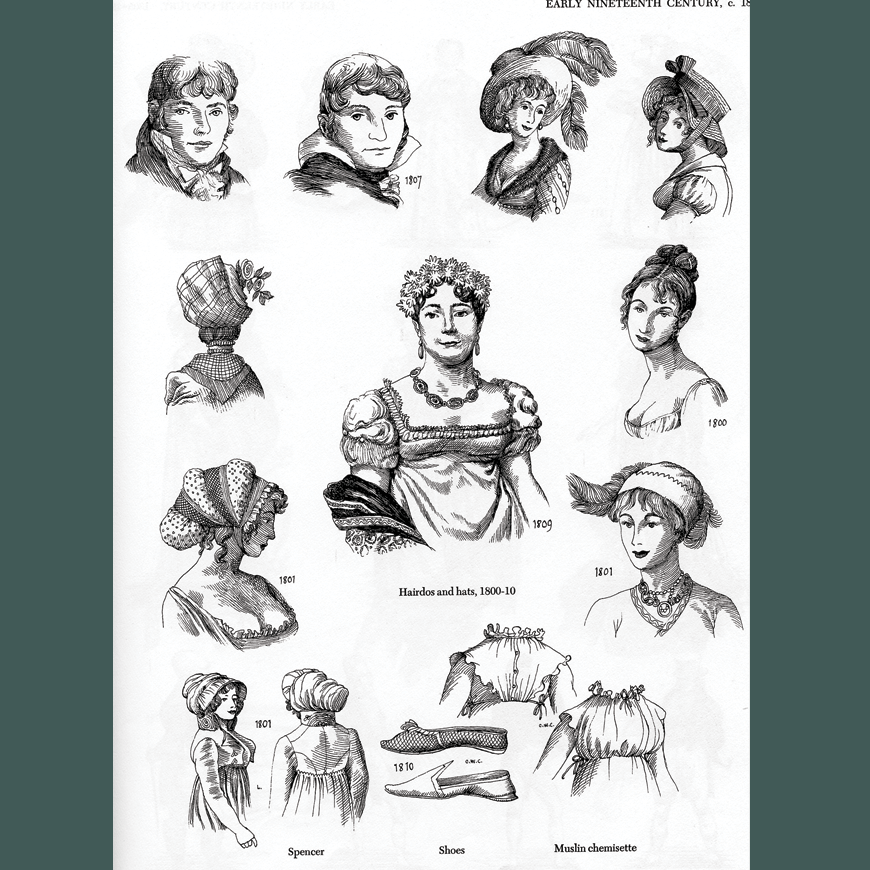
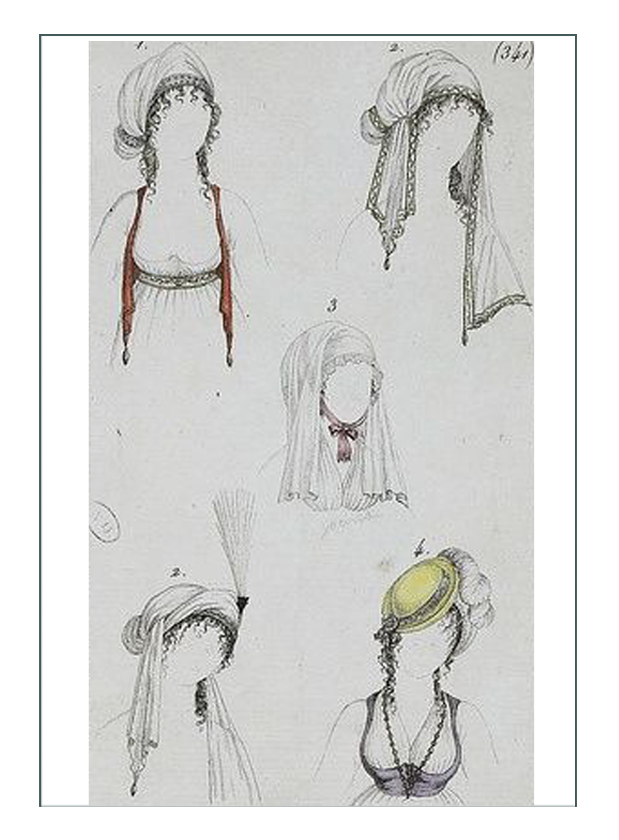
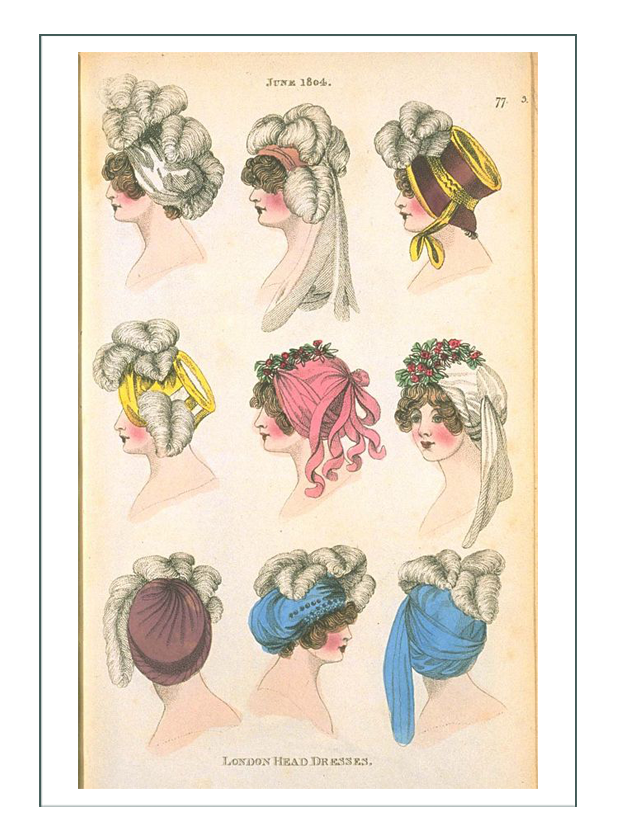 Click here to return to top of page
Click here to return to top of page

Historical & Influential Women of Europe 1805-1810
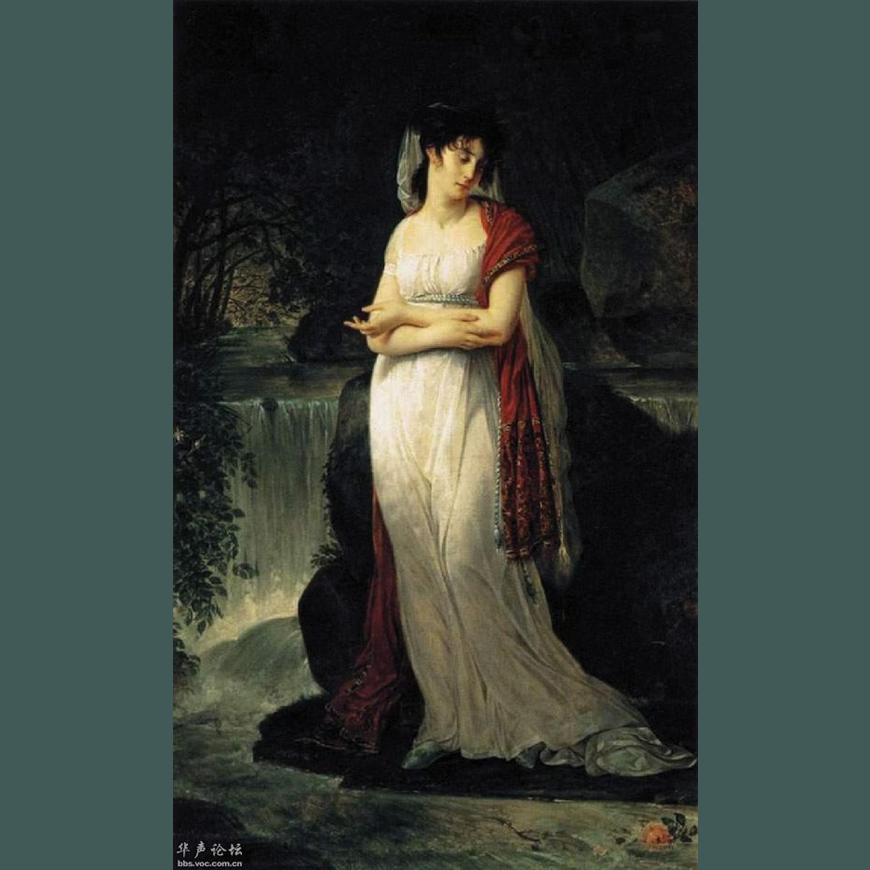
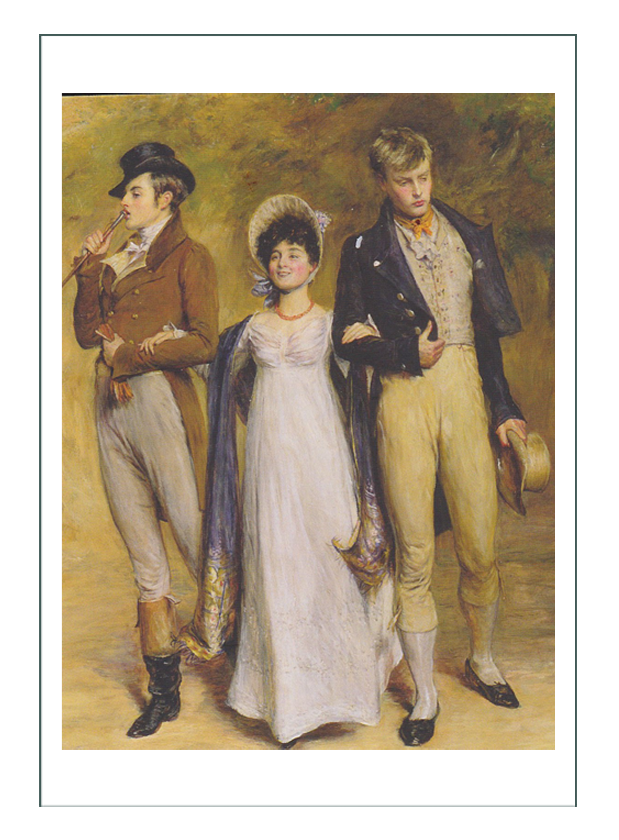
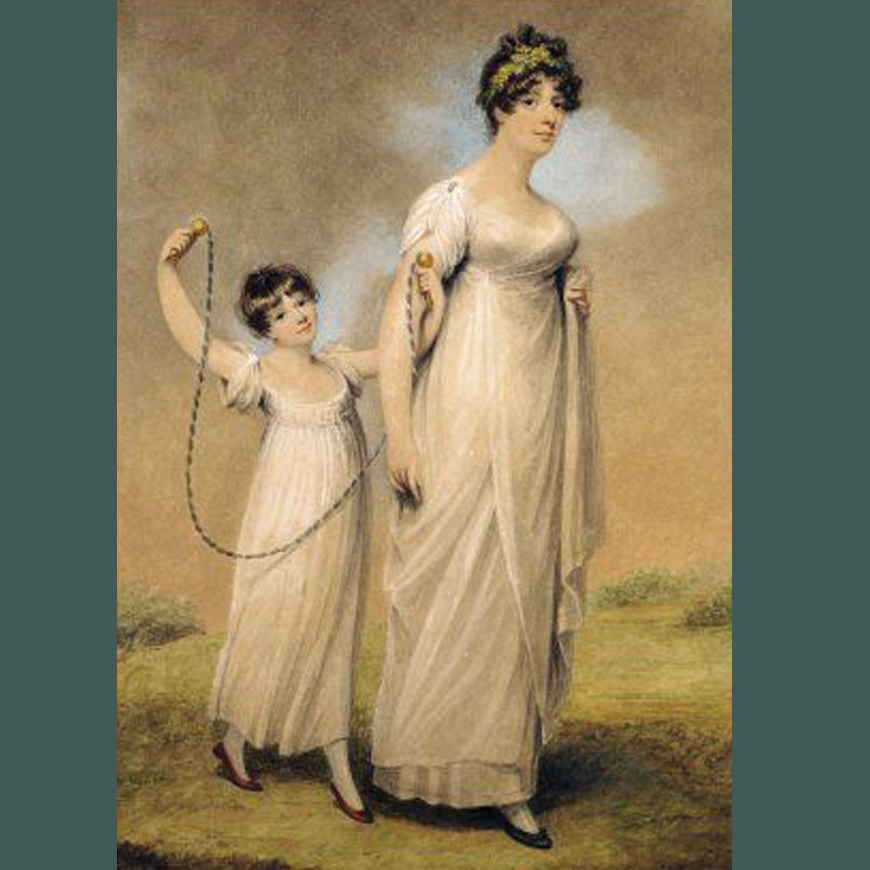
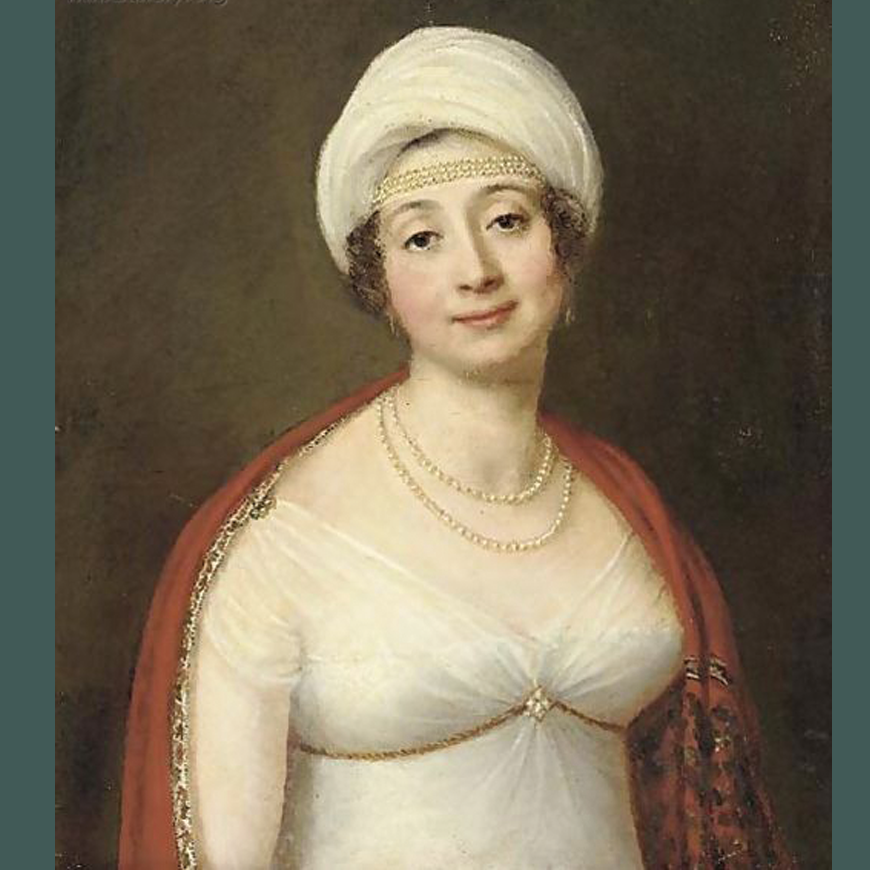
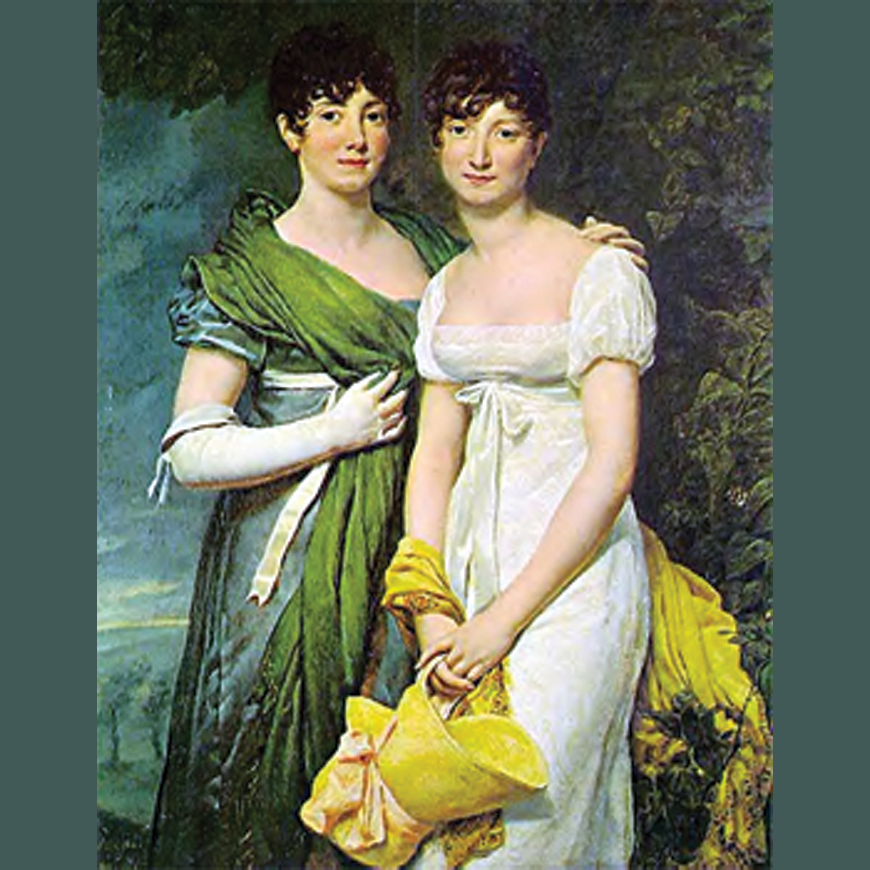
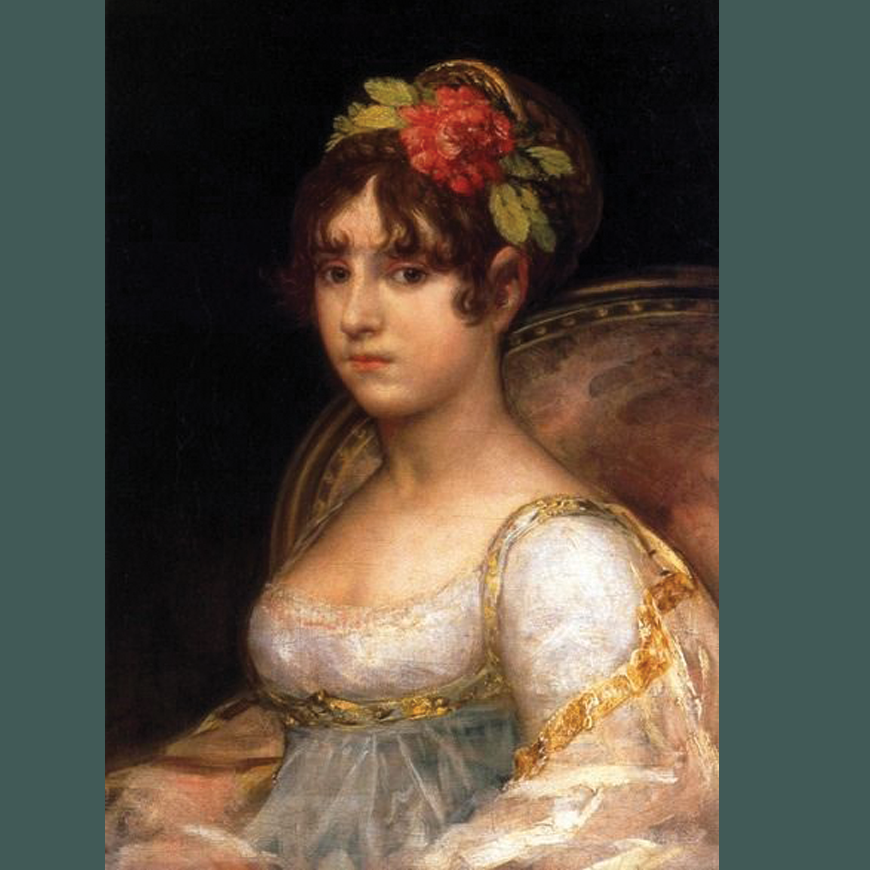
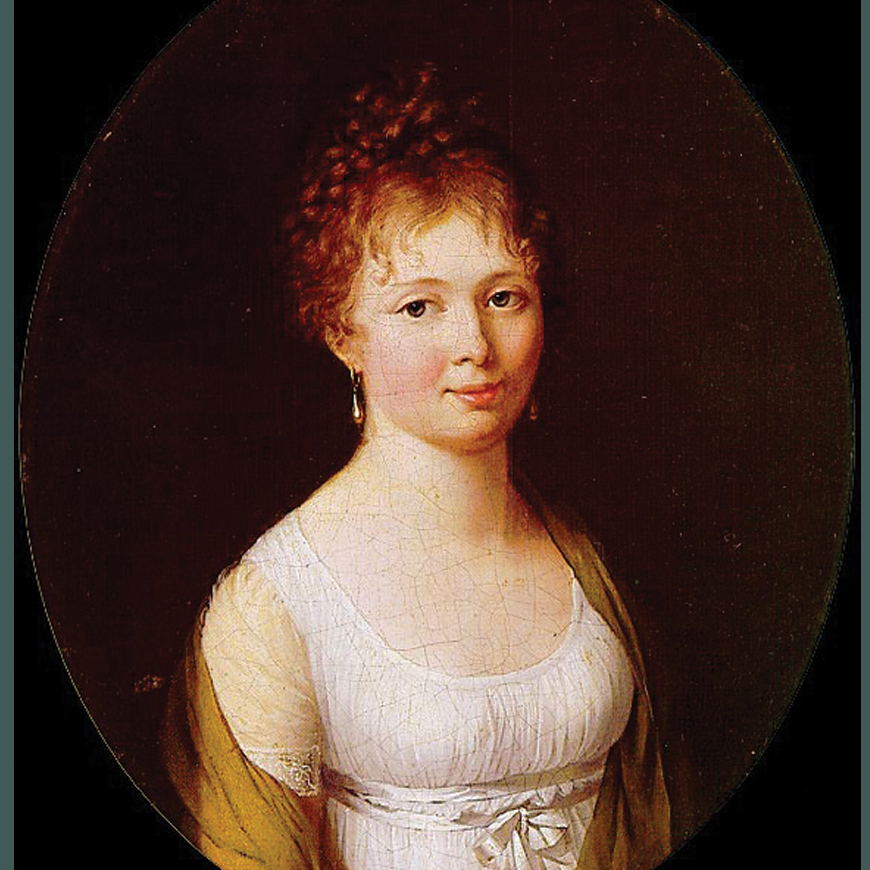
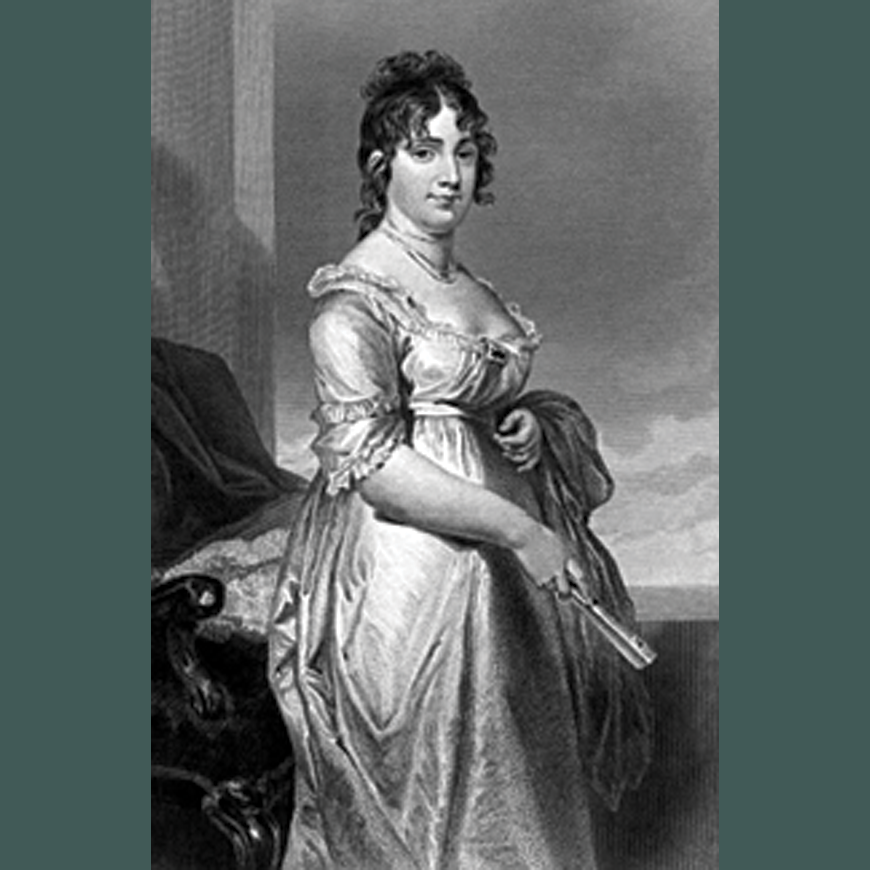
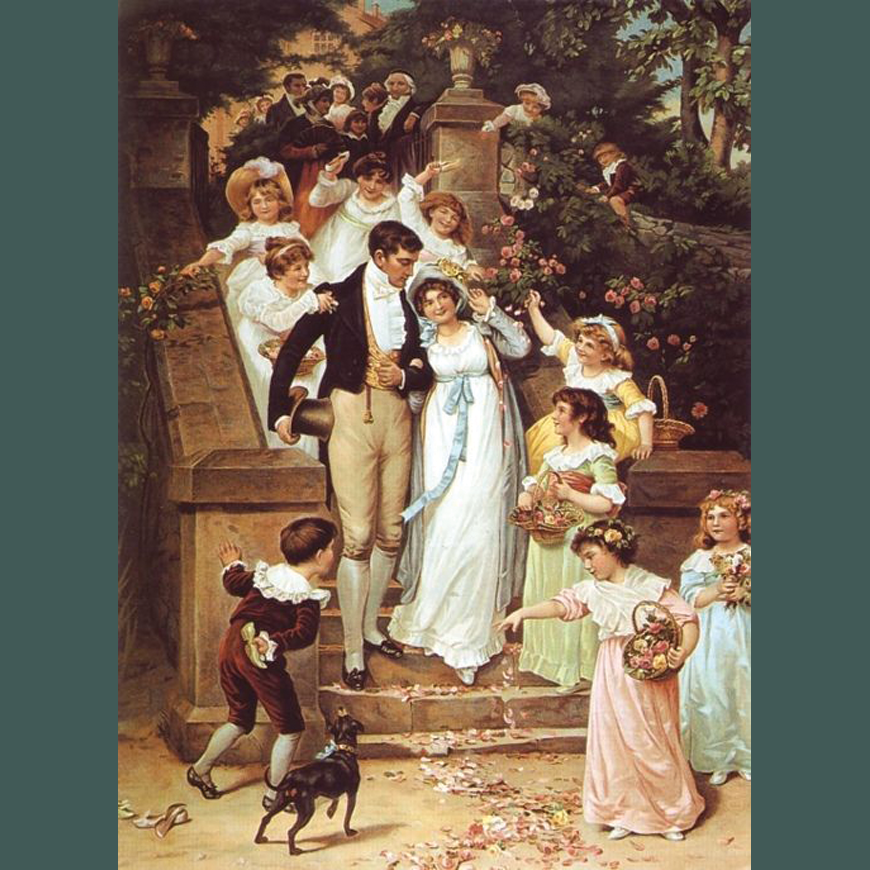
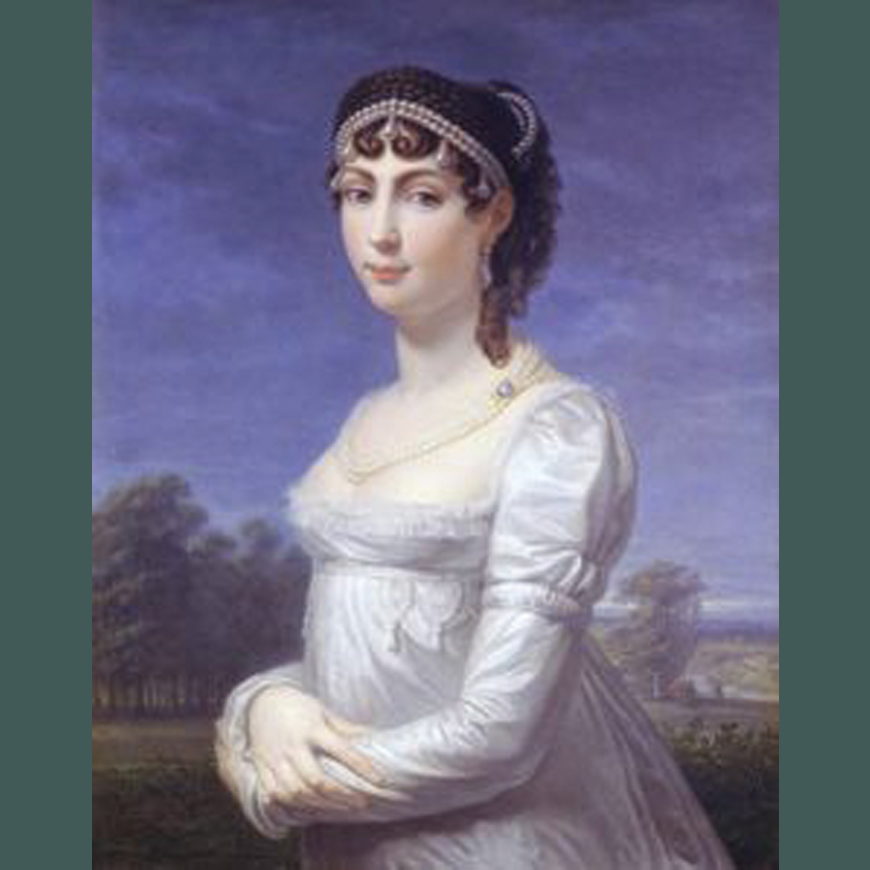
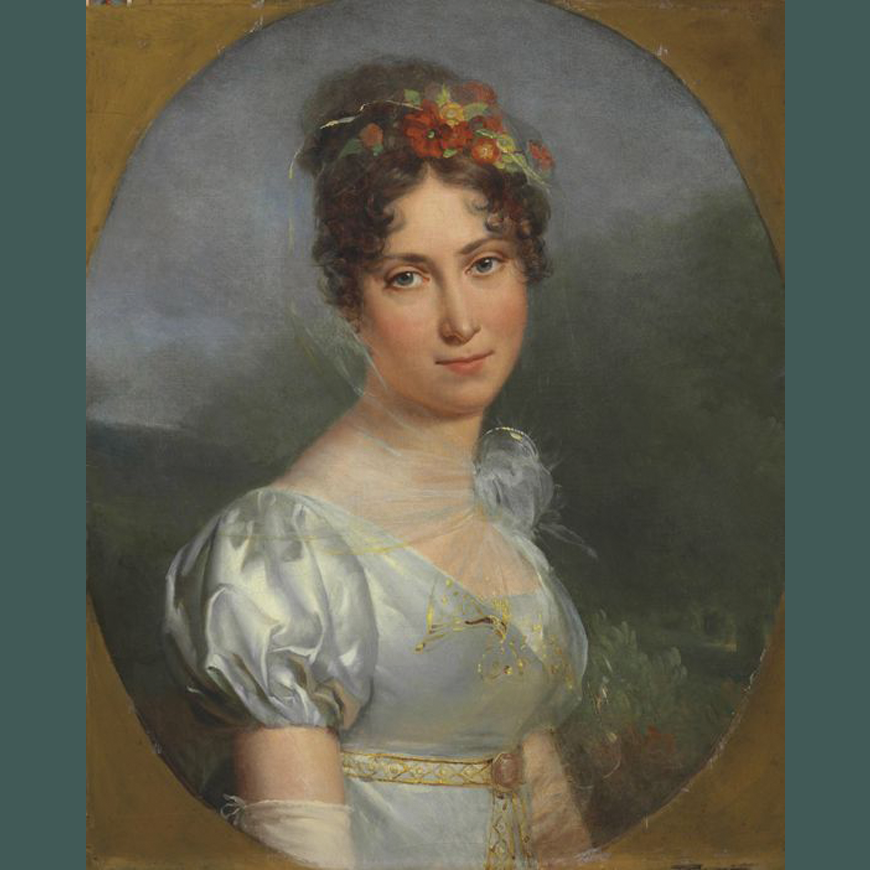
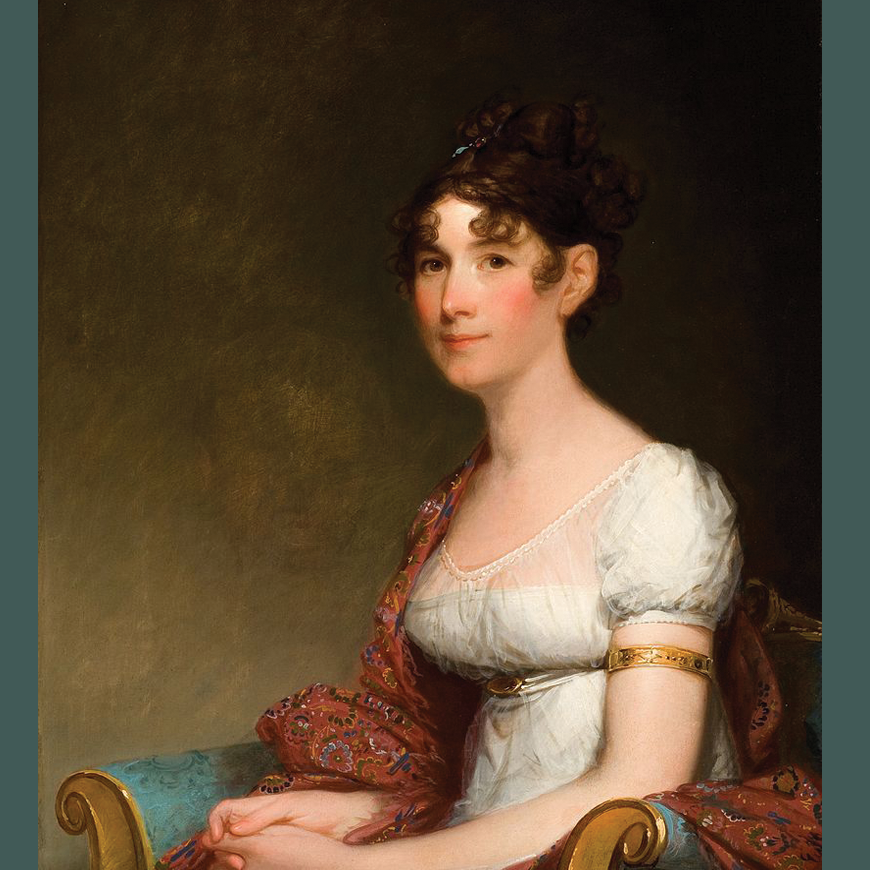
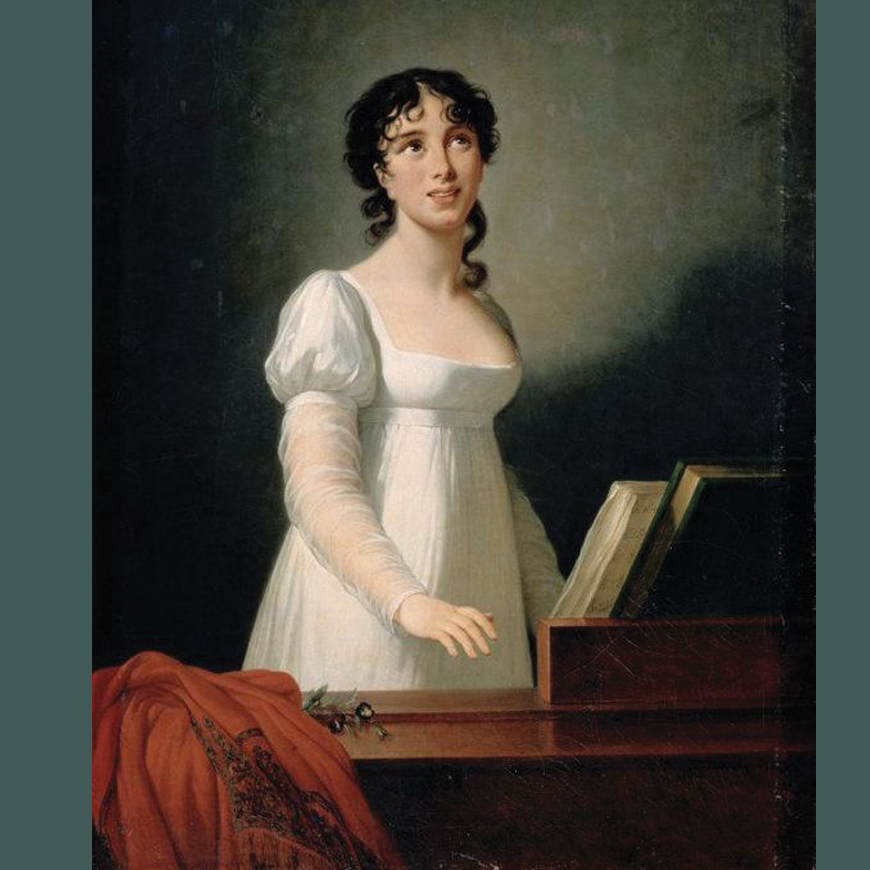
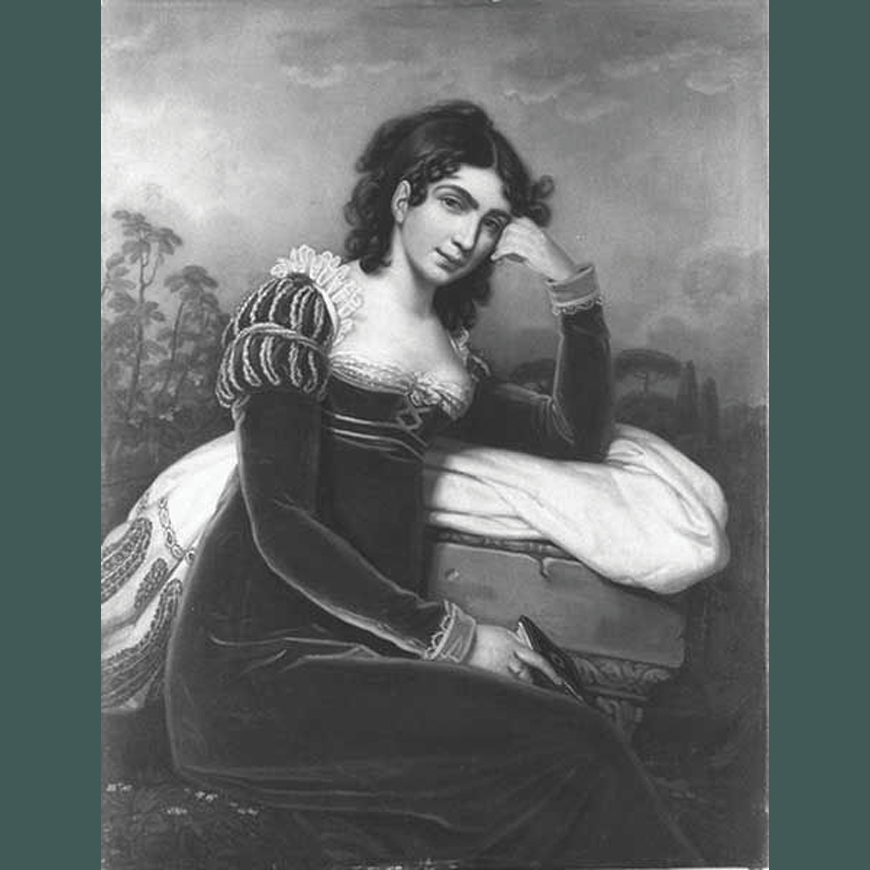
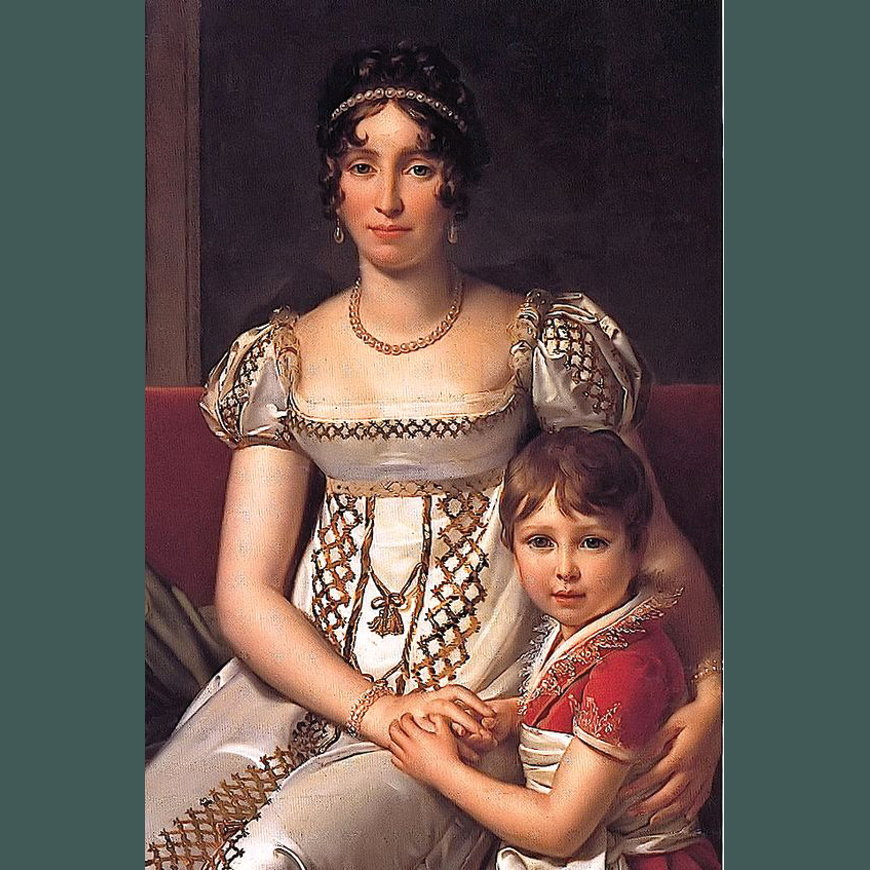
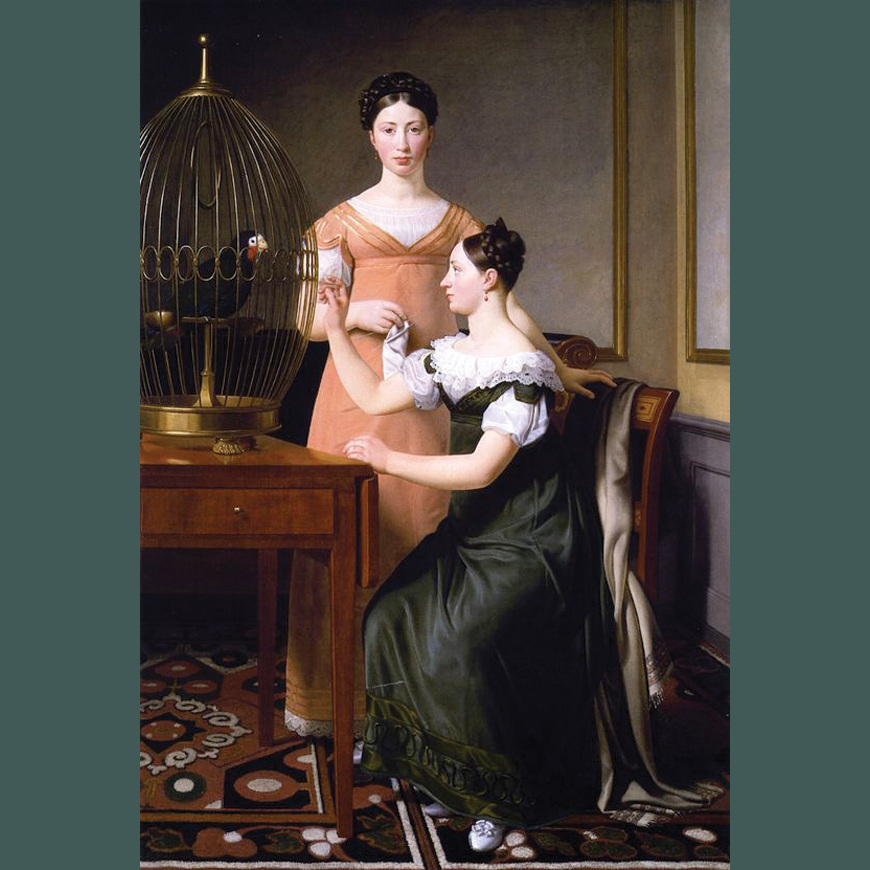
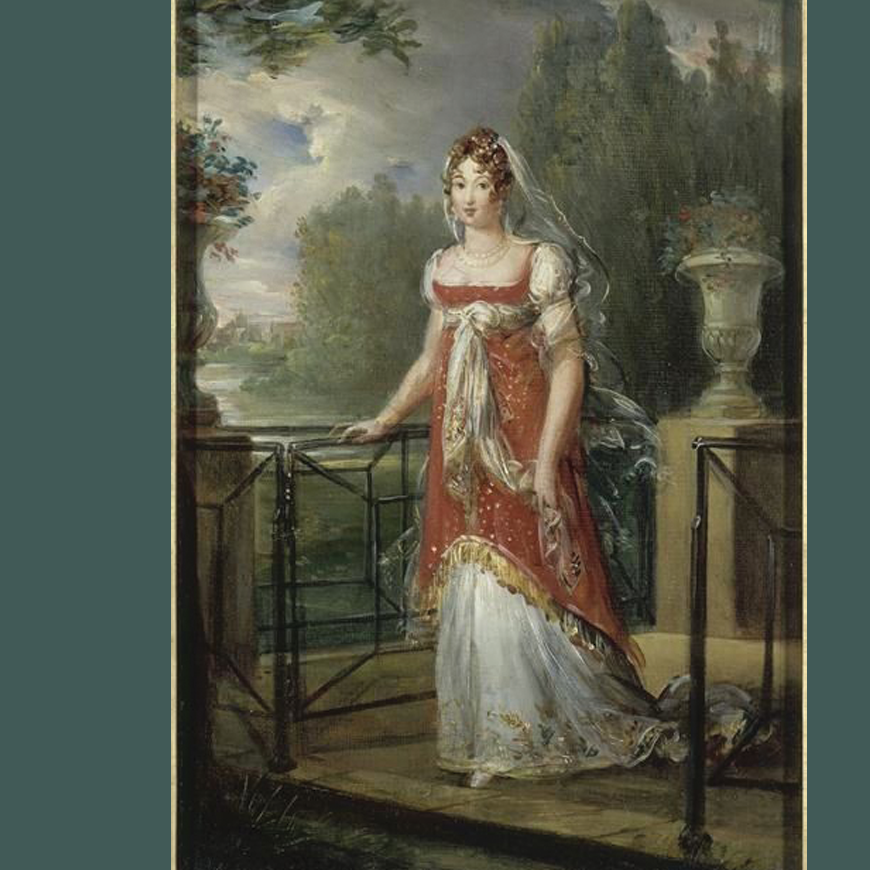
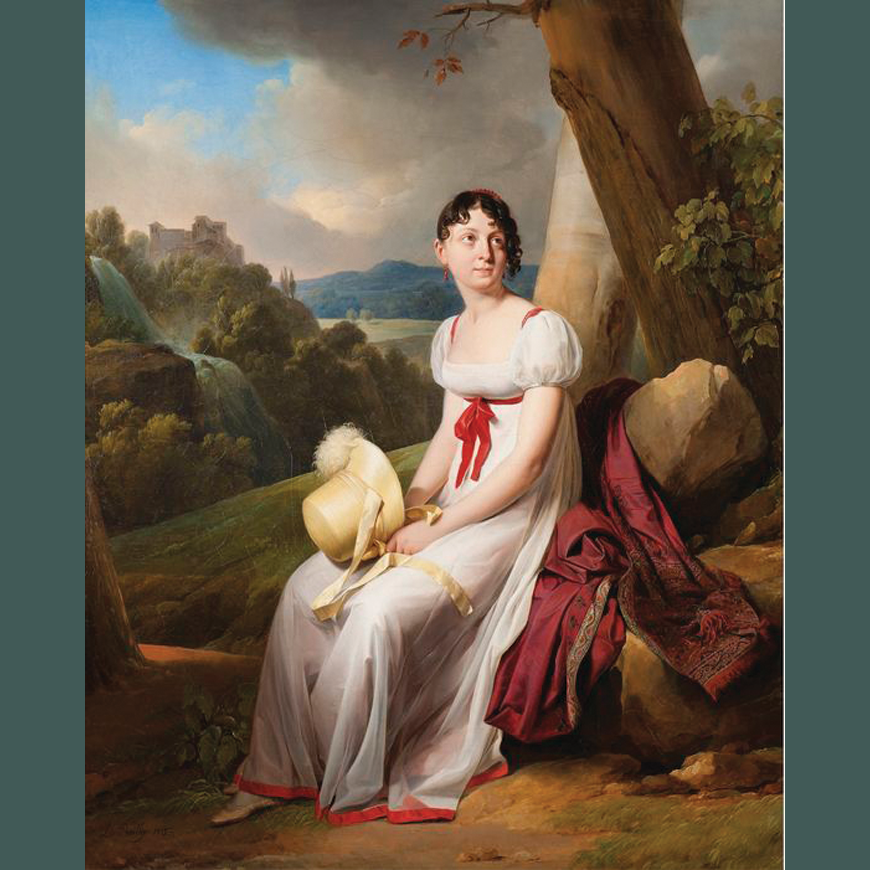
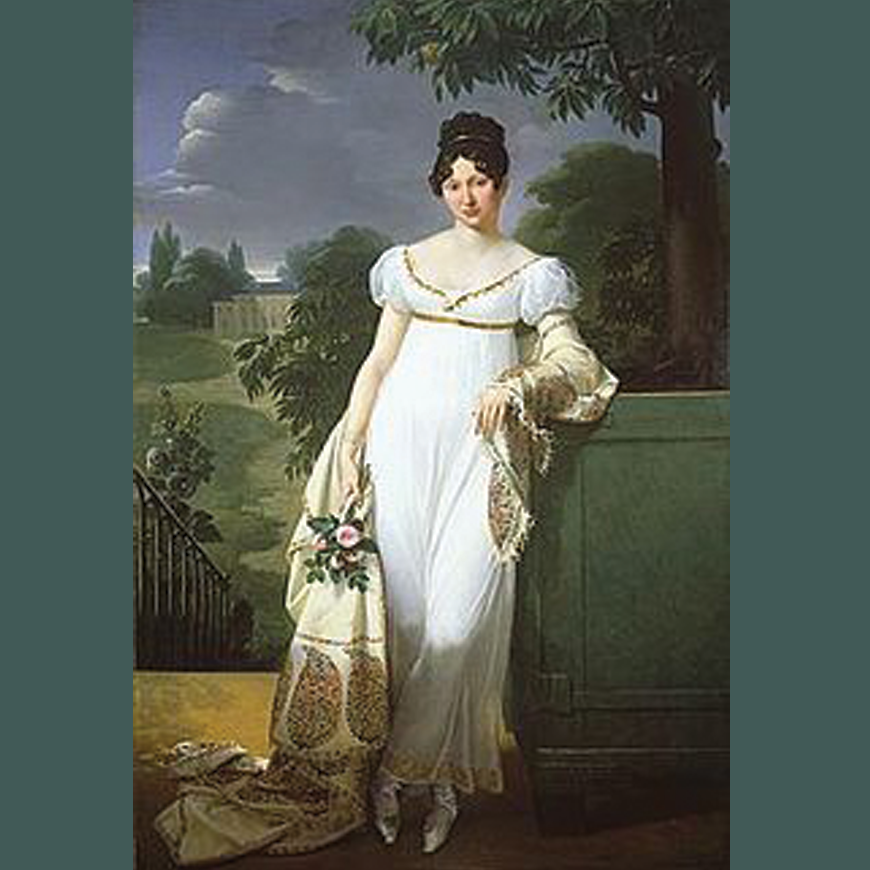
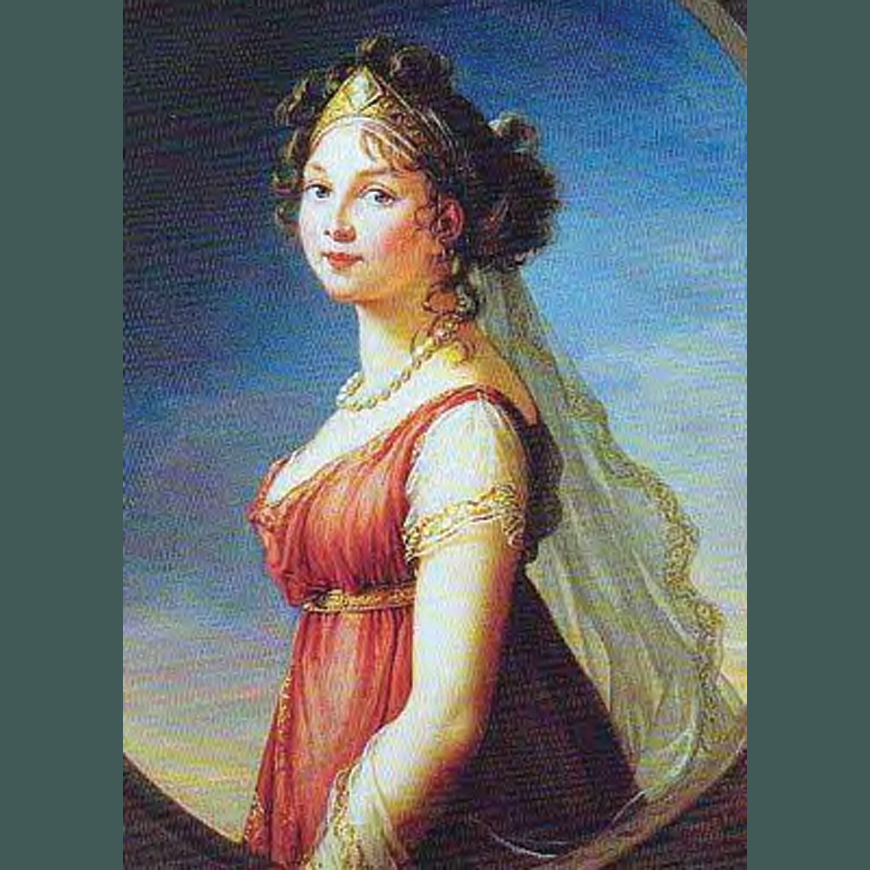
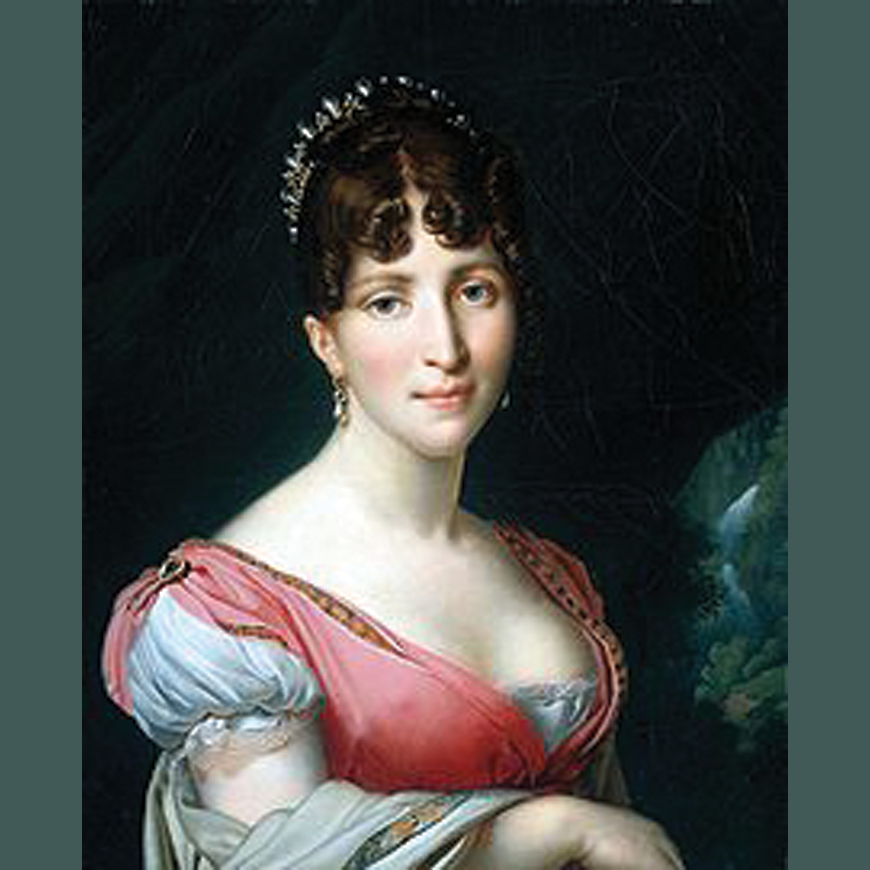
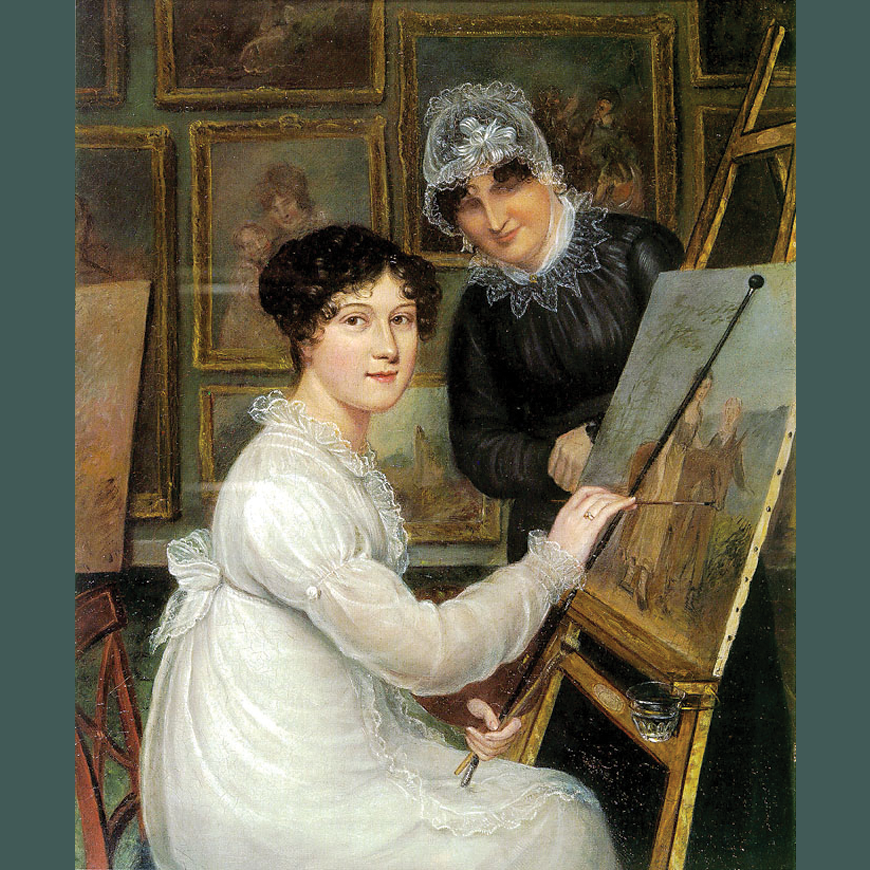
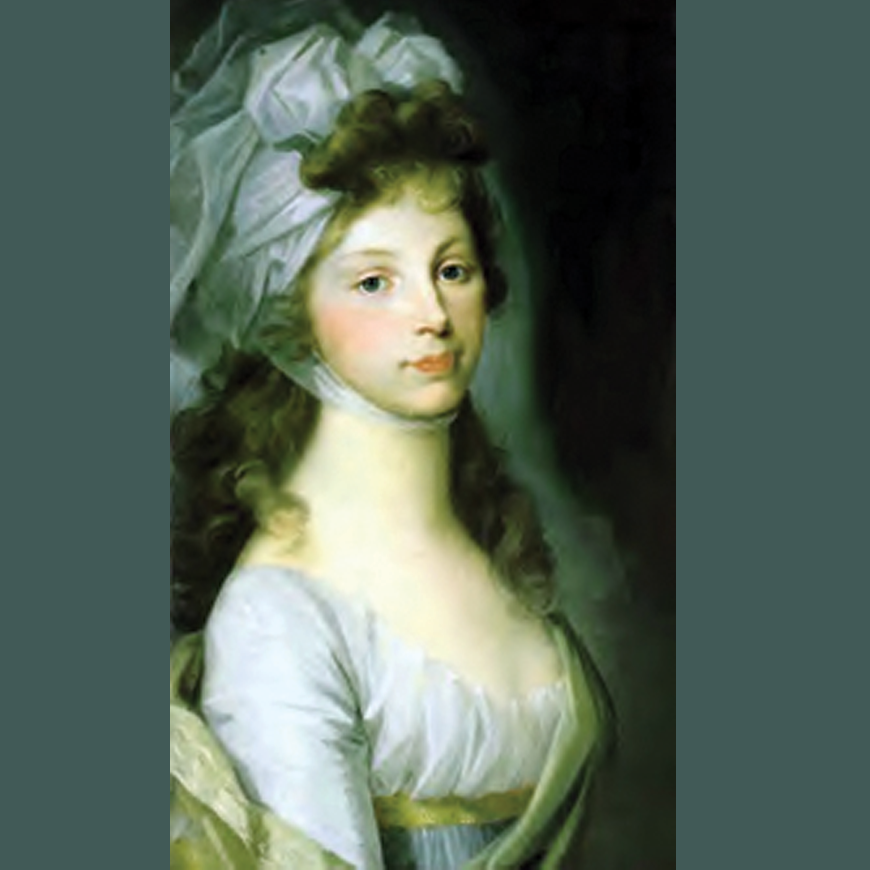
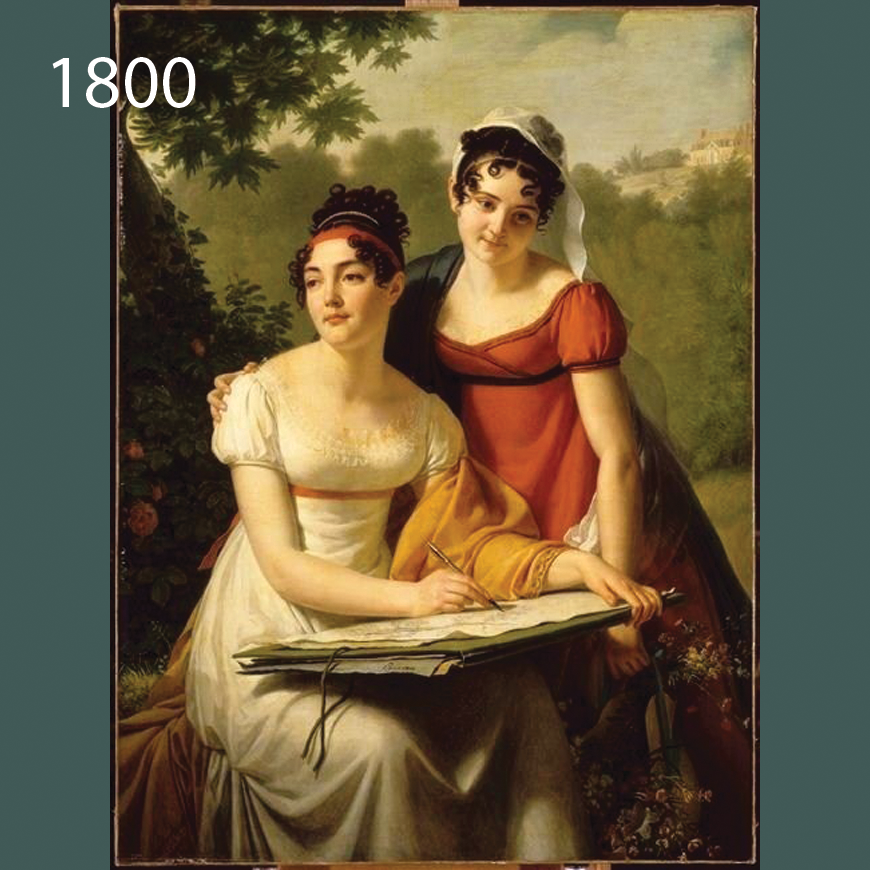
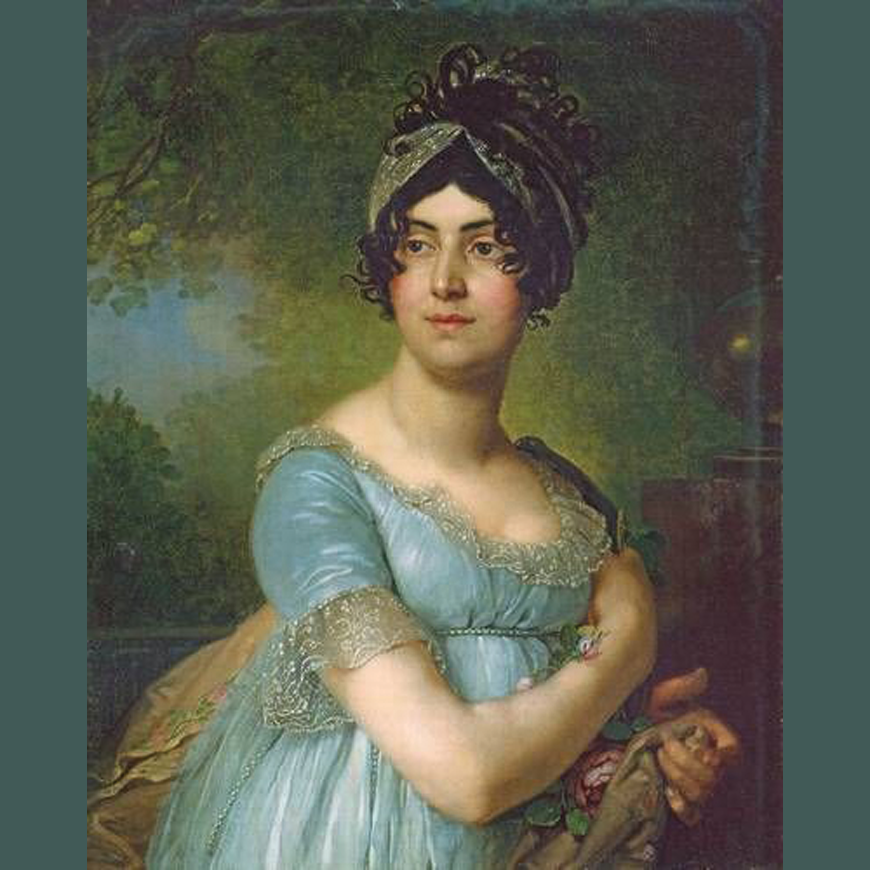
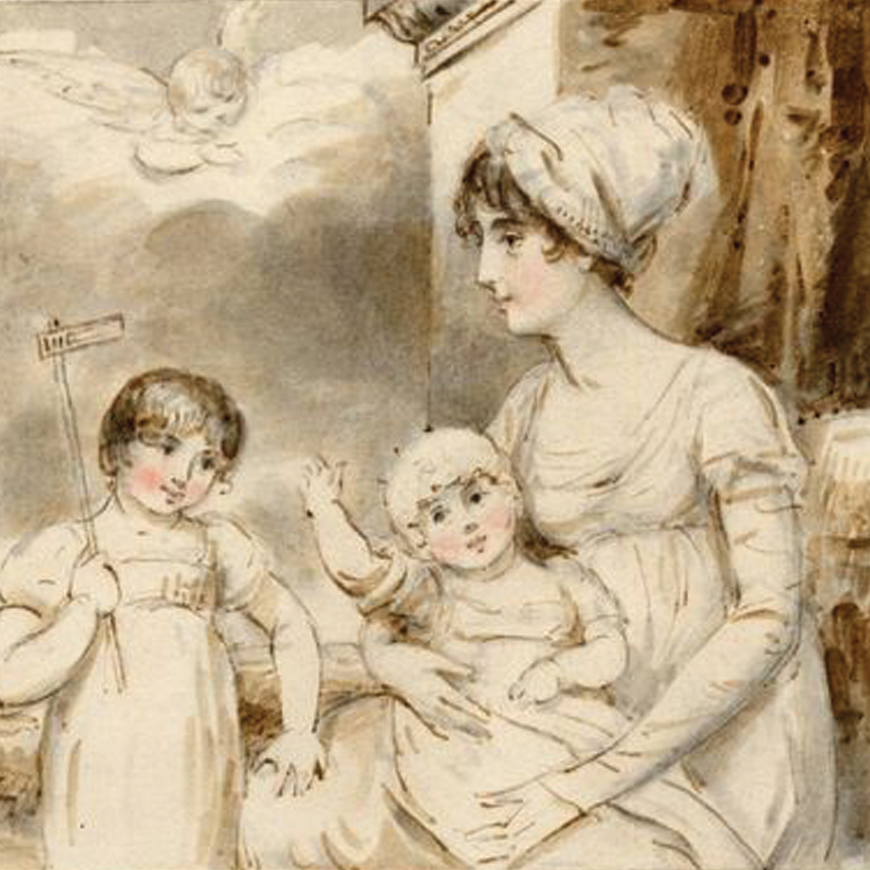
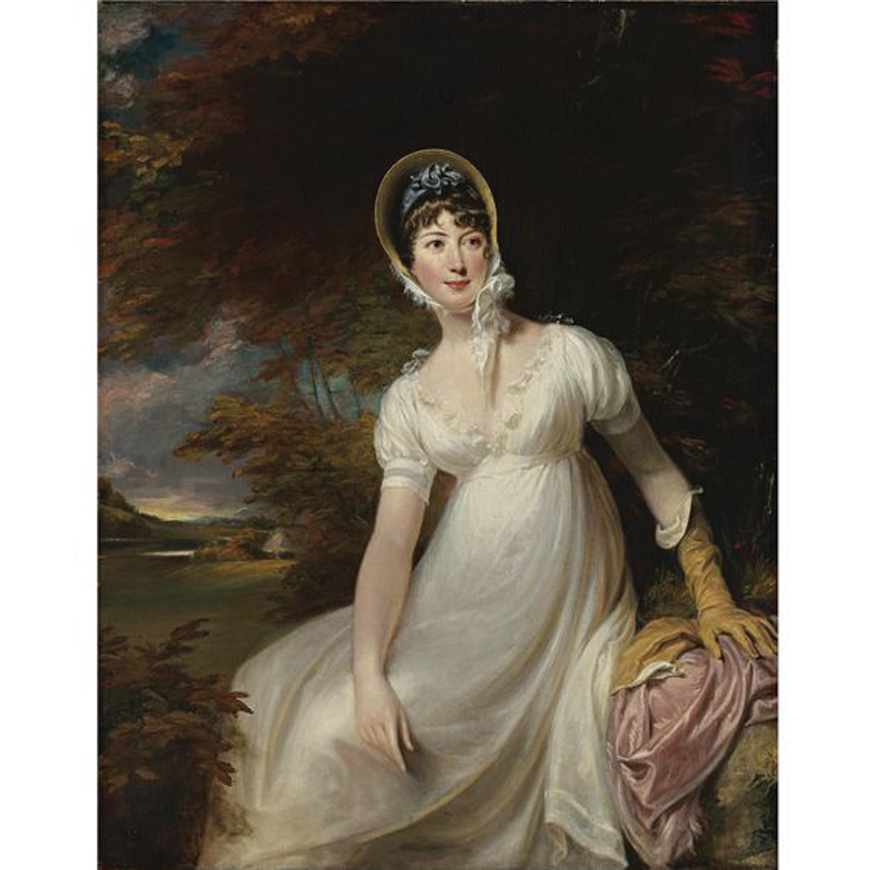
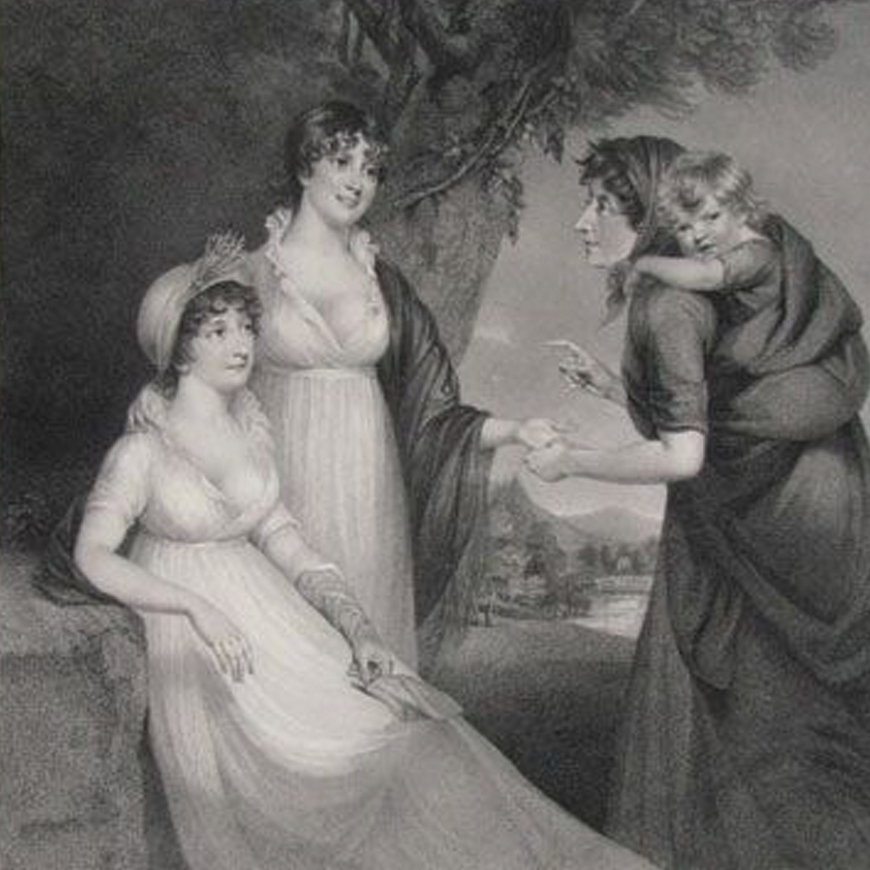
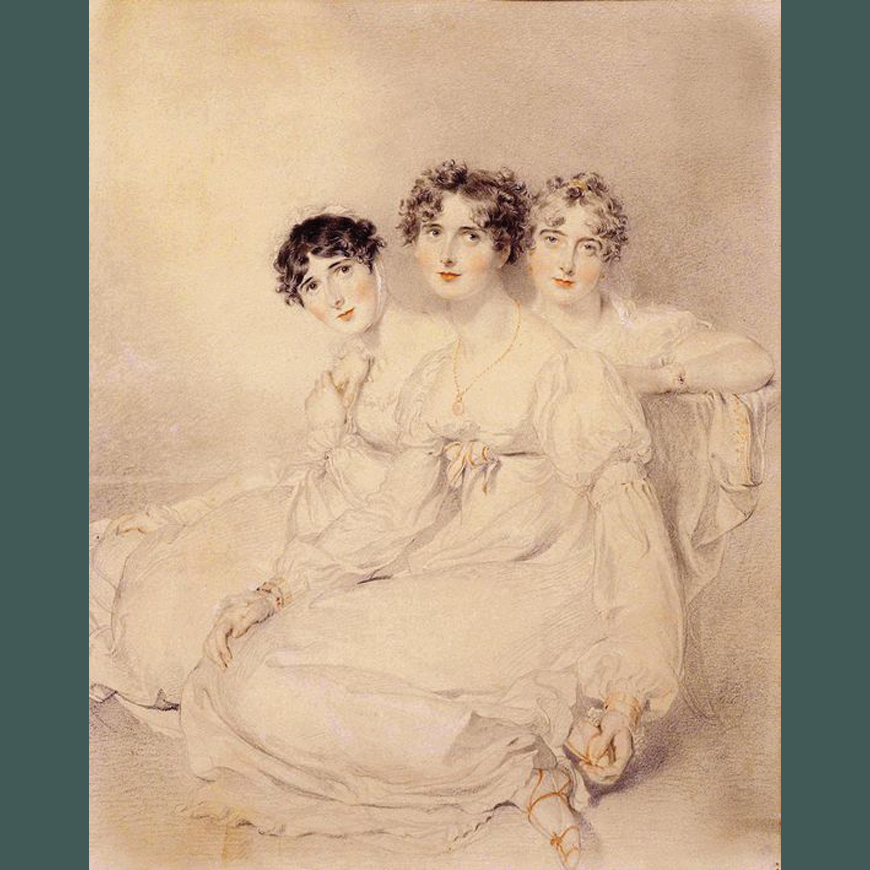
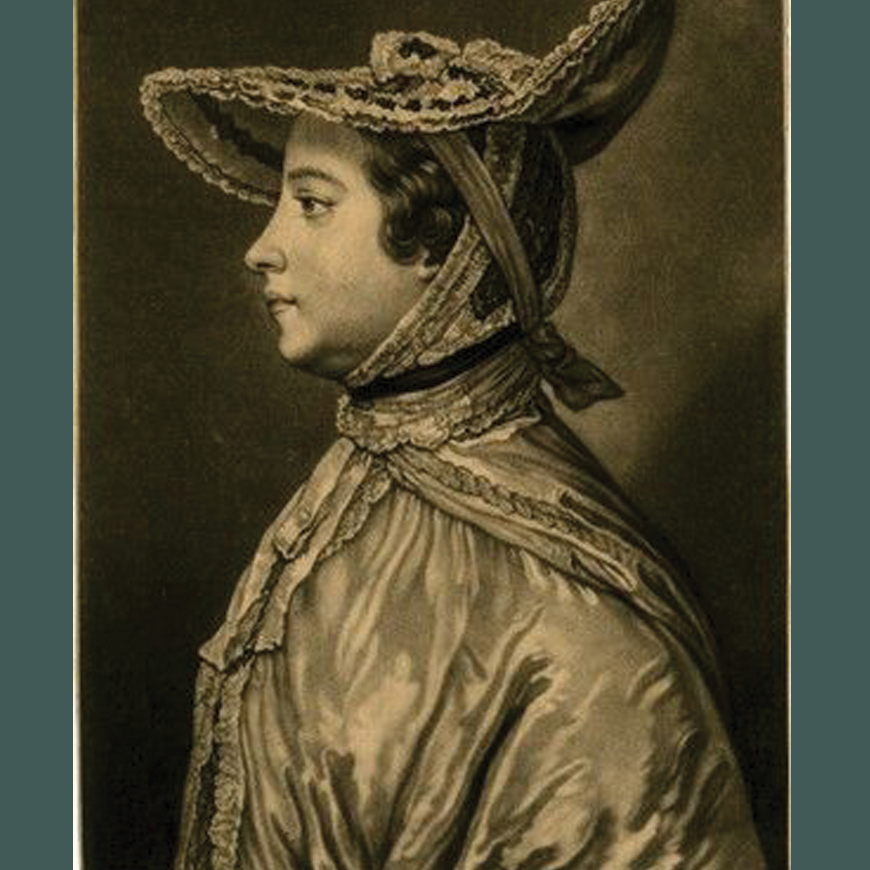
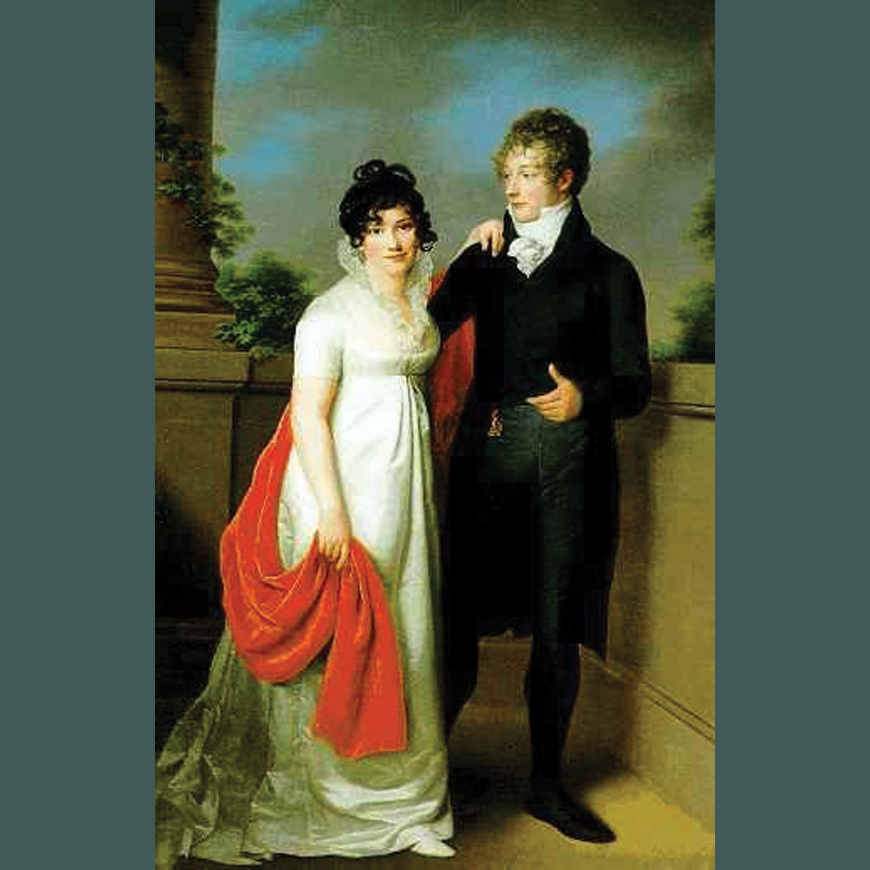
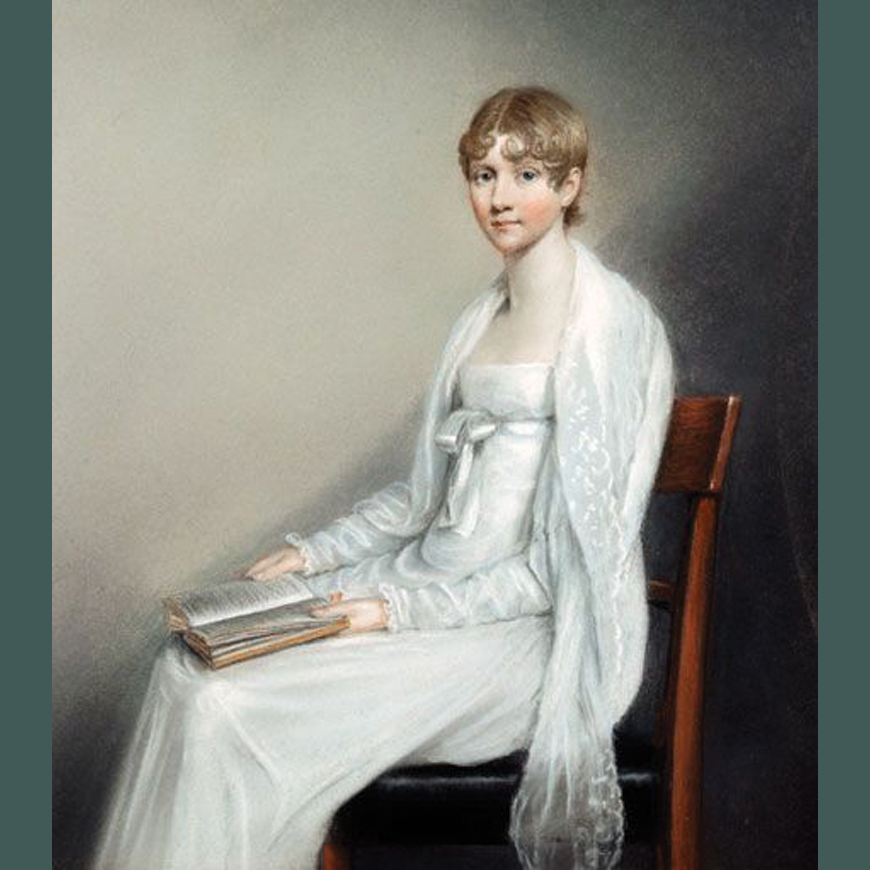
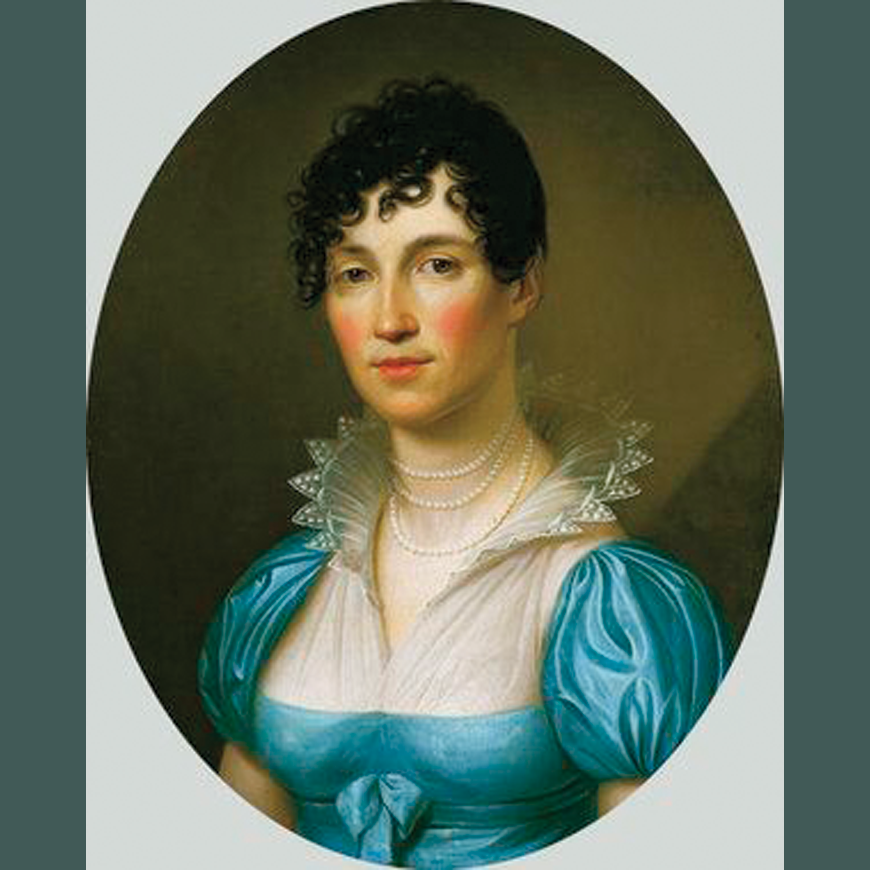
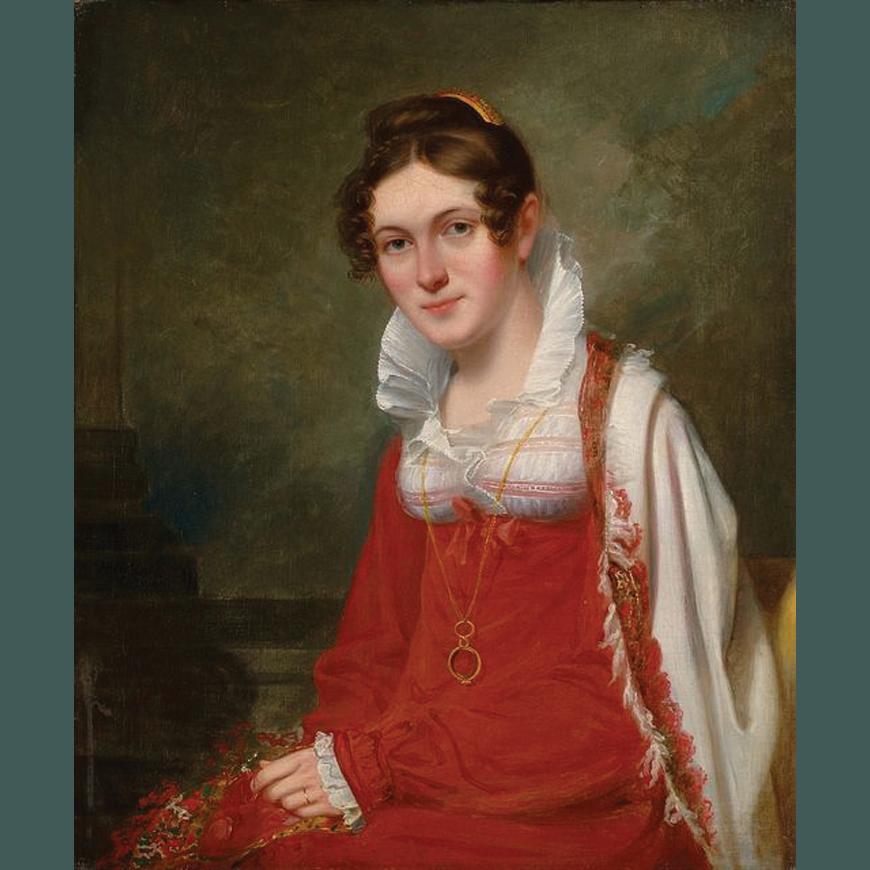
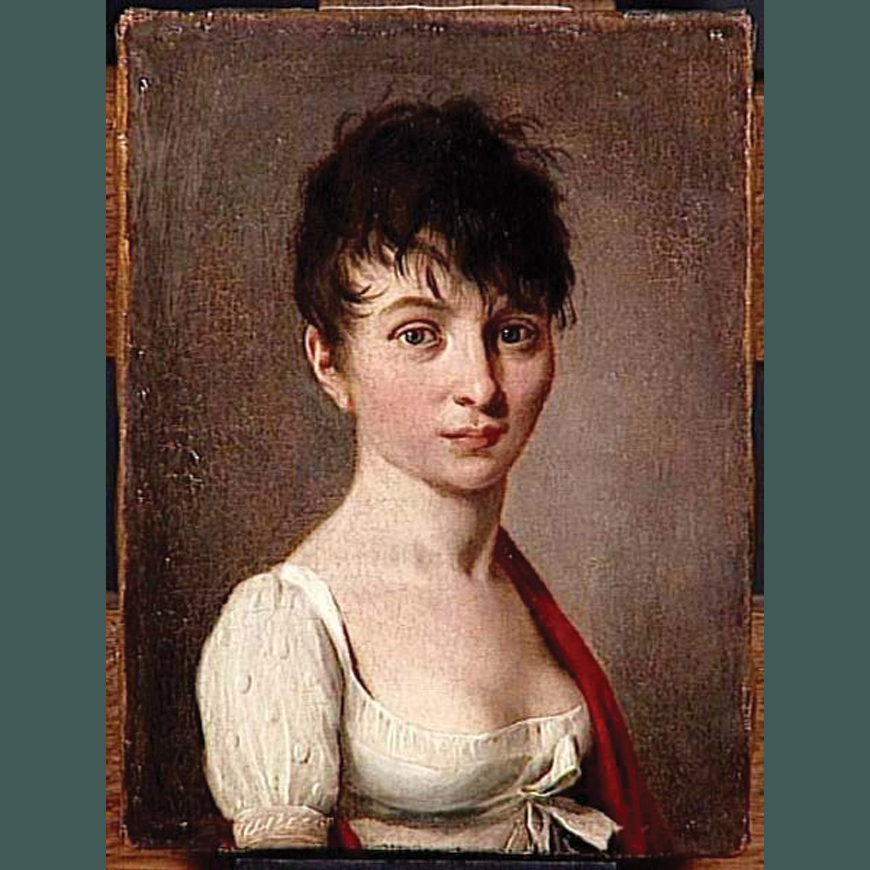
 Influential Americans & American Specific Fashion Portraits
Influential Americans & American Specific Fashion Portraits
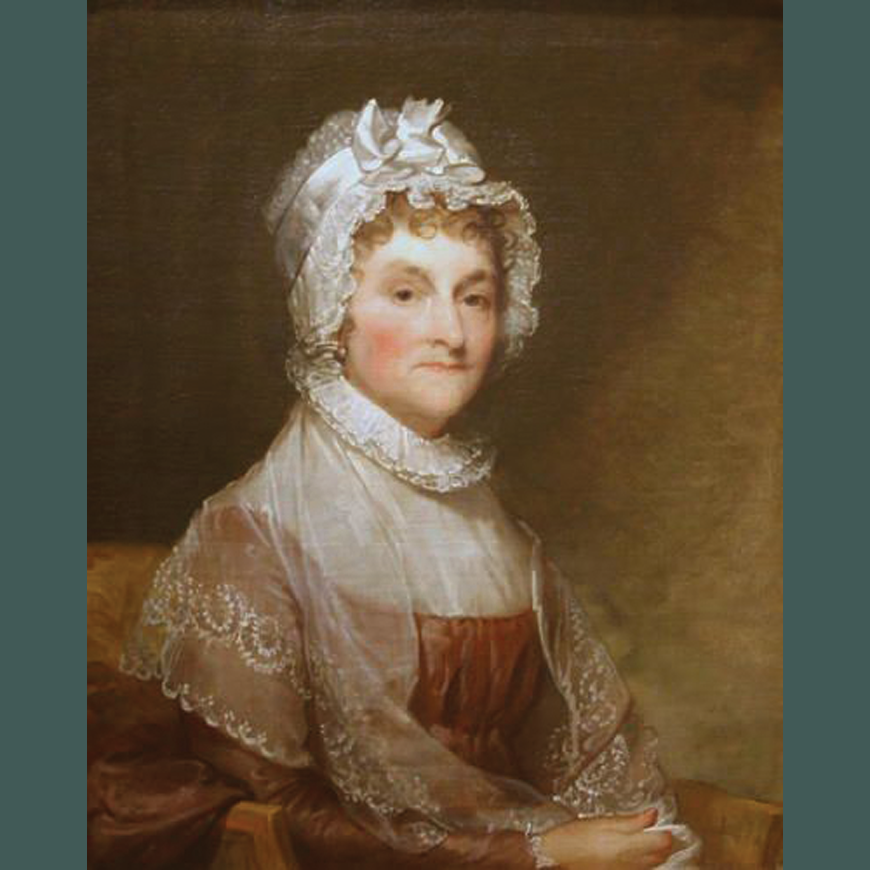
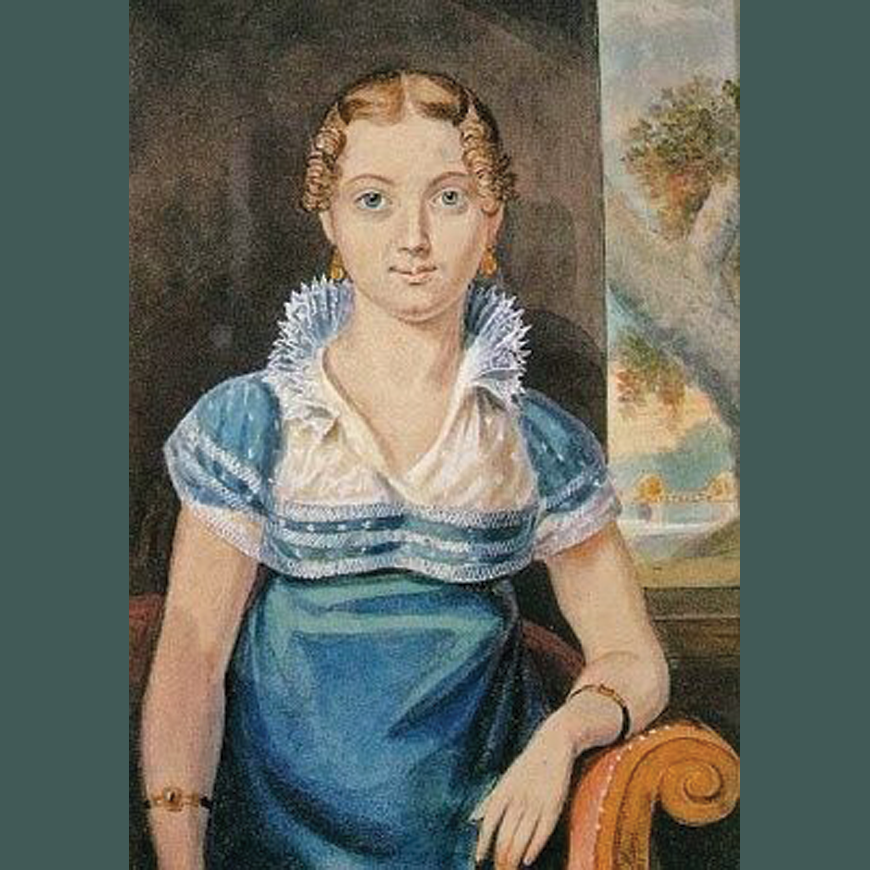
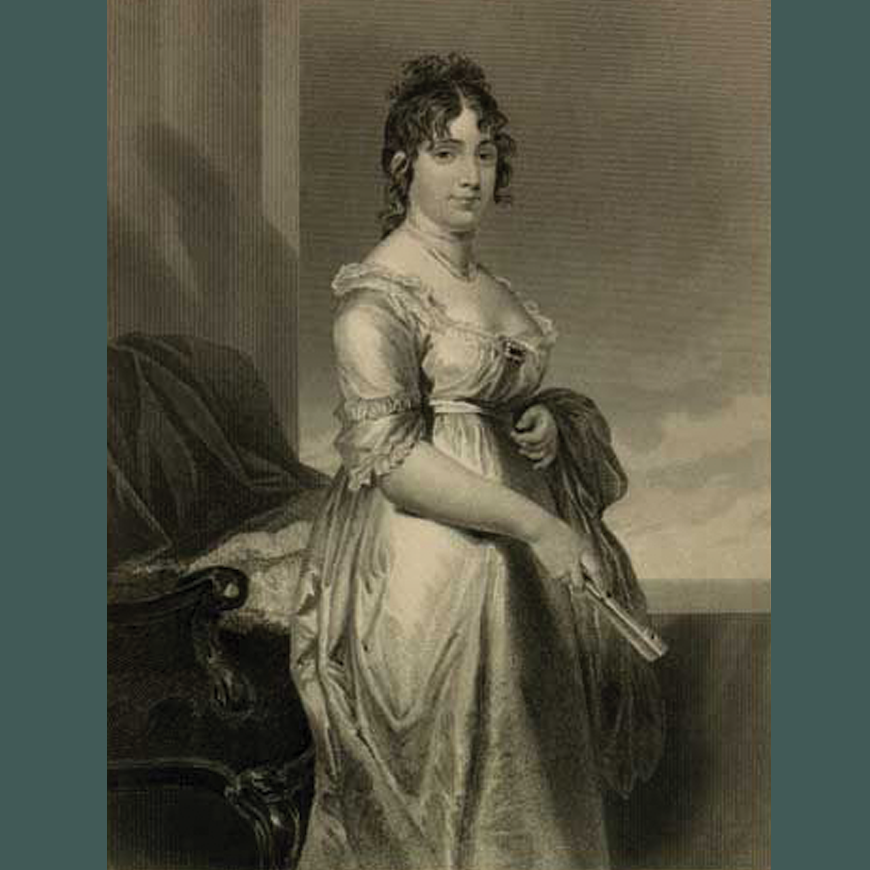
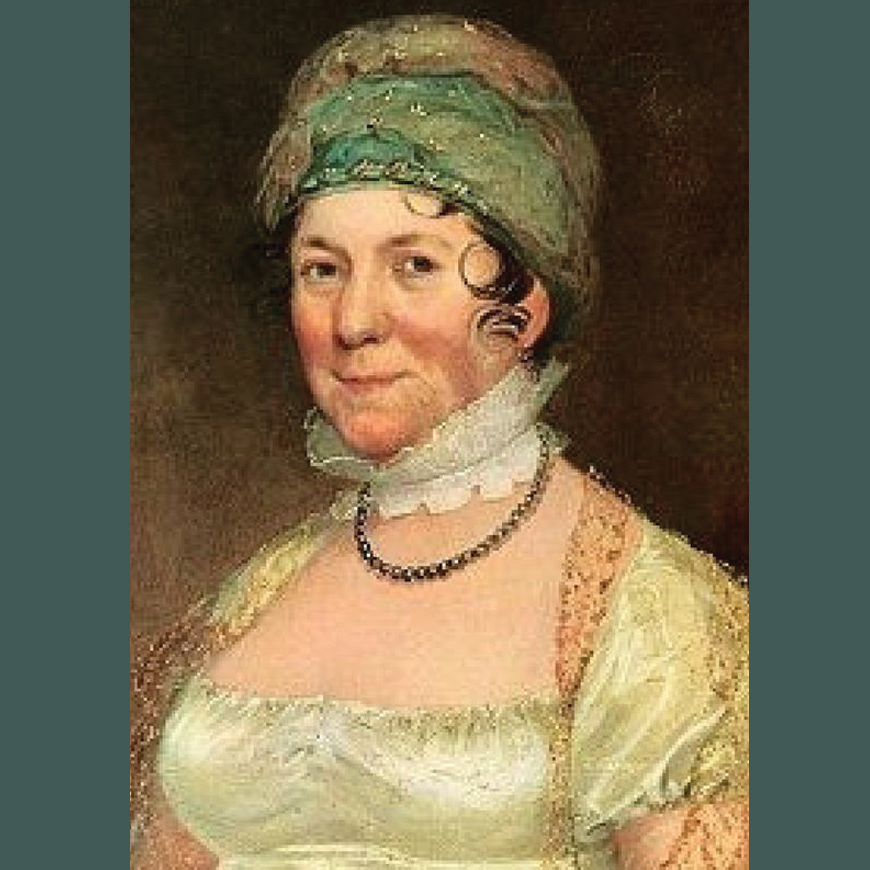
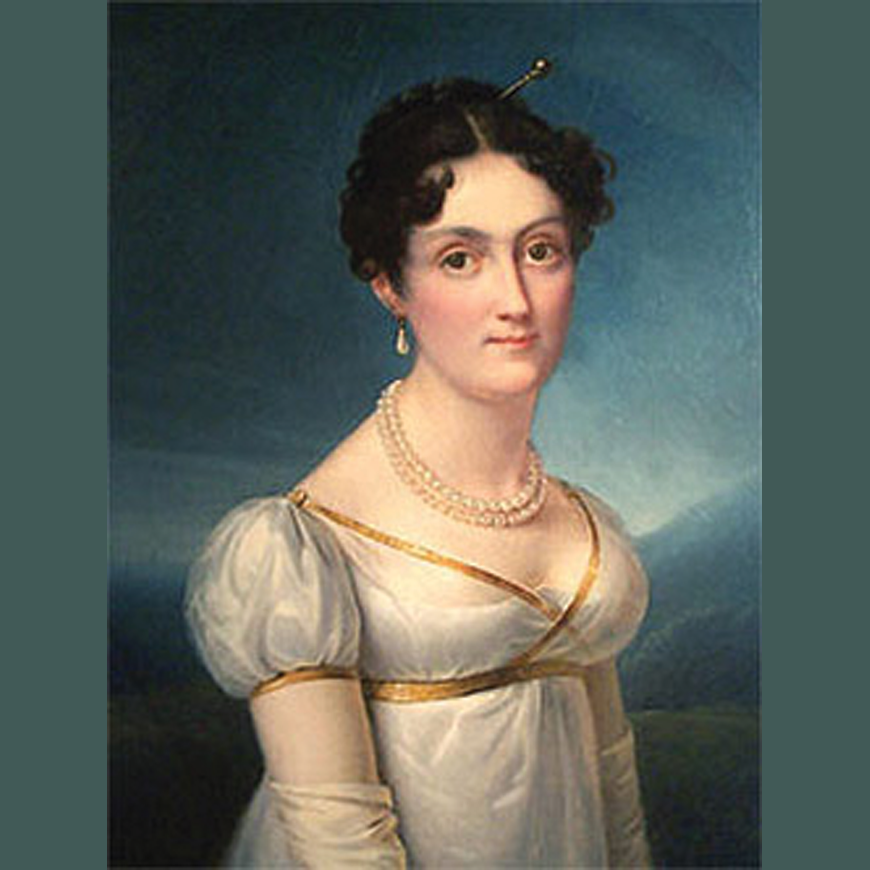
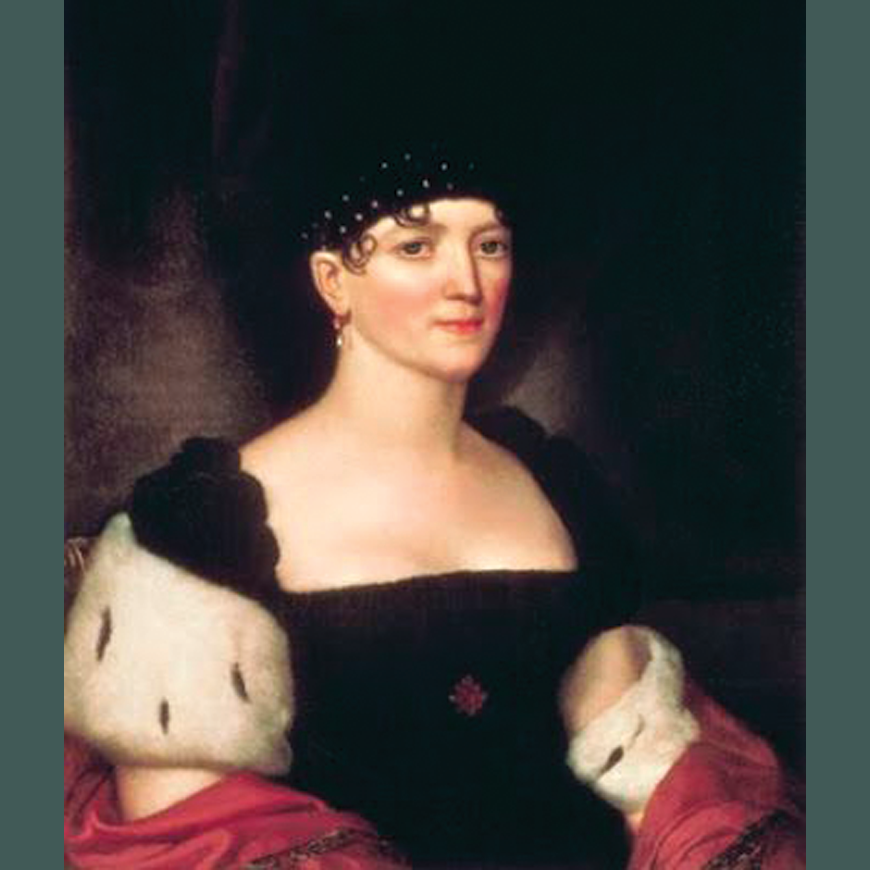
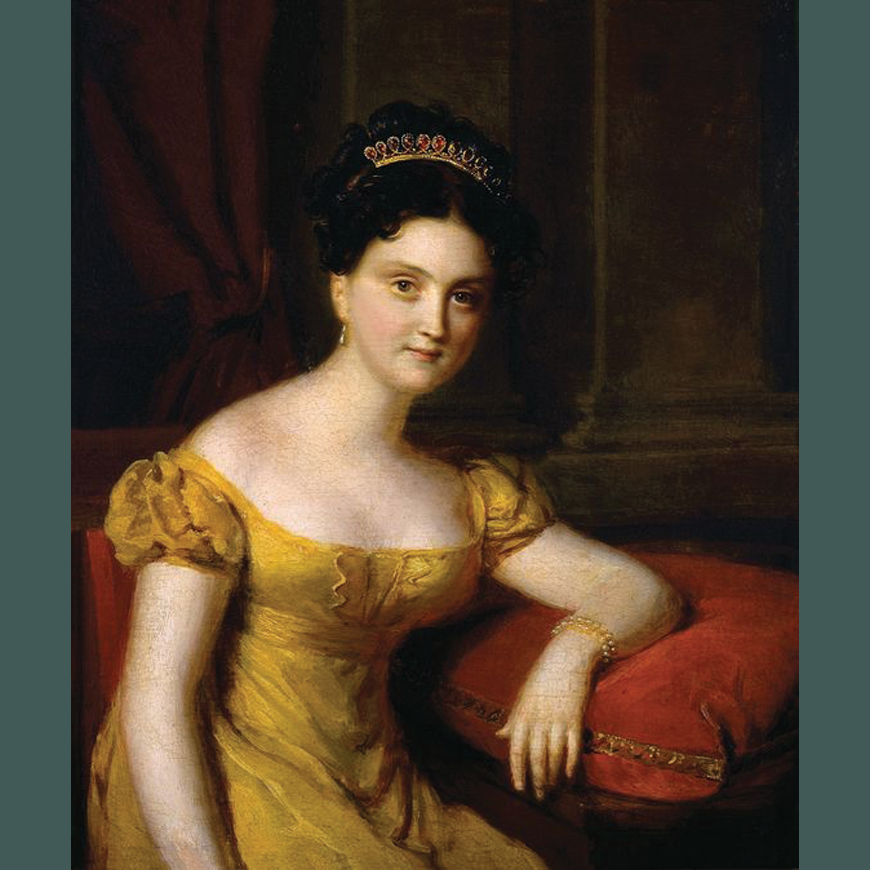
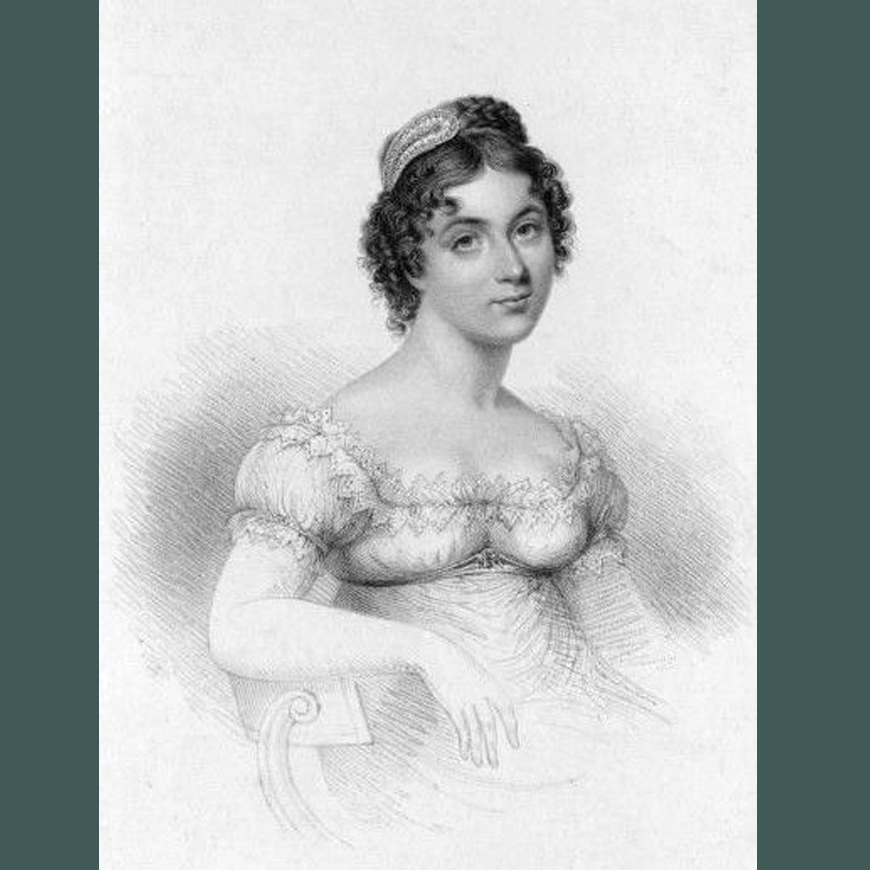
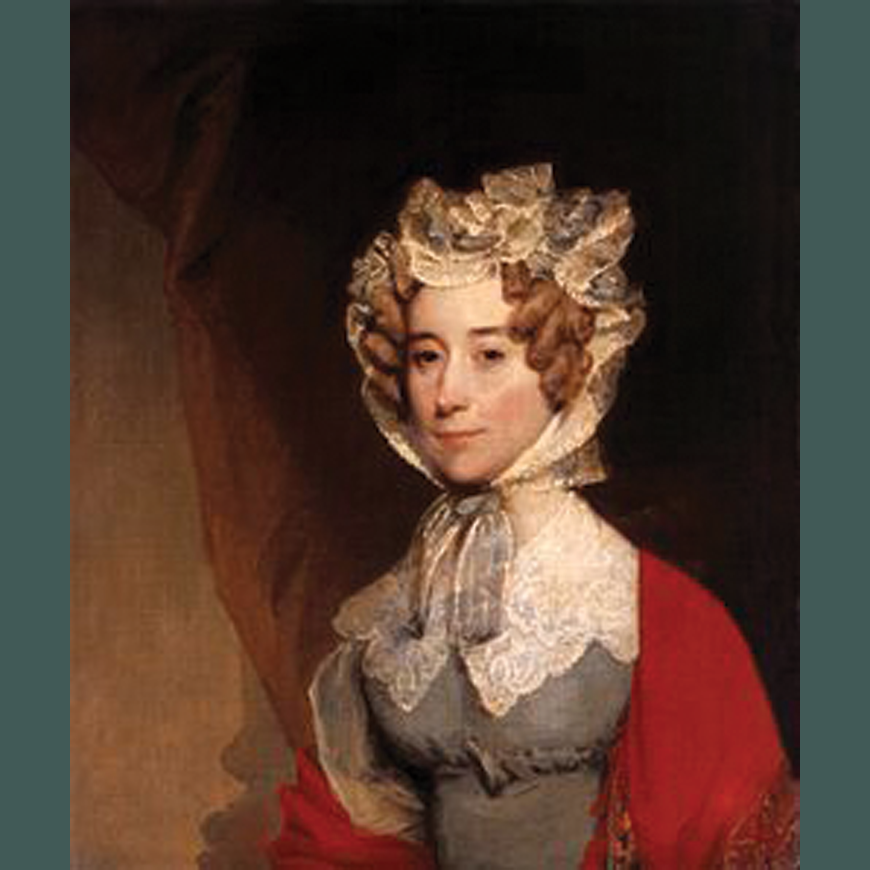
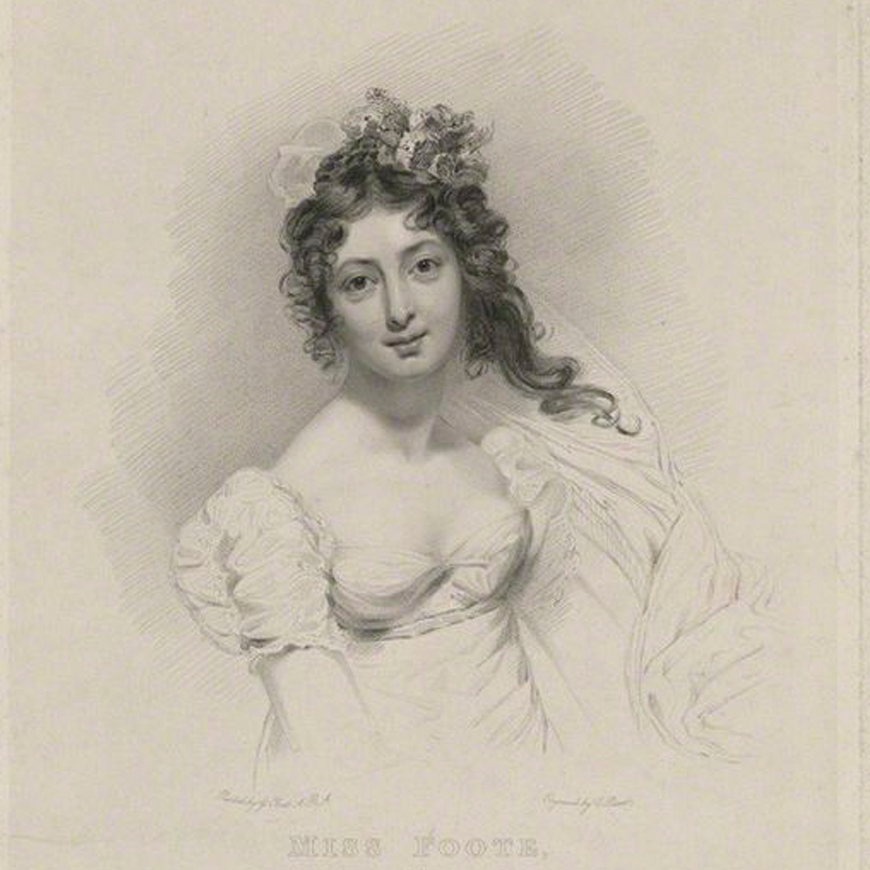
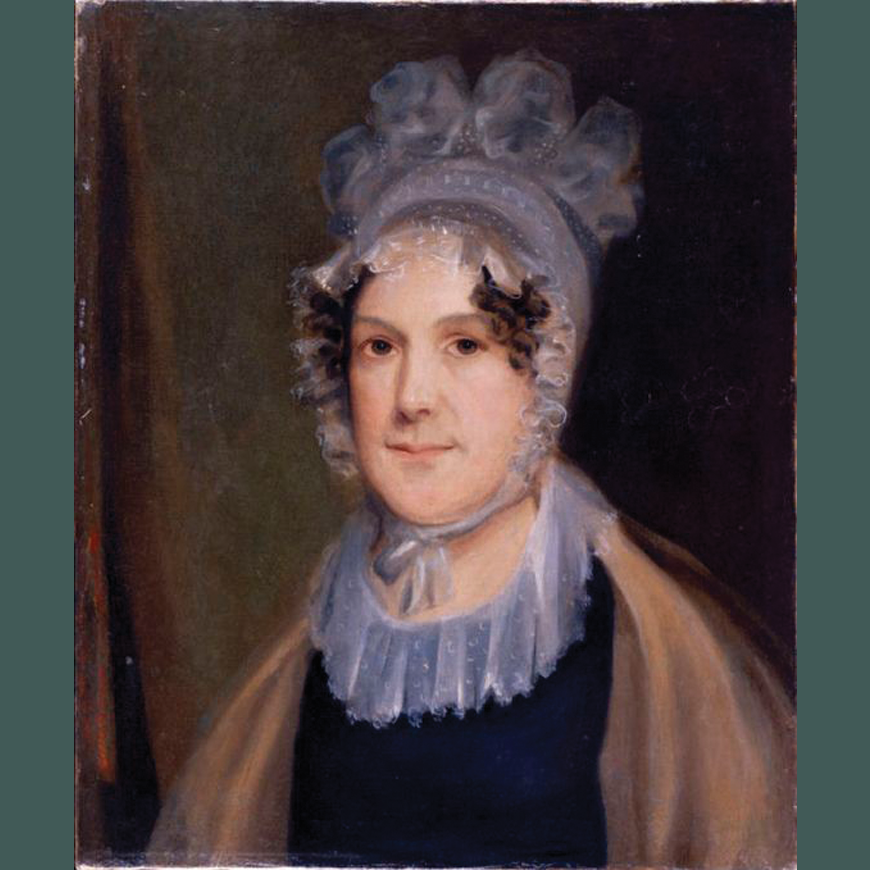
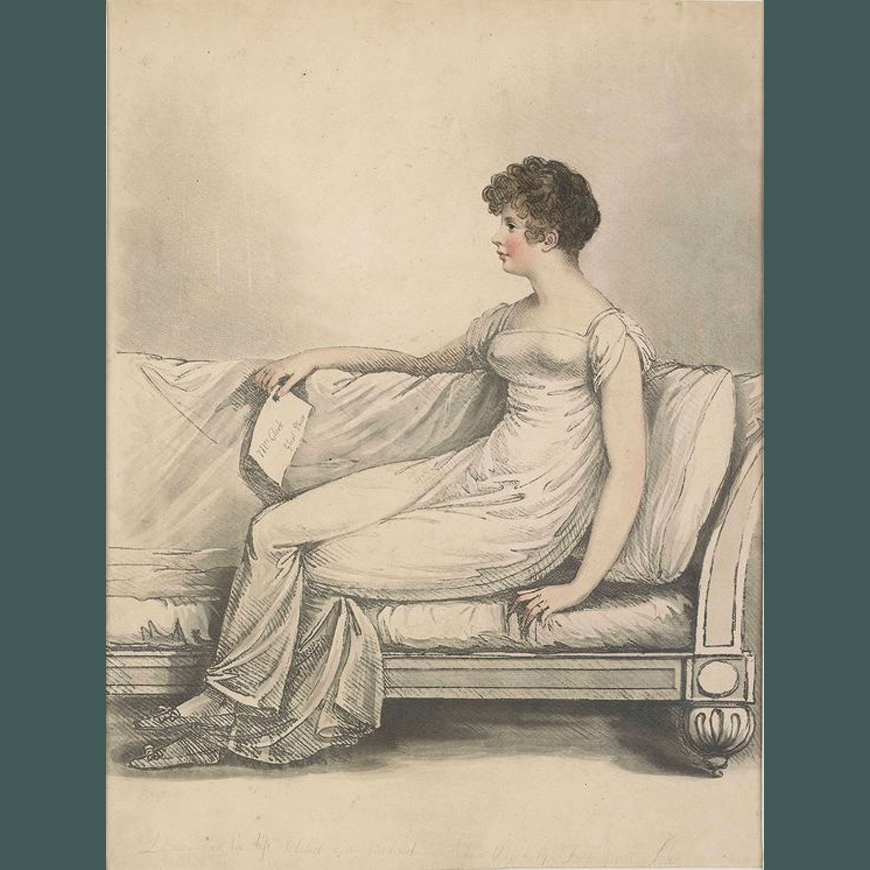
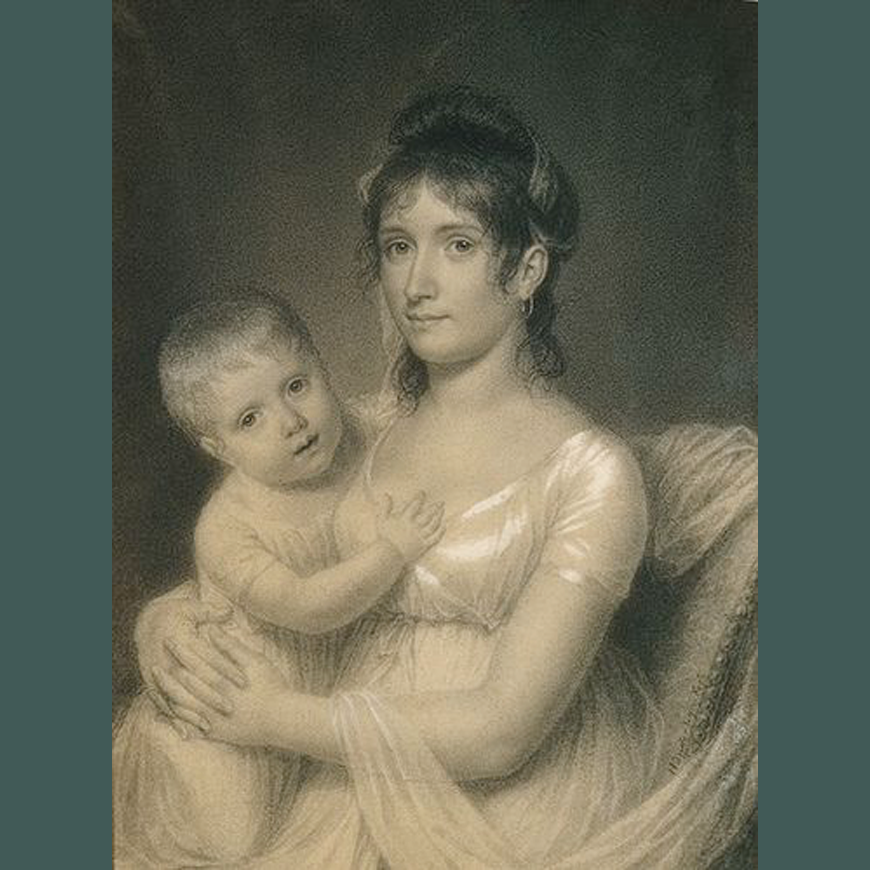
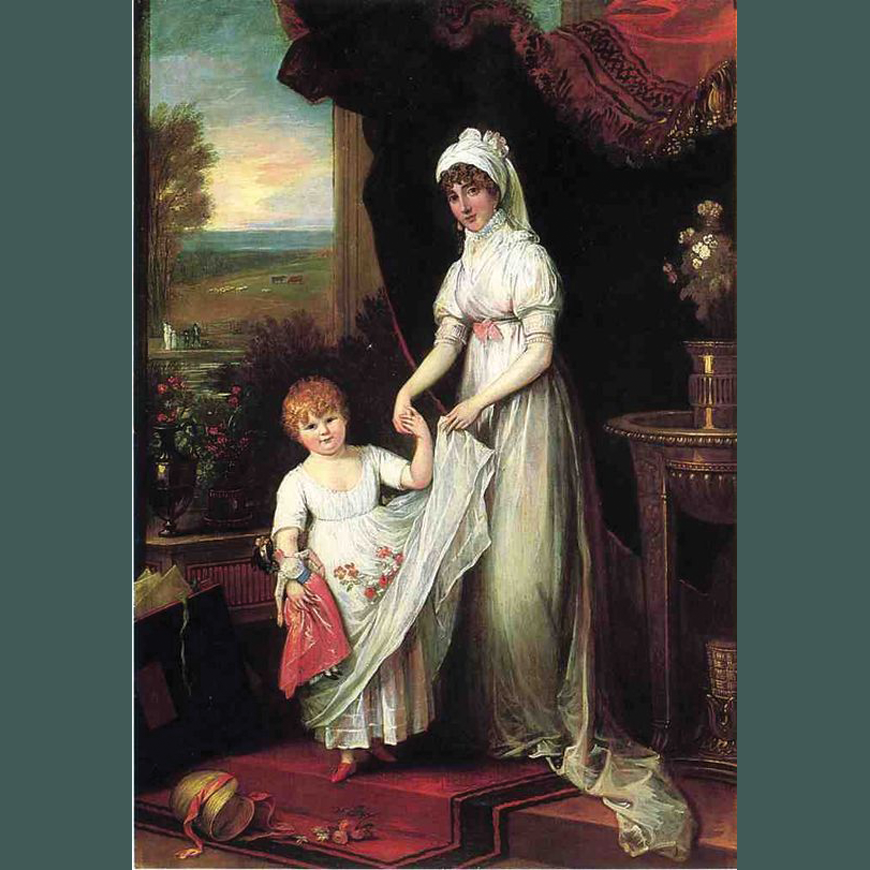
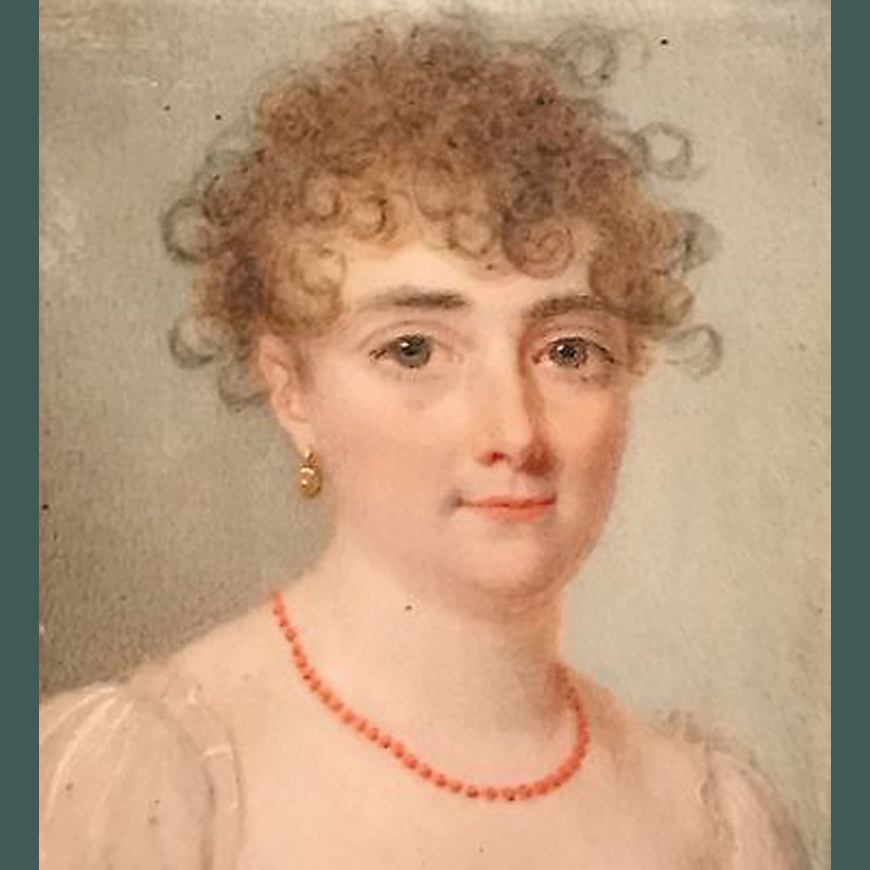
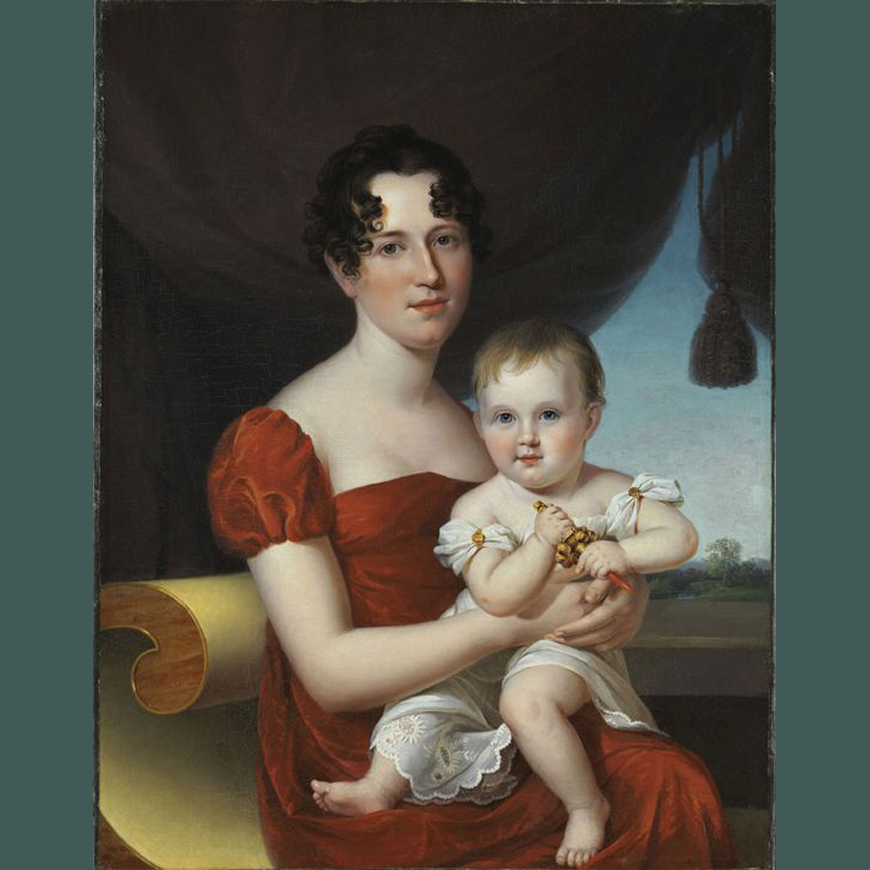
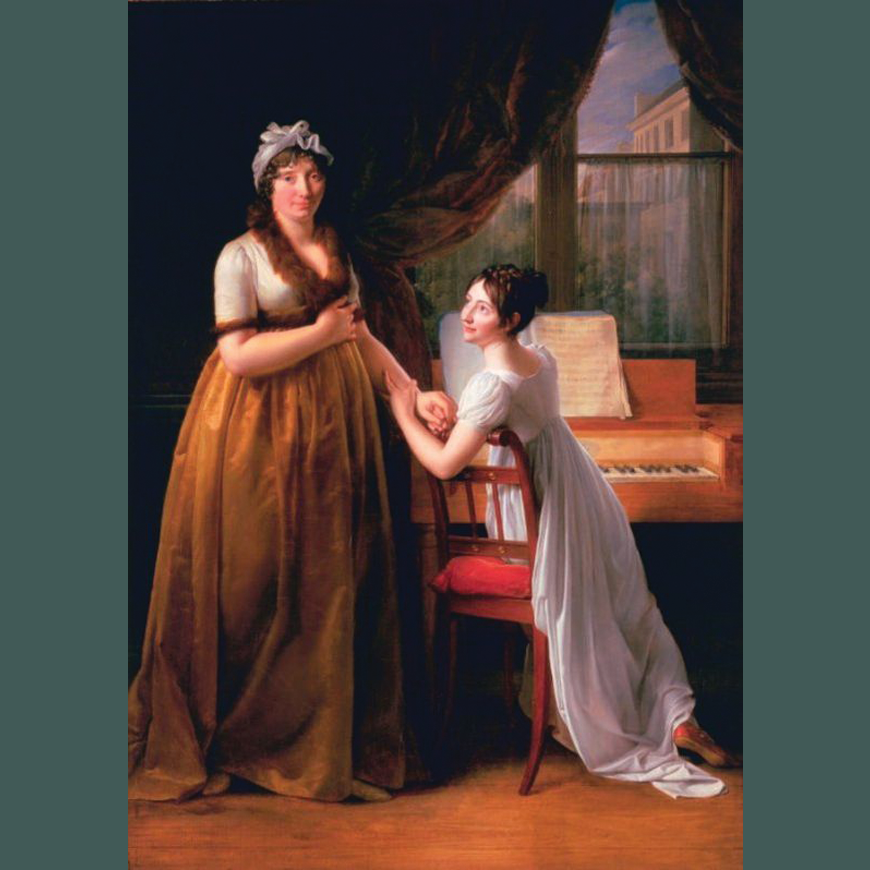
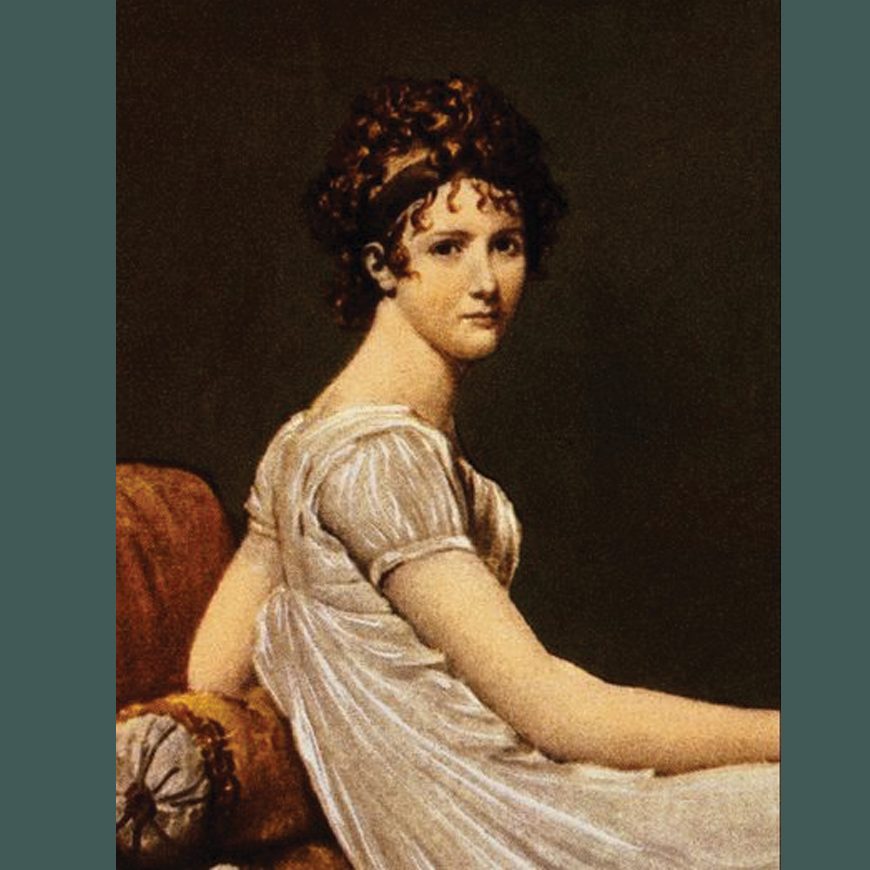
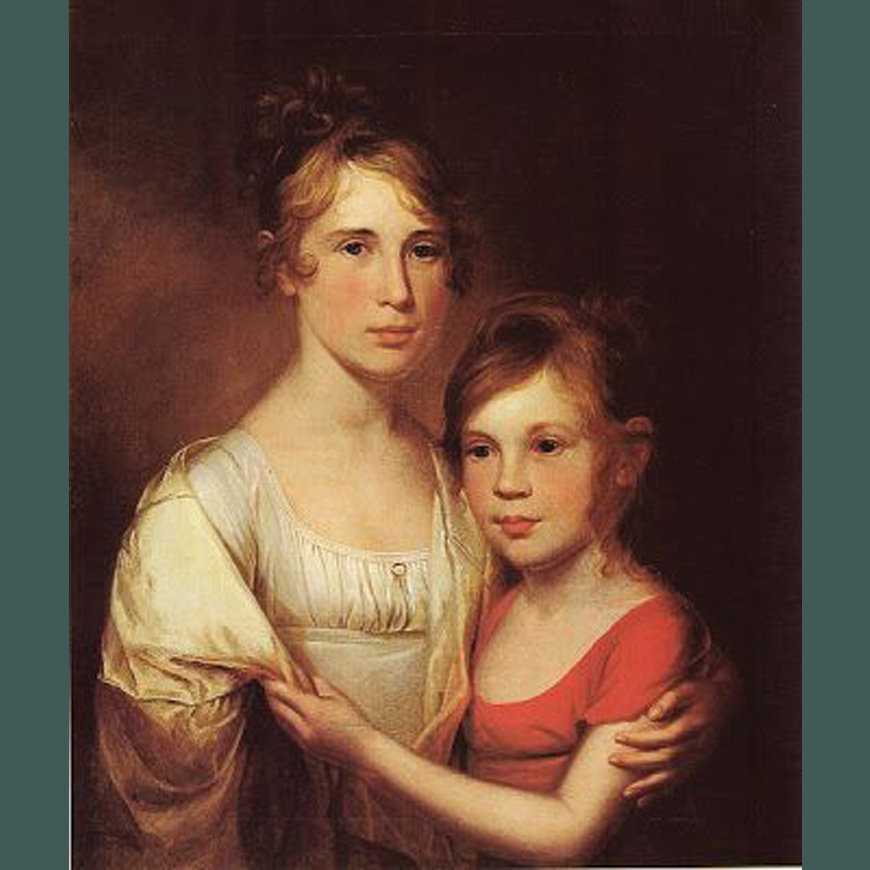
 Fashion Plates from Europe
Fashion Plates from Europe
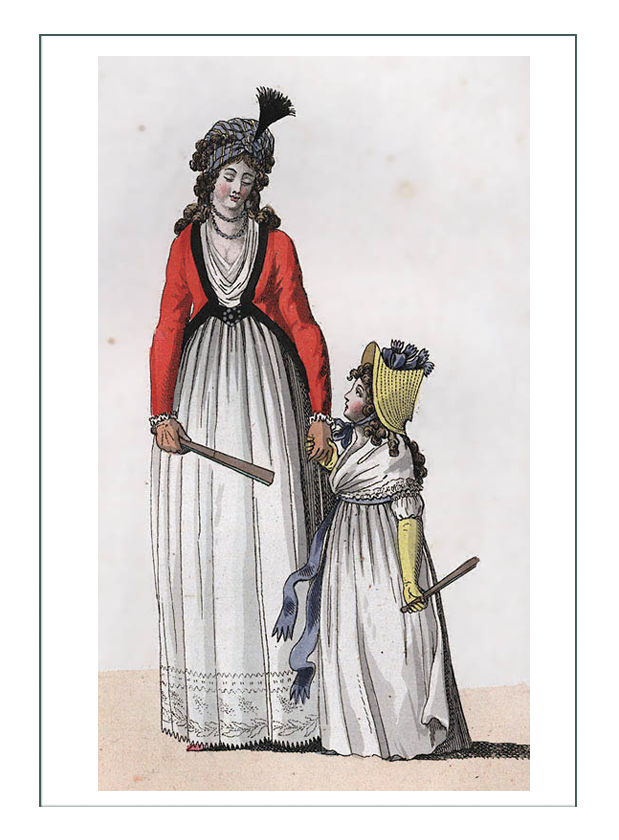
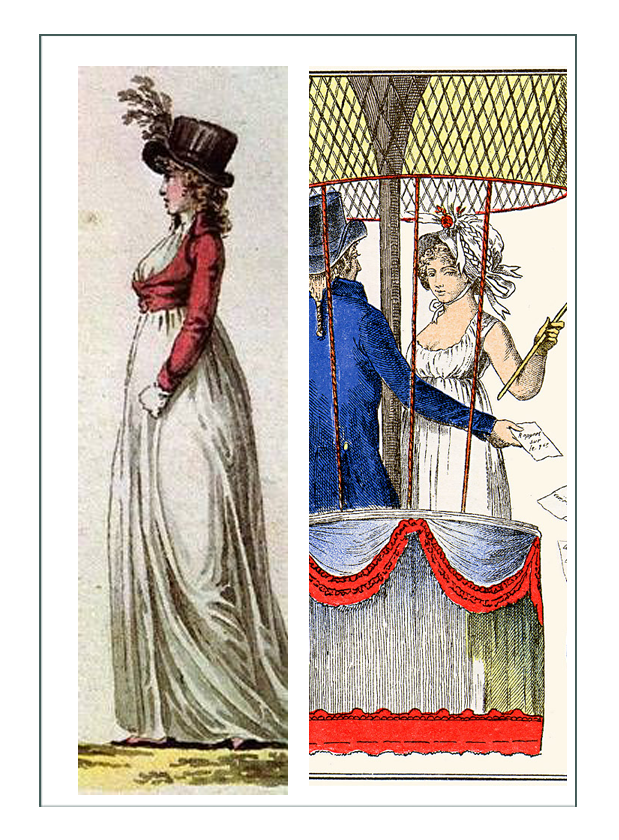
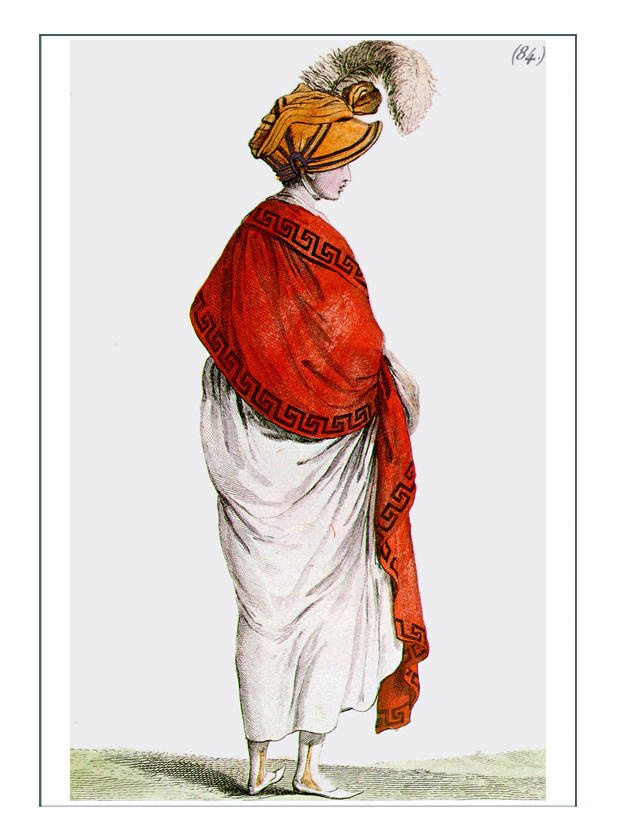
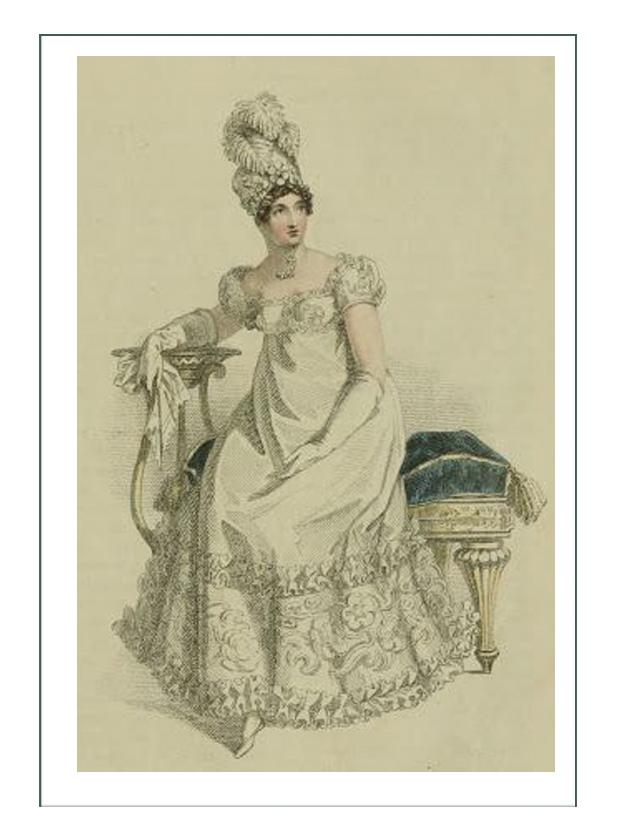
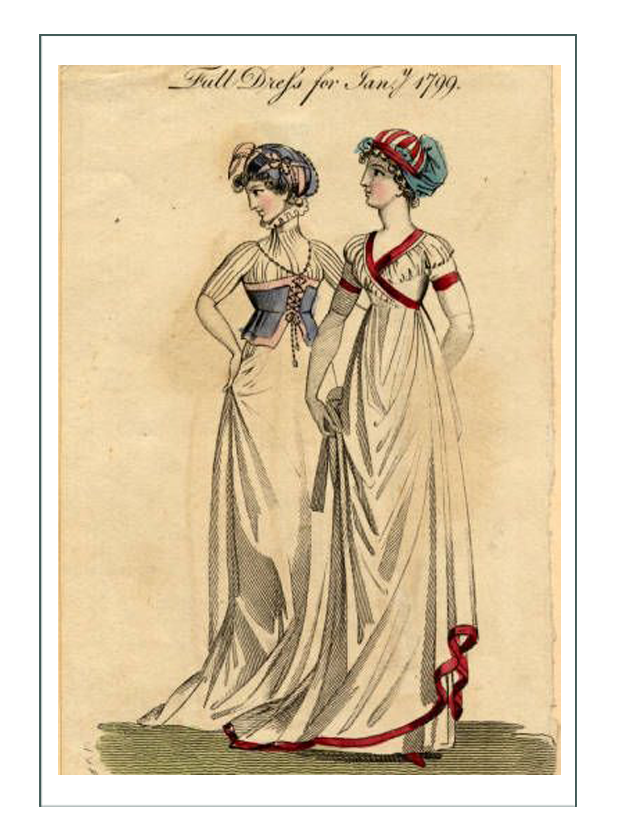
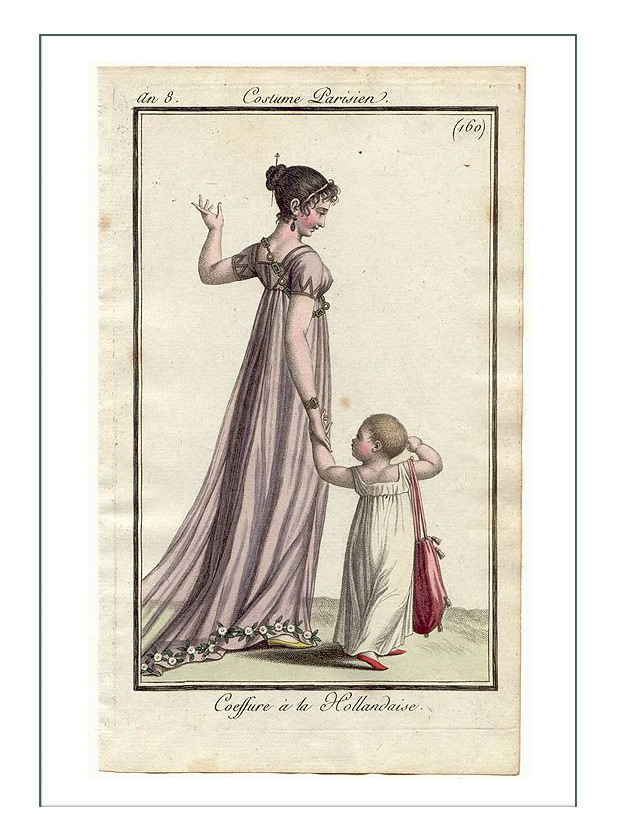
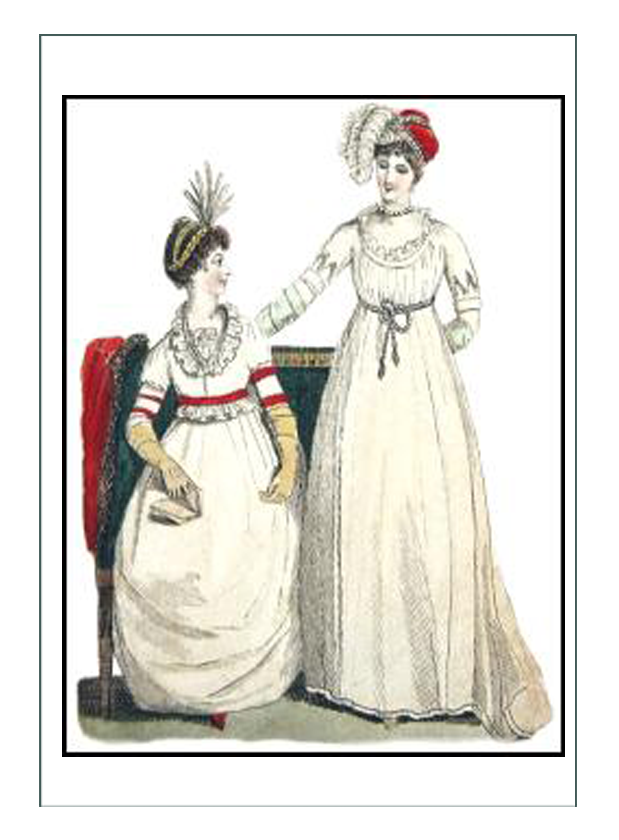
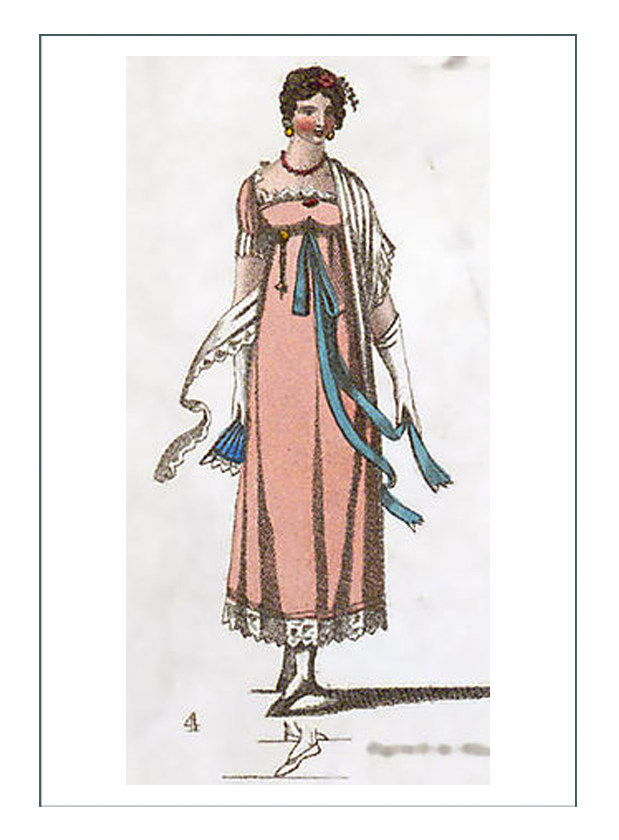
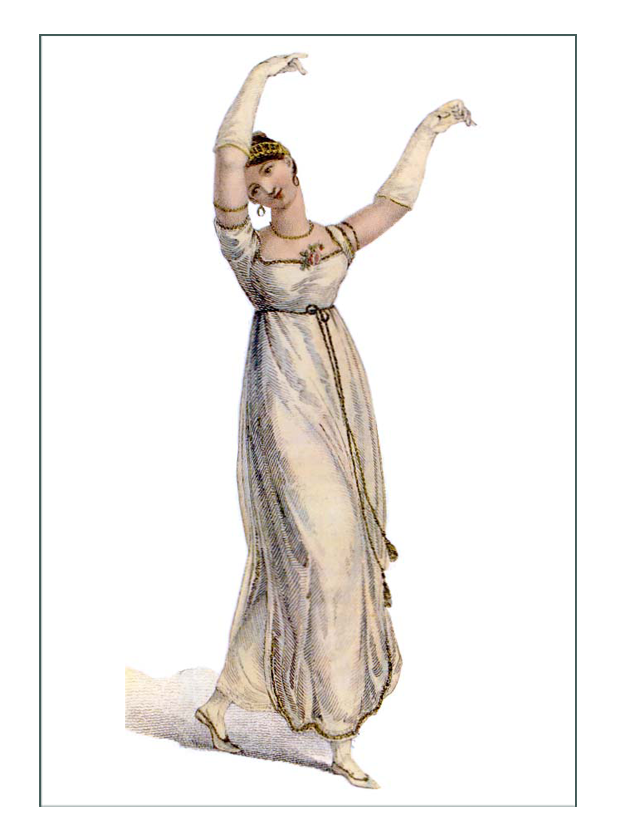

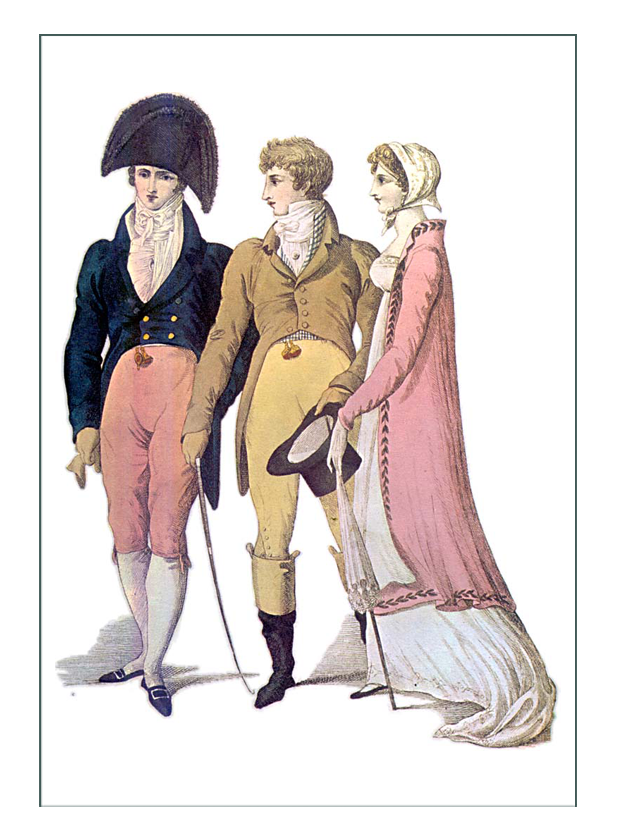
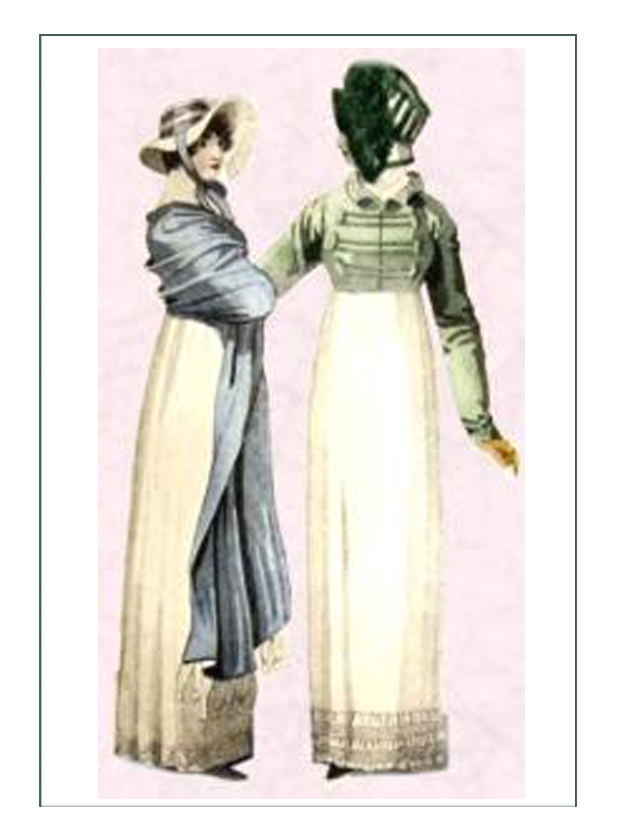
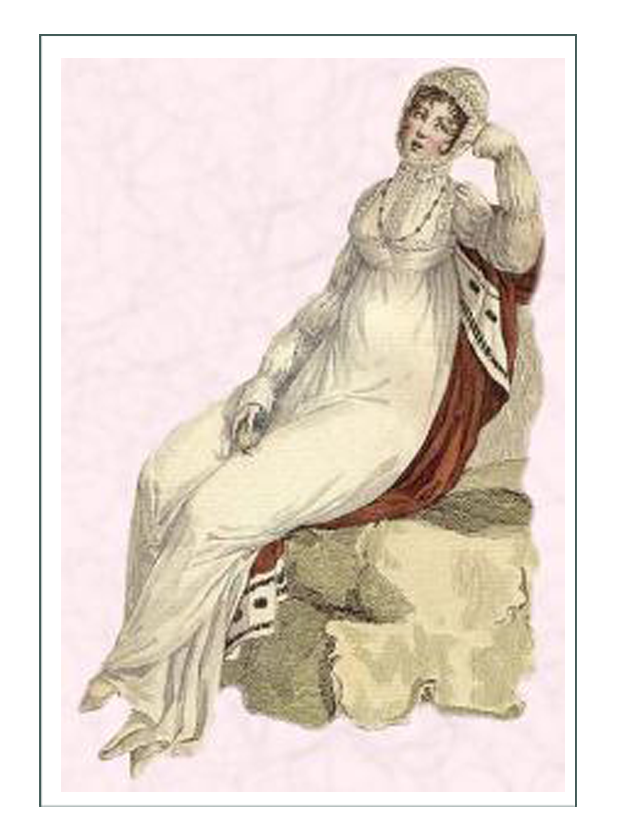
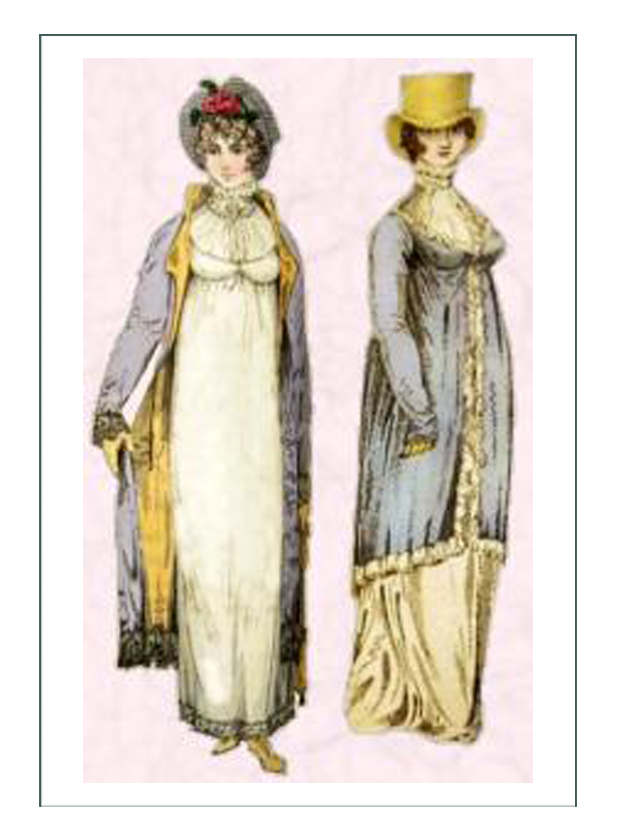
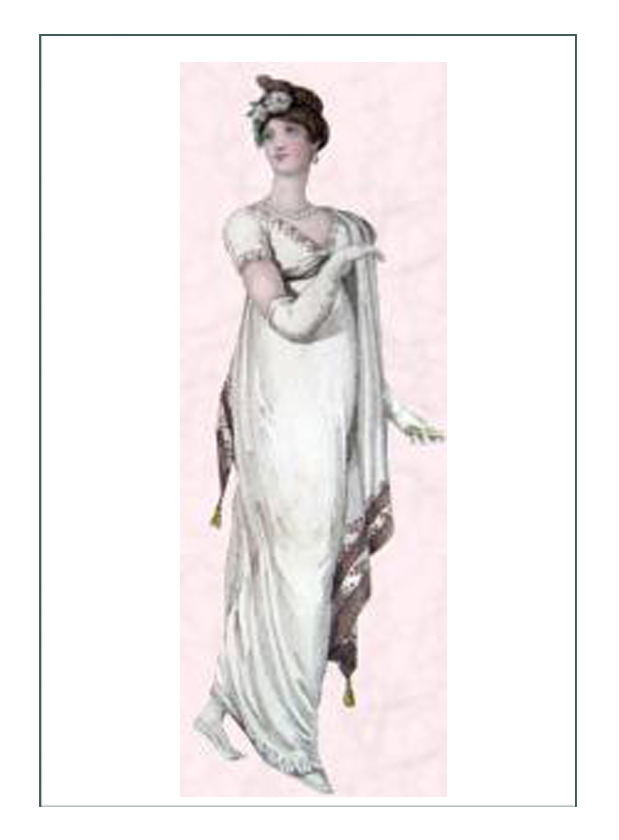
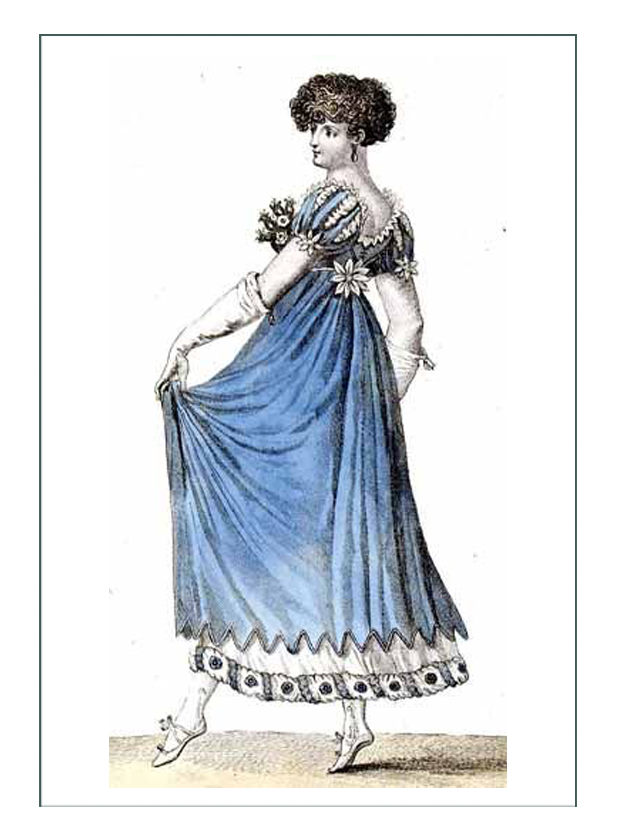
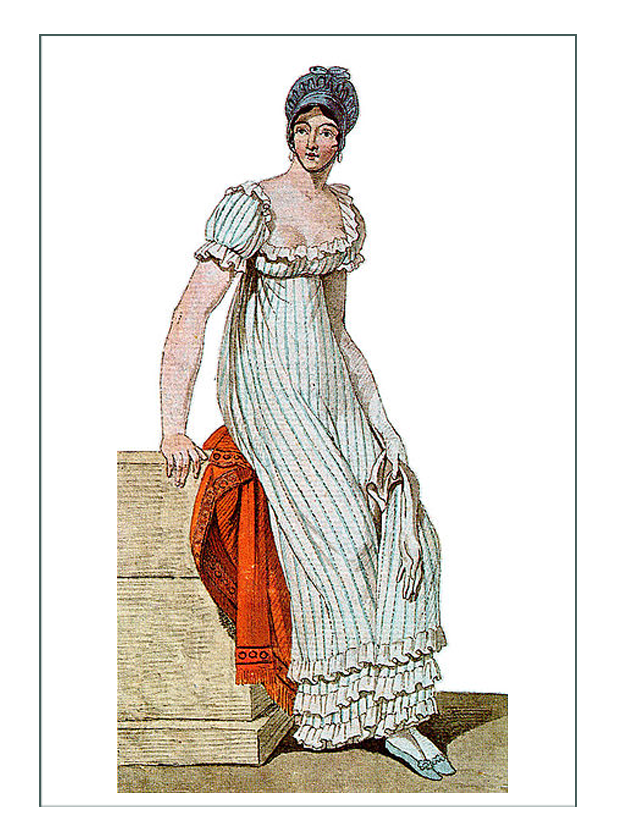
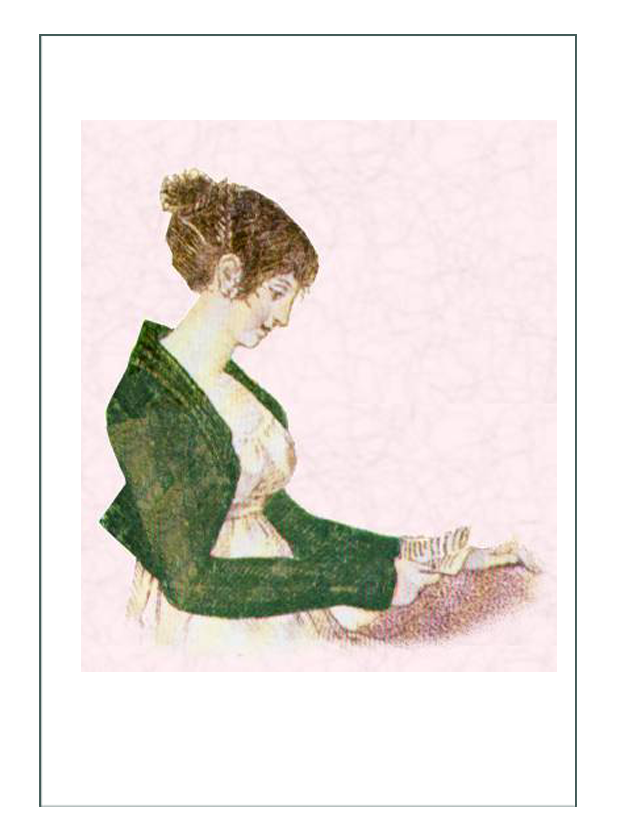
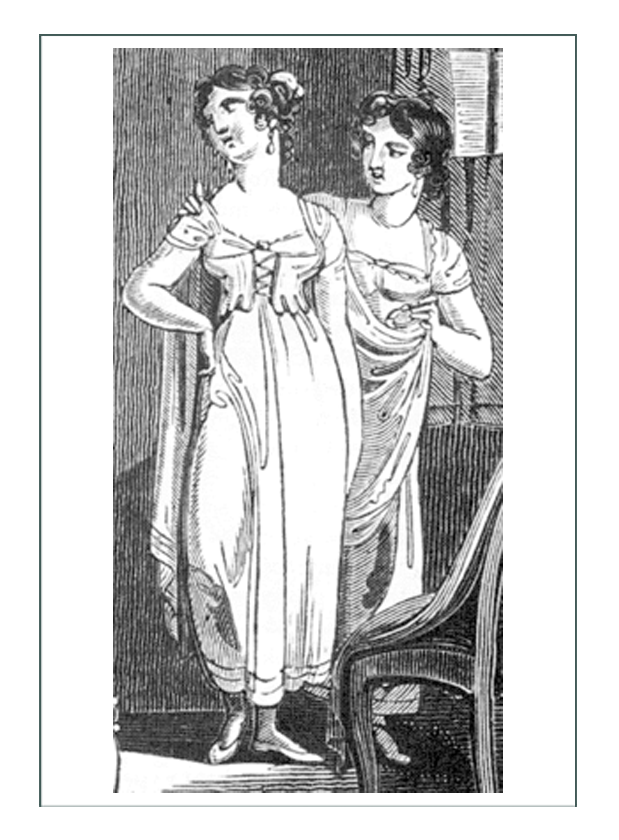
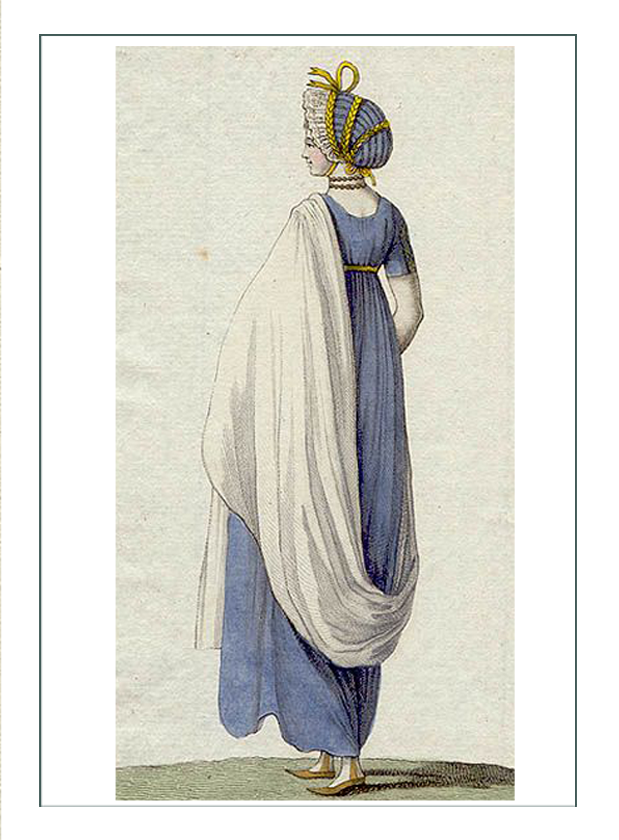
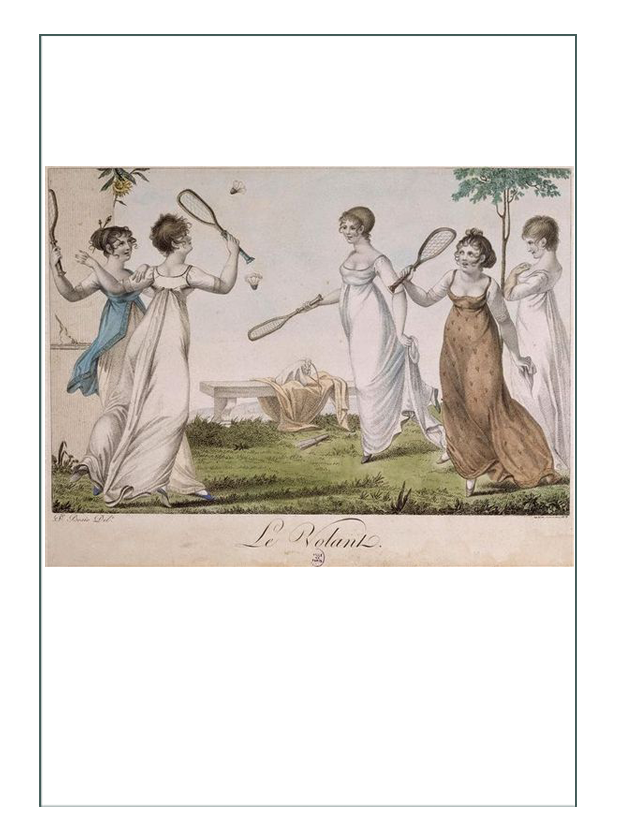
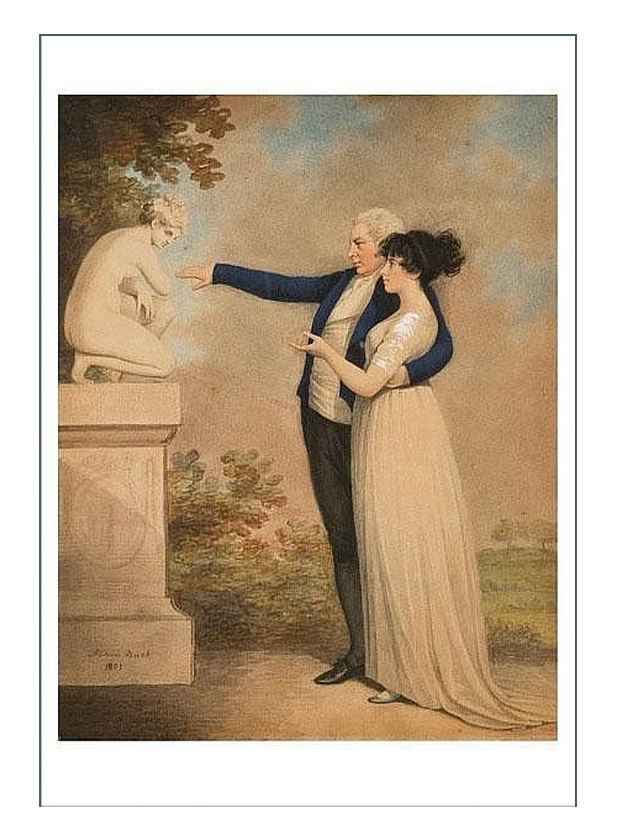
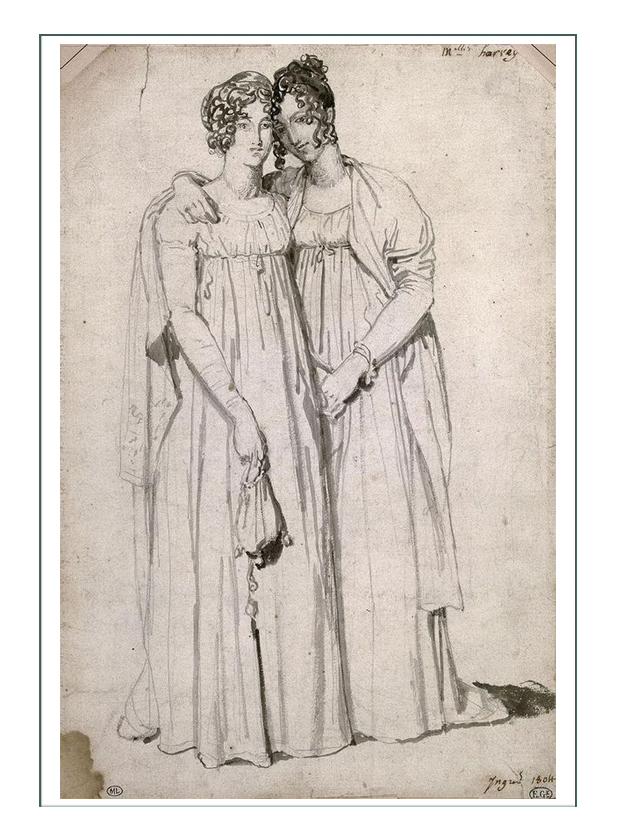
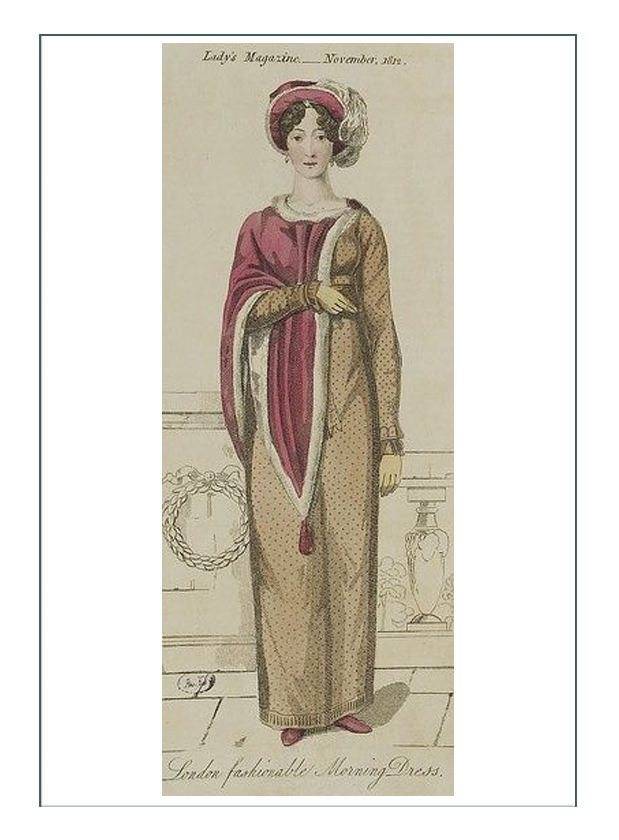
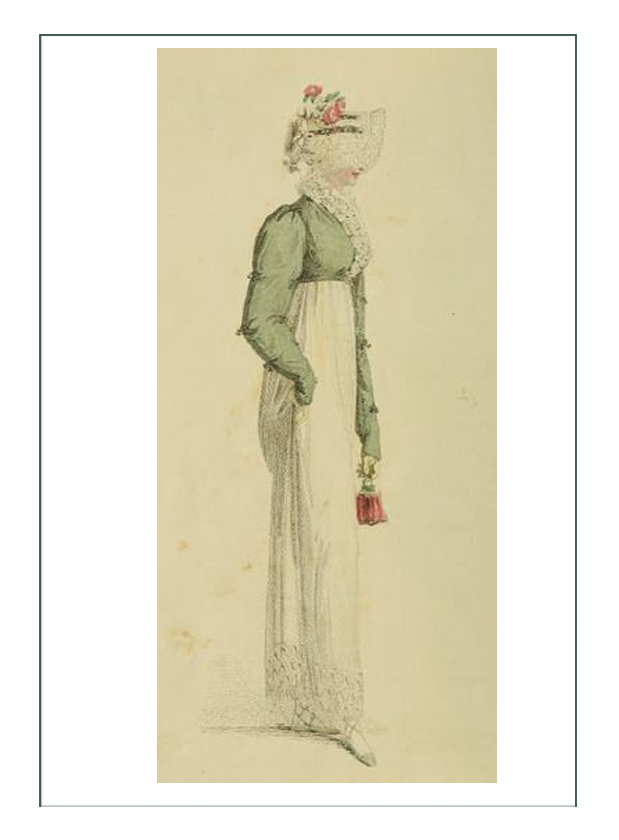
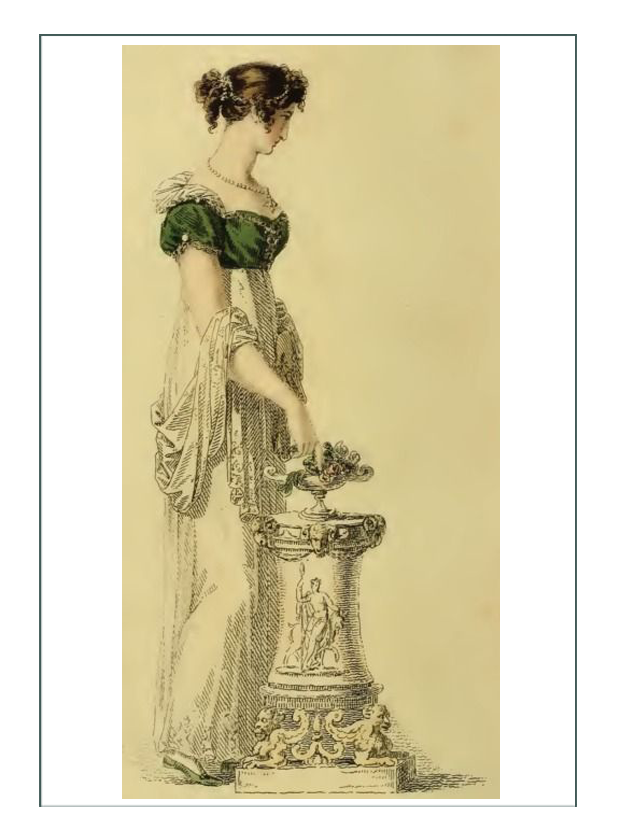
 European
European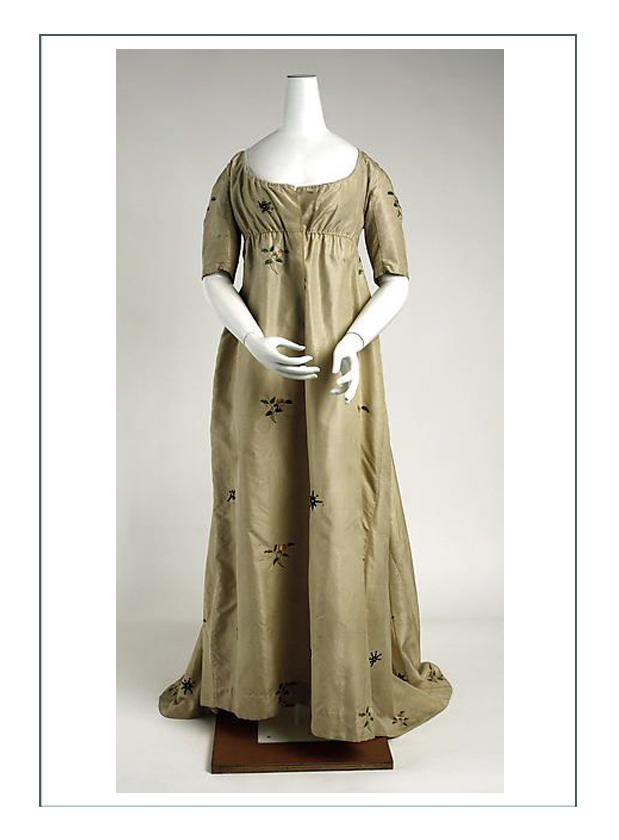
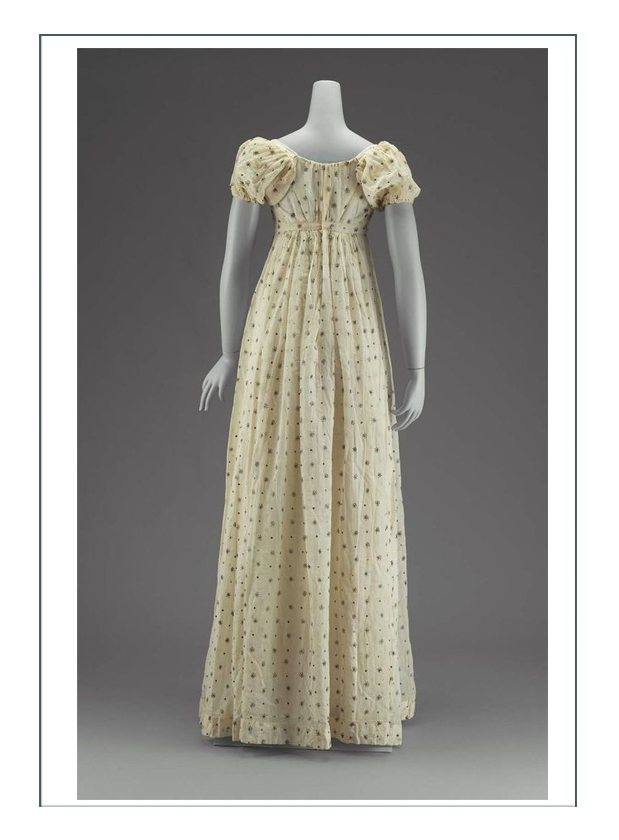
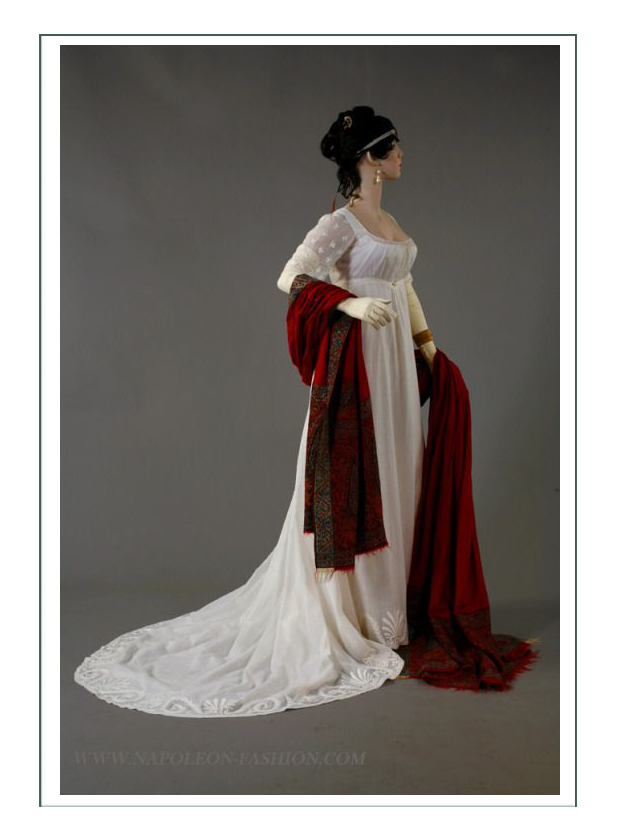
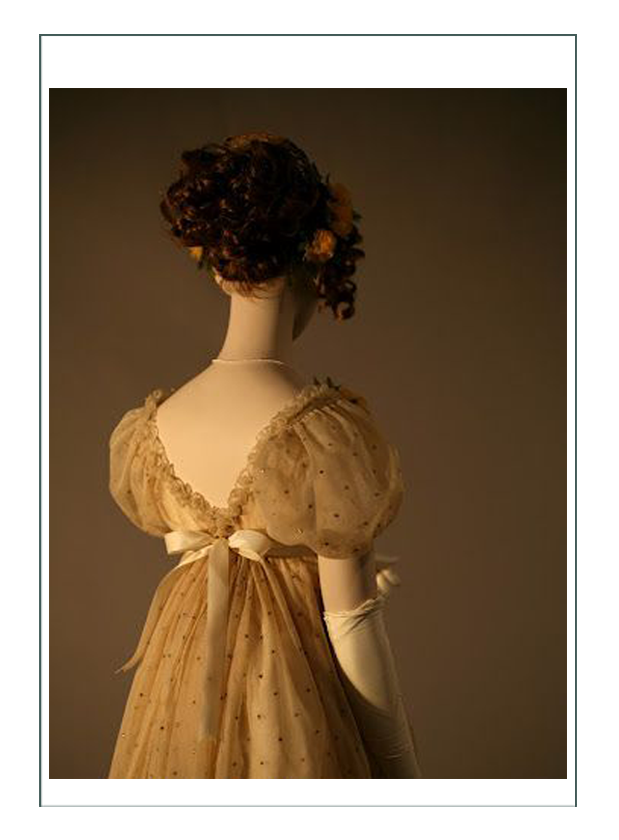
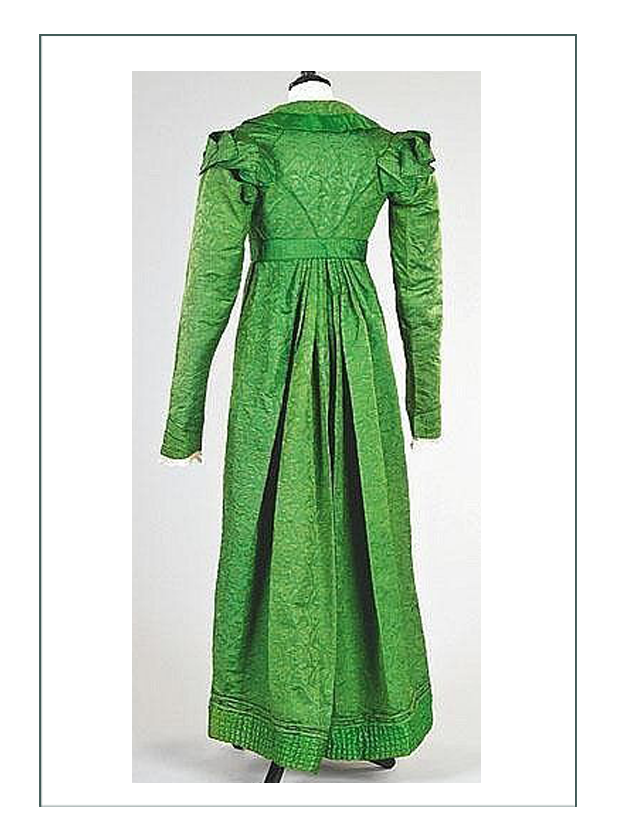
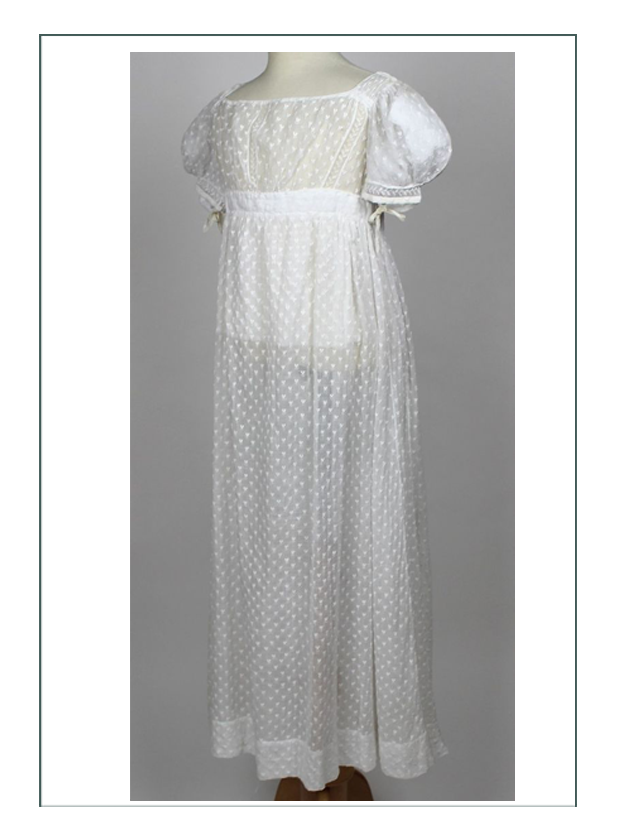
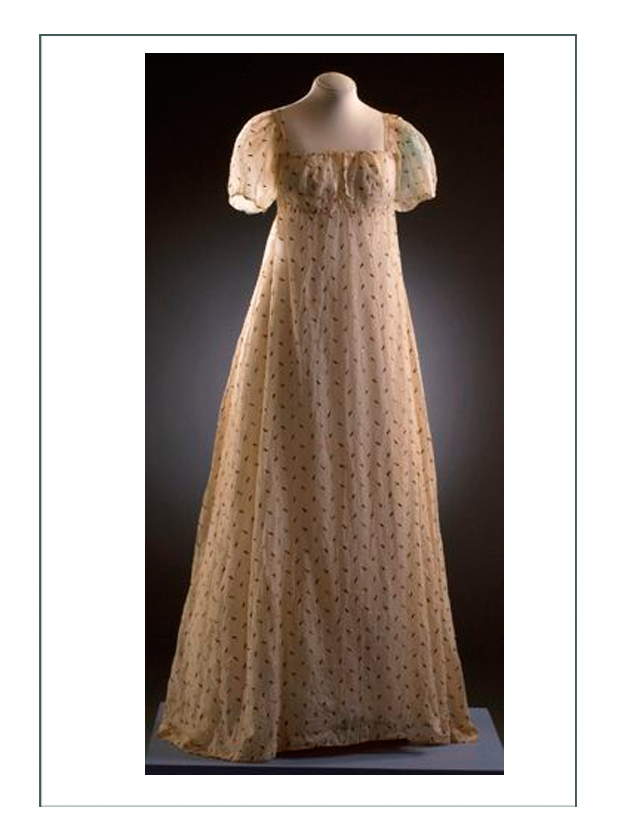
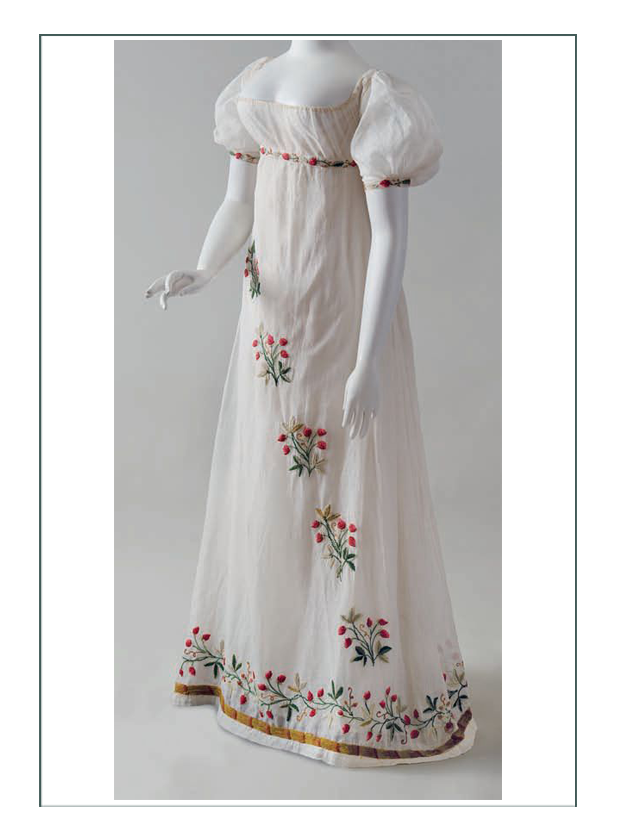
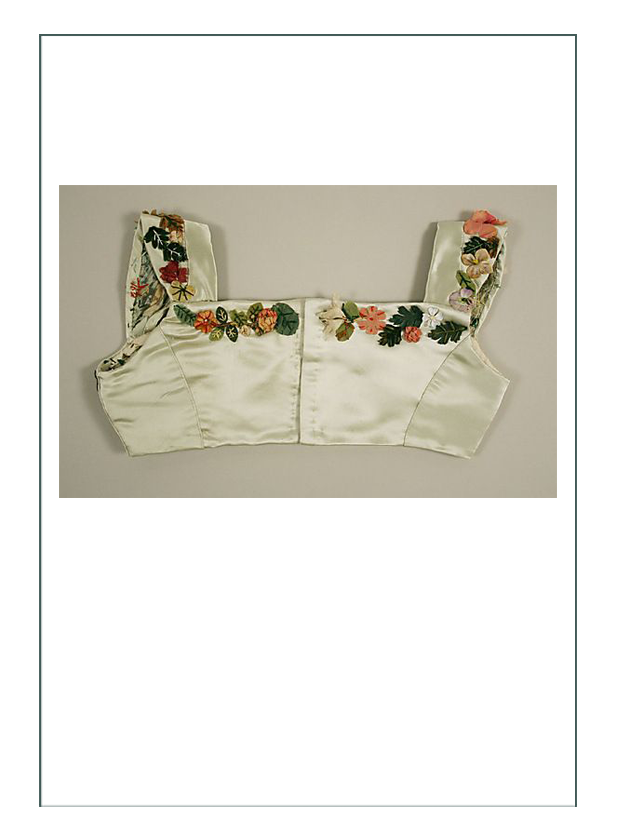
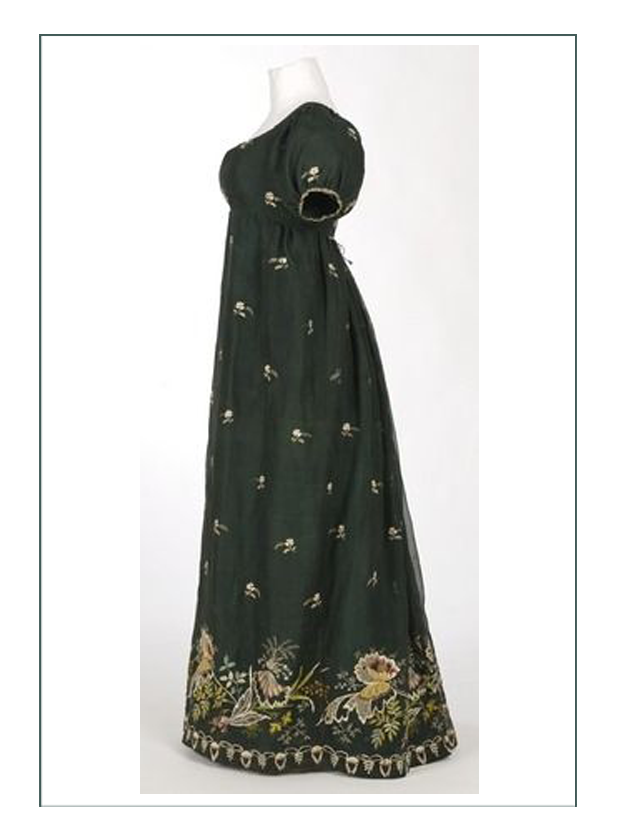
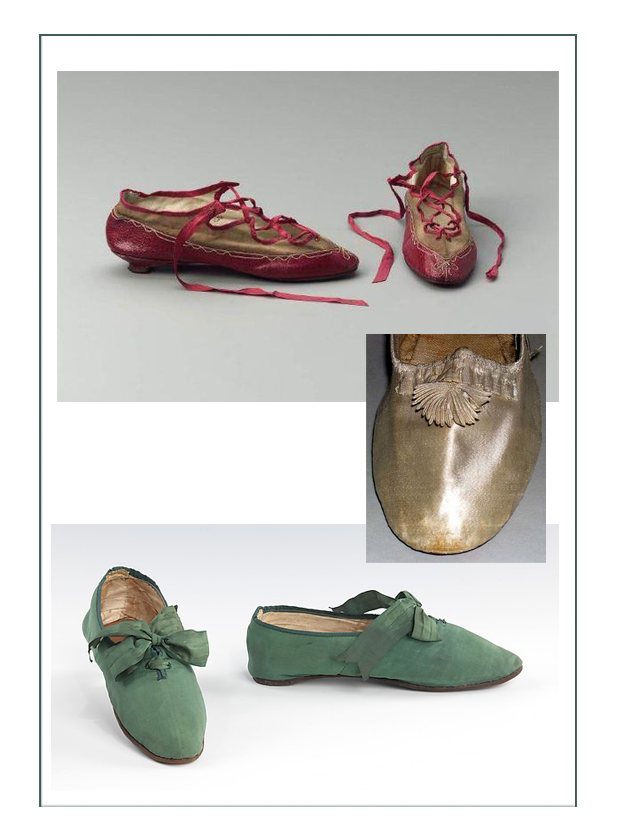
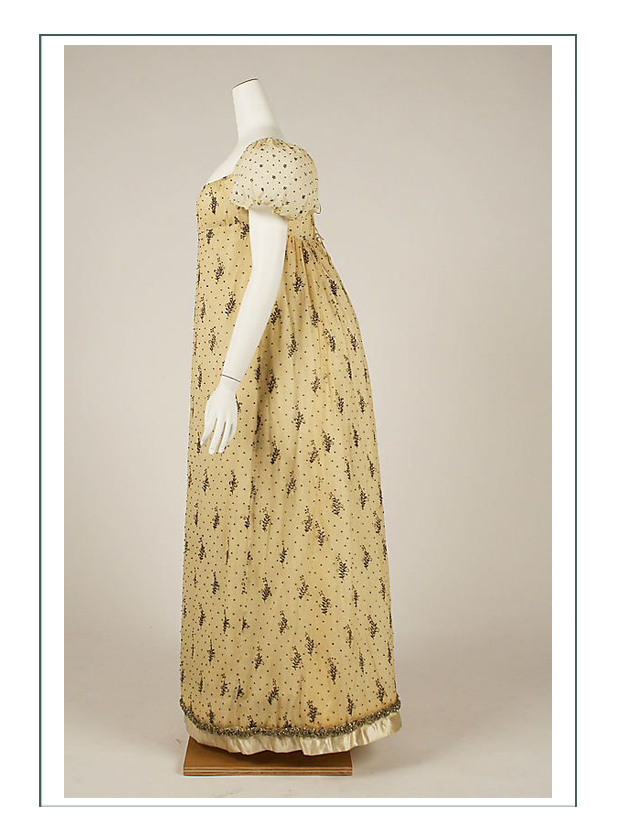
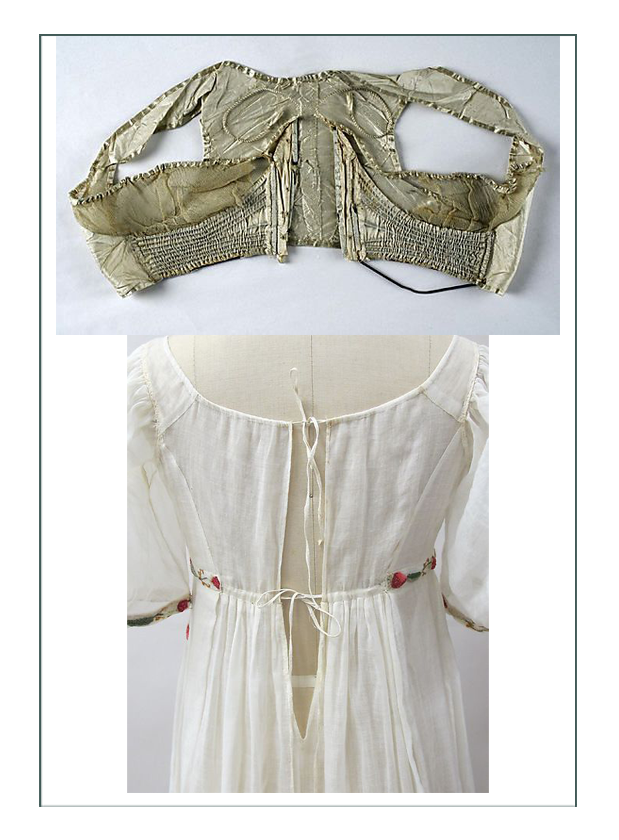
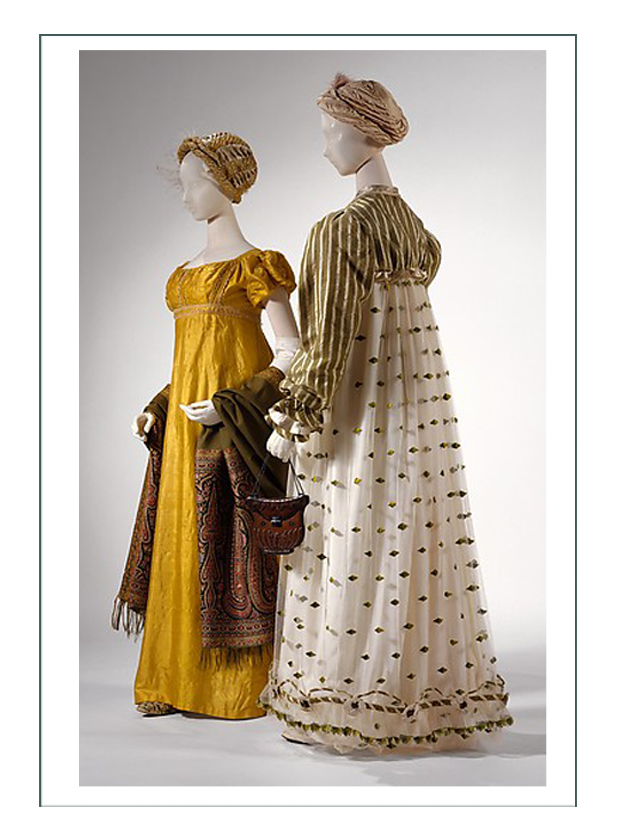
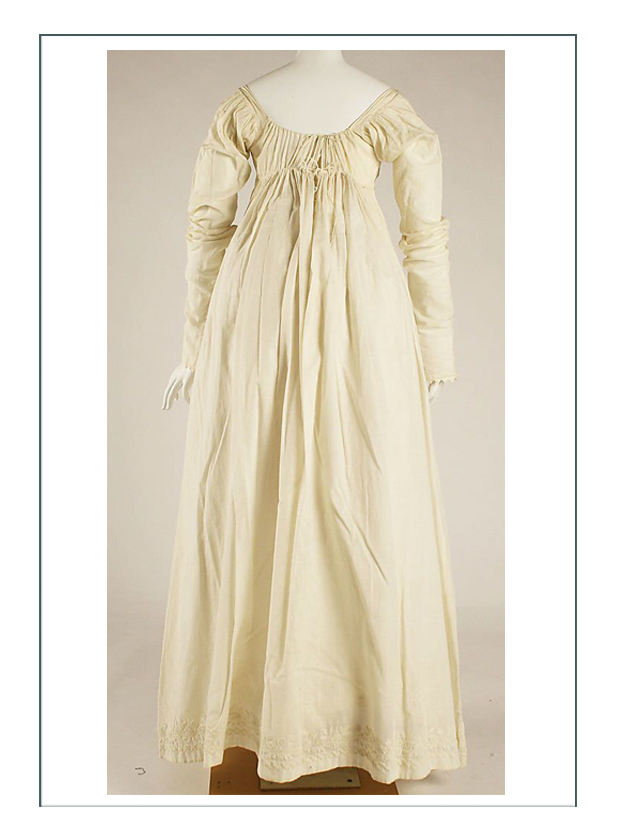
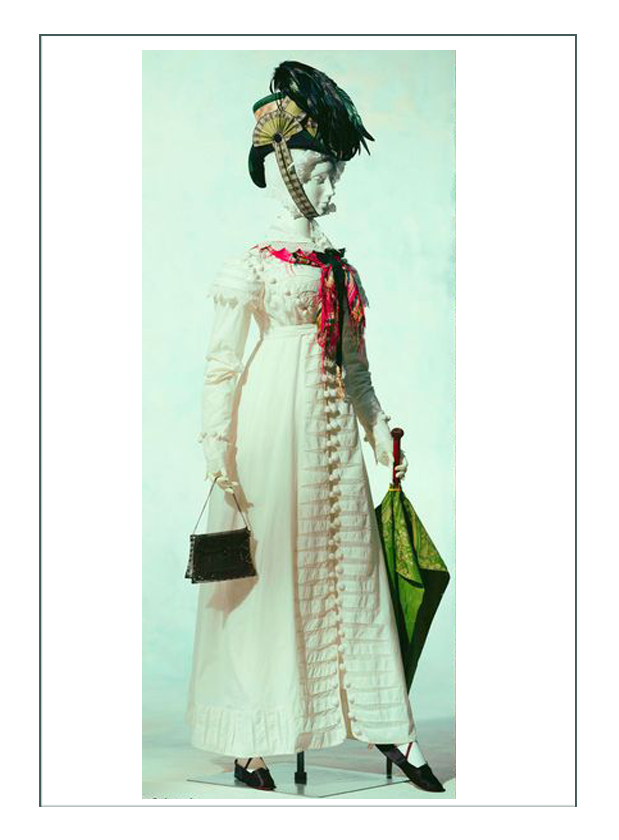
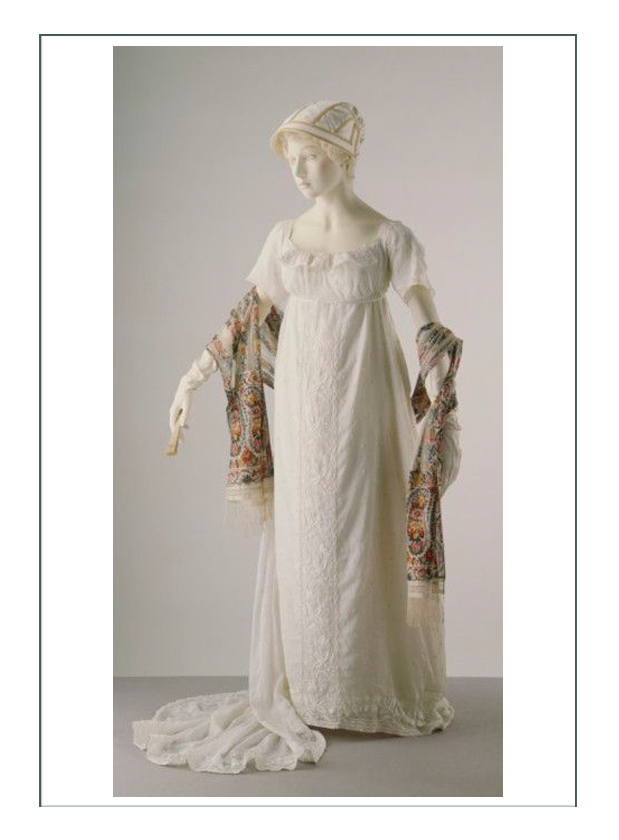
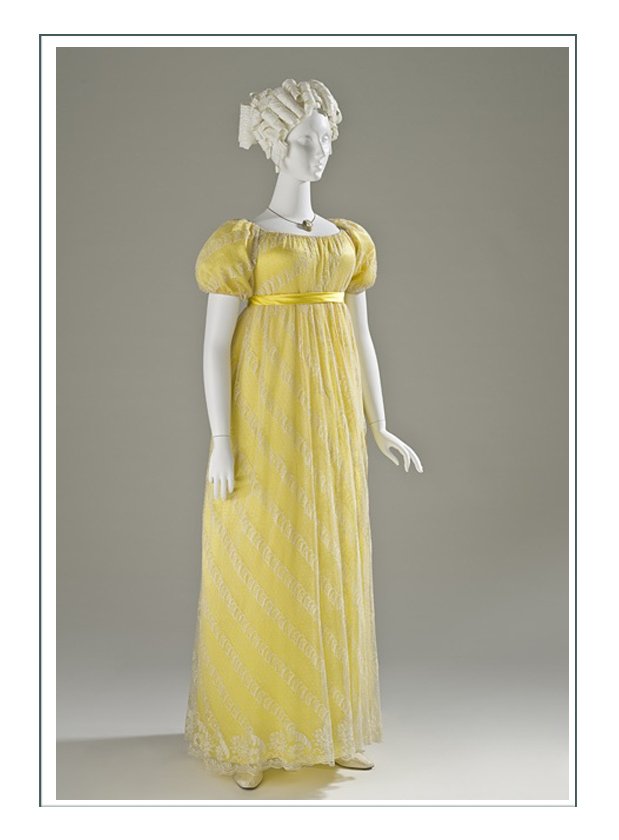
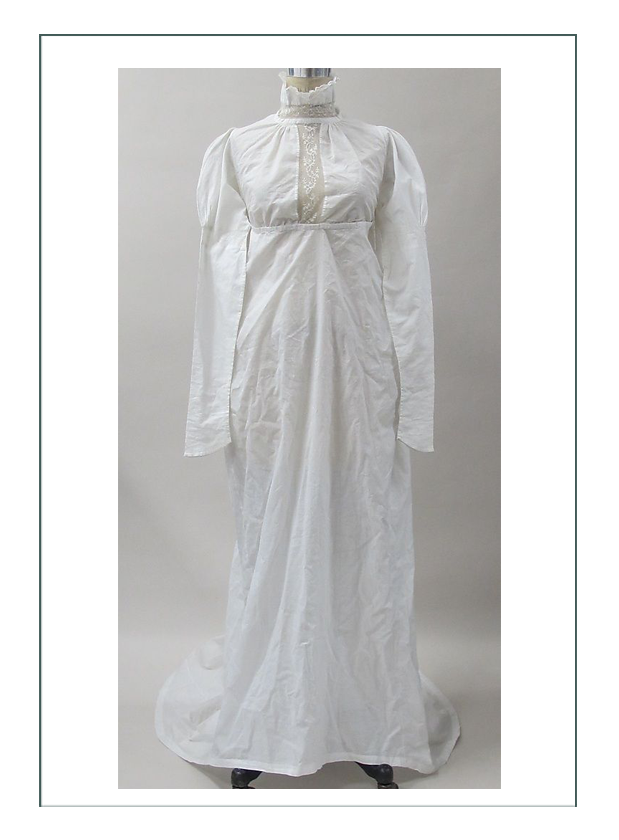
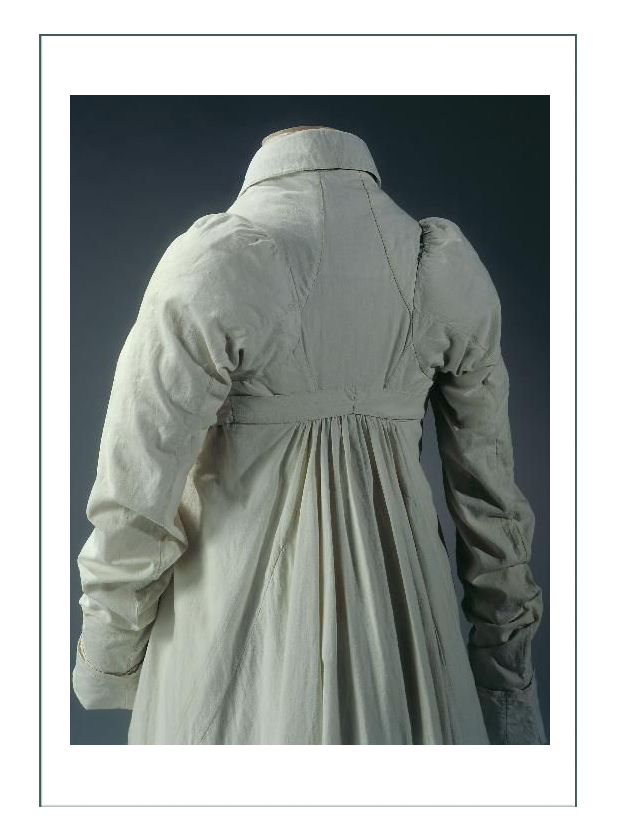
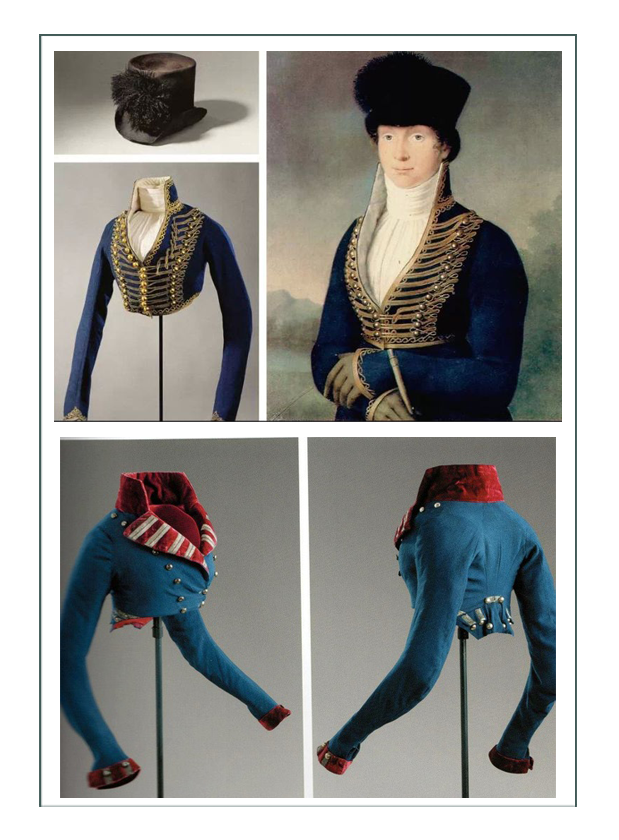
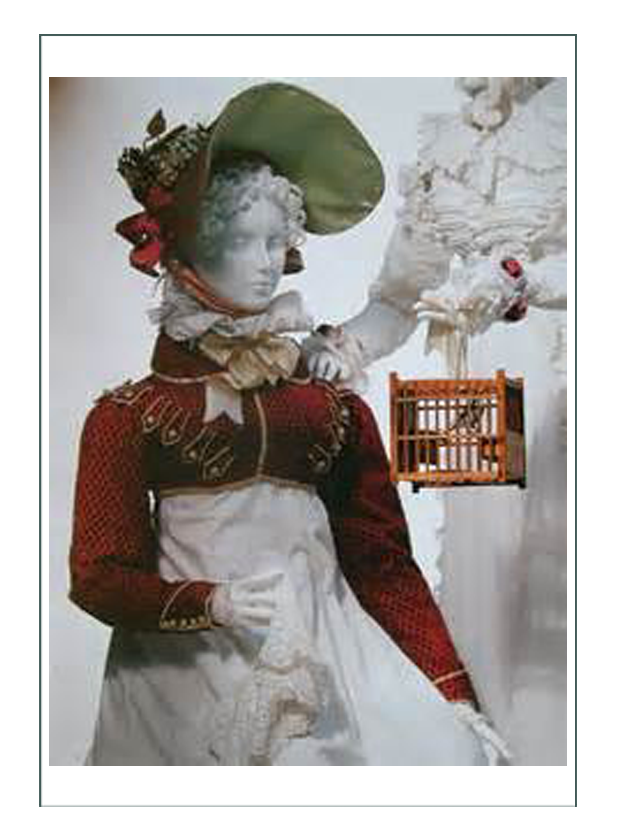
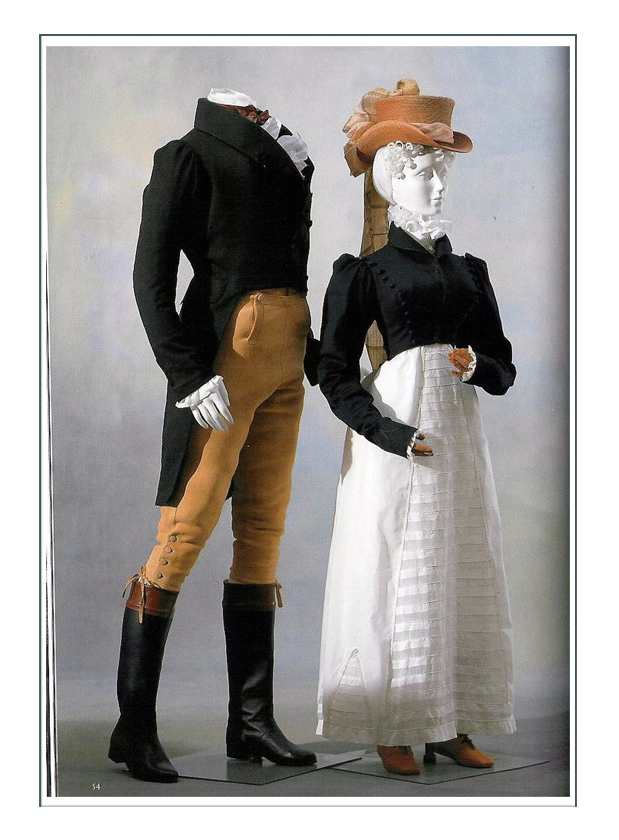
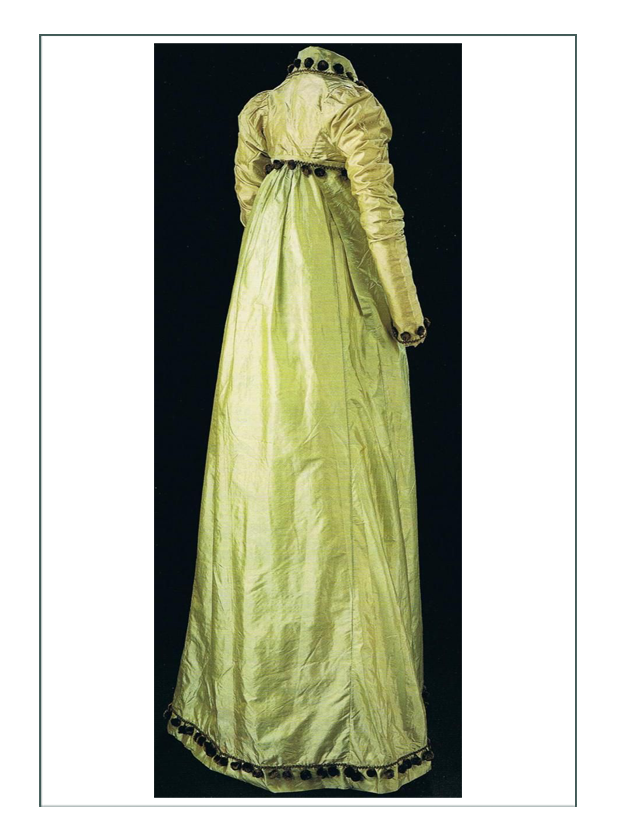

Real American Garments from Era
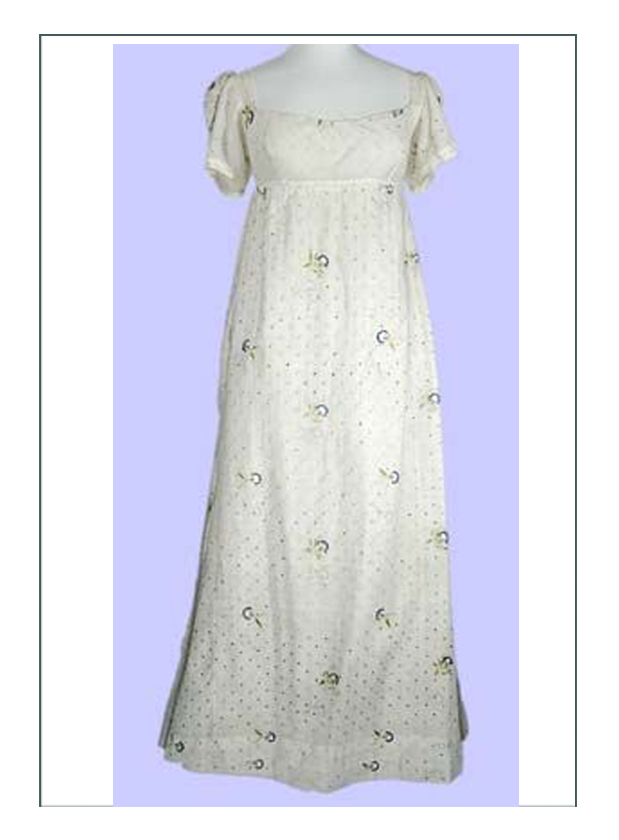
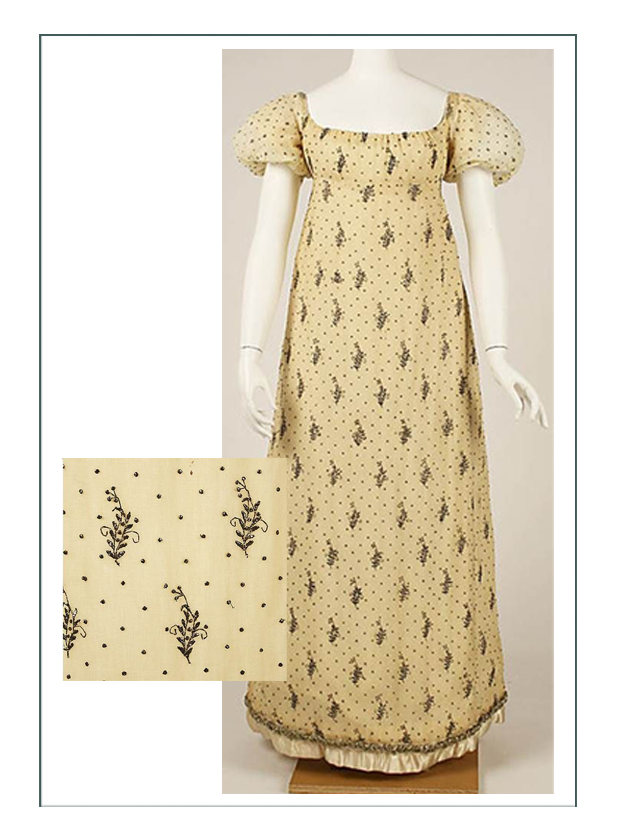
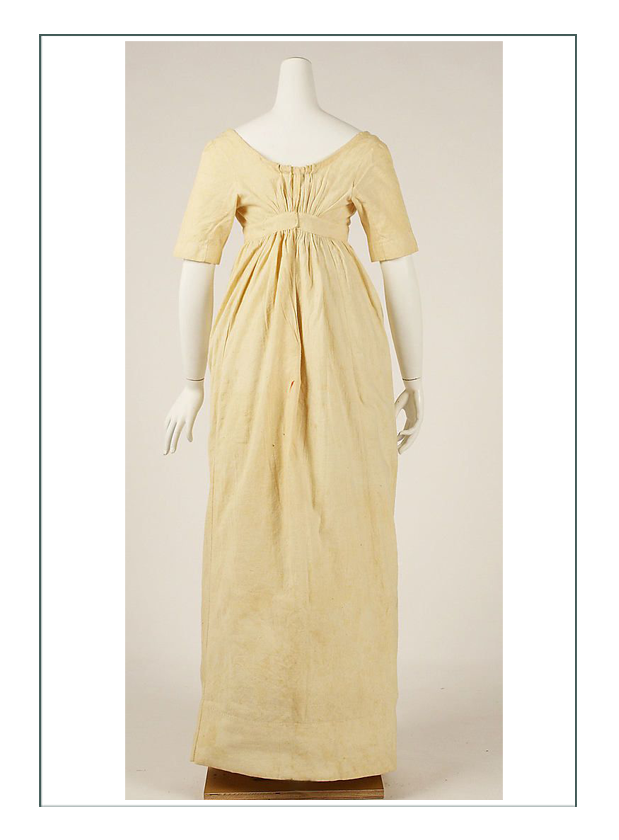
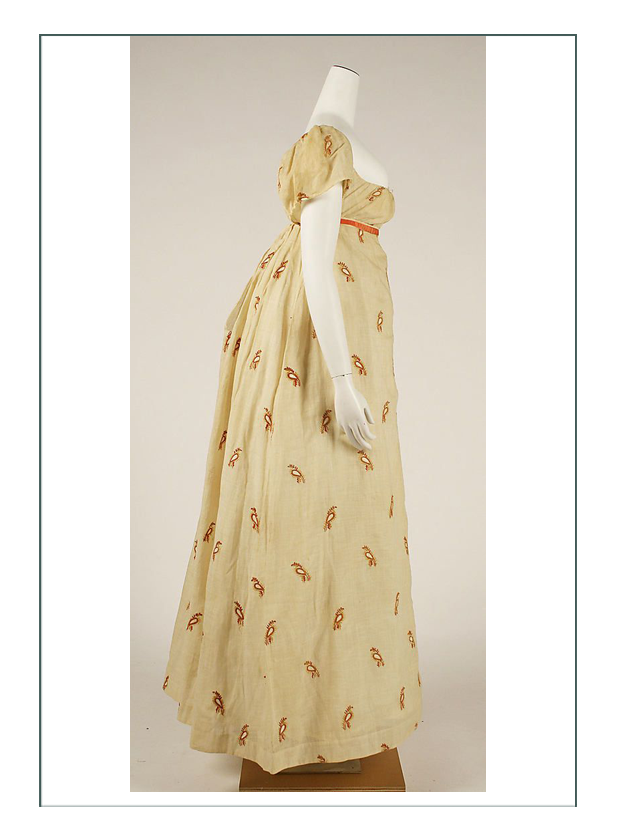
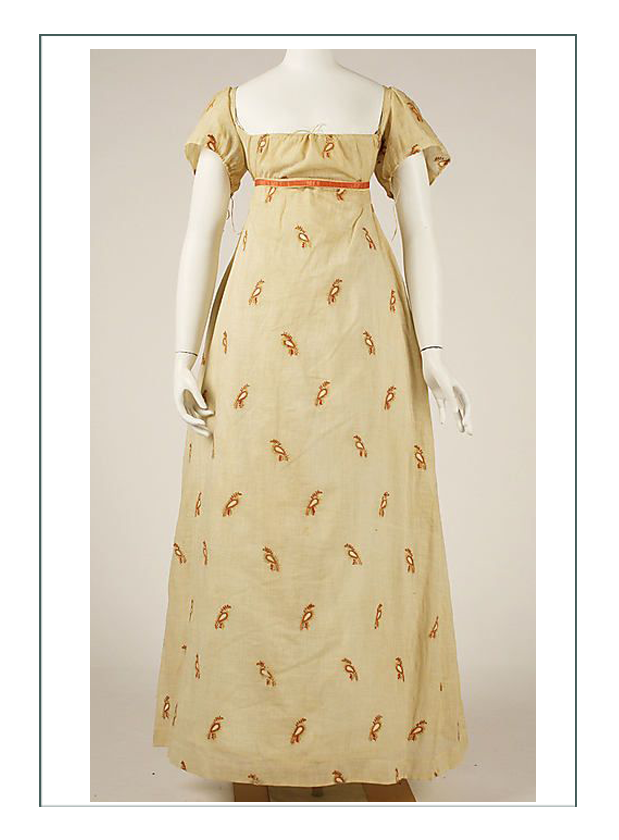
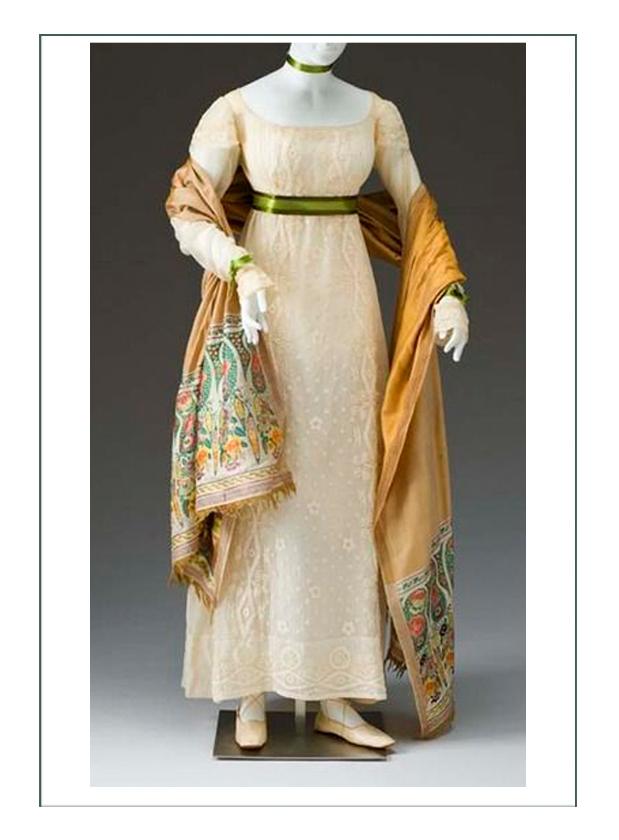
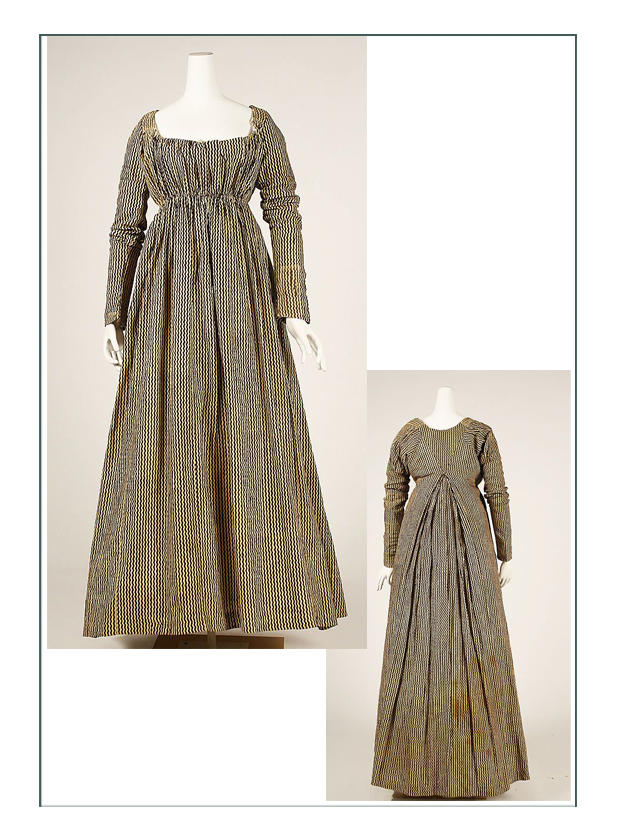
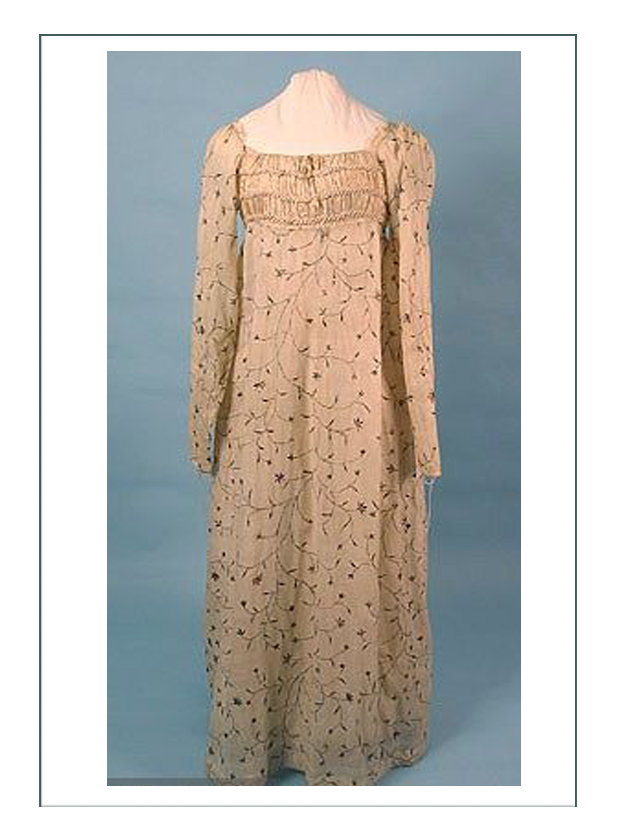
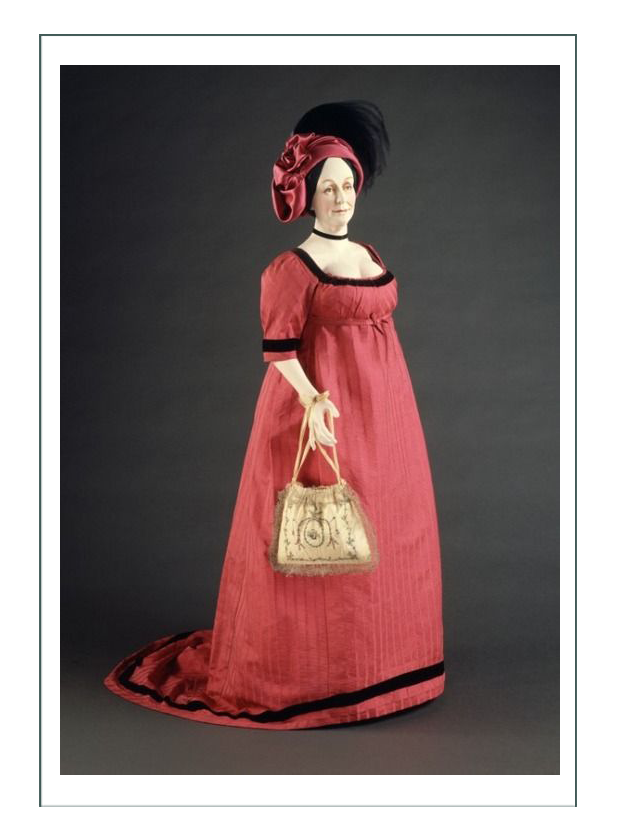
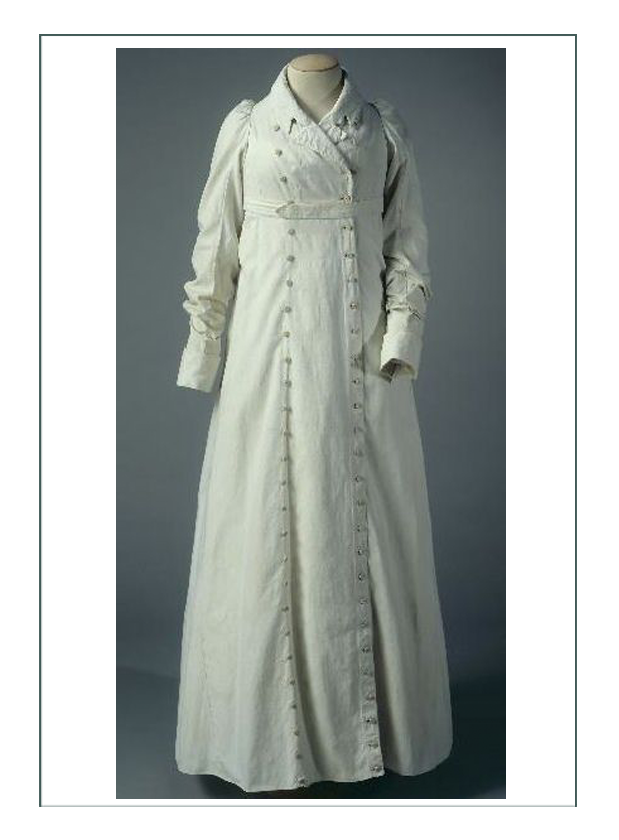
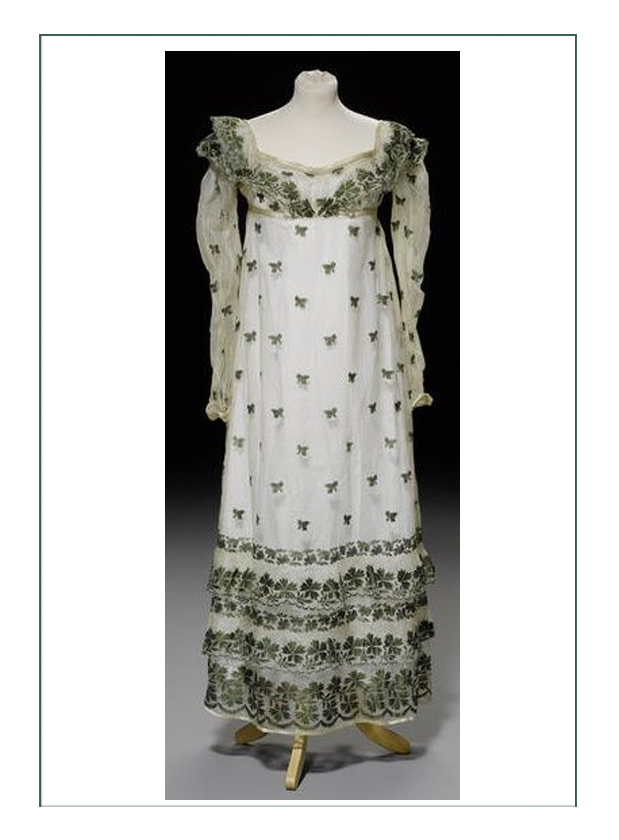
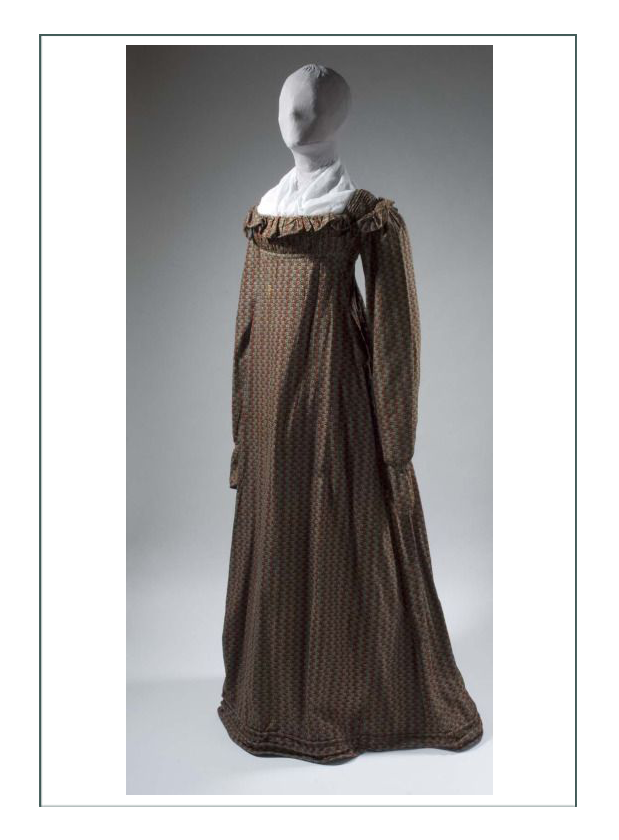
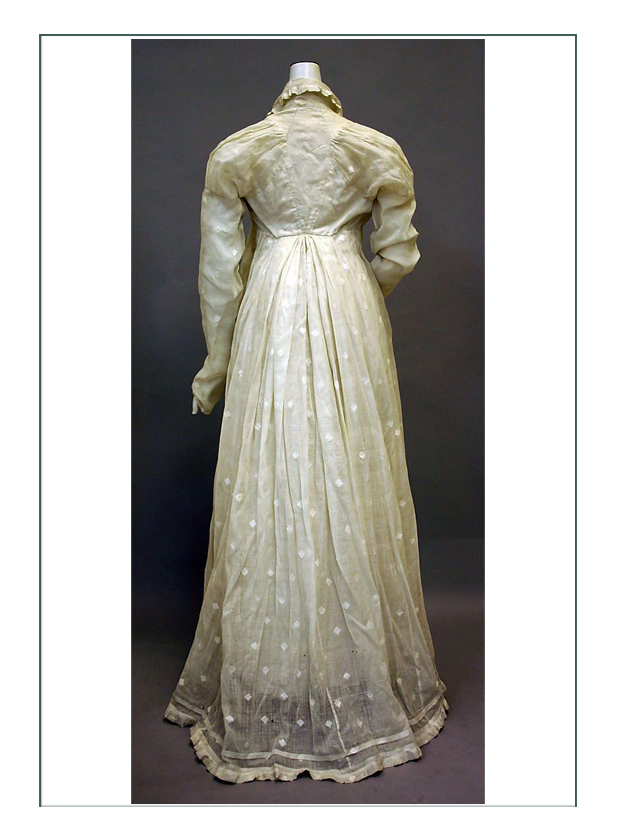
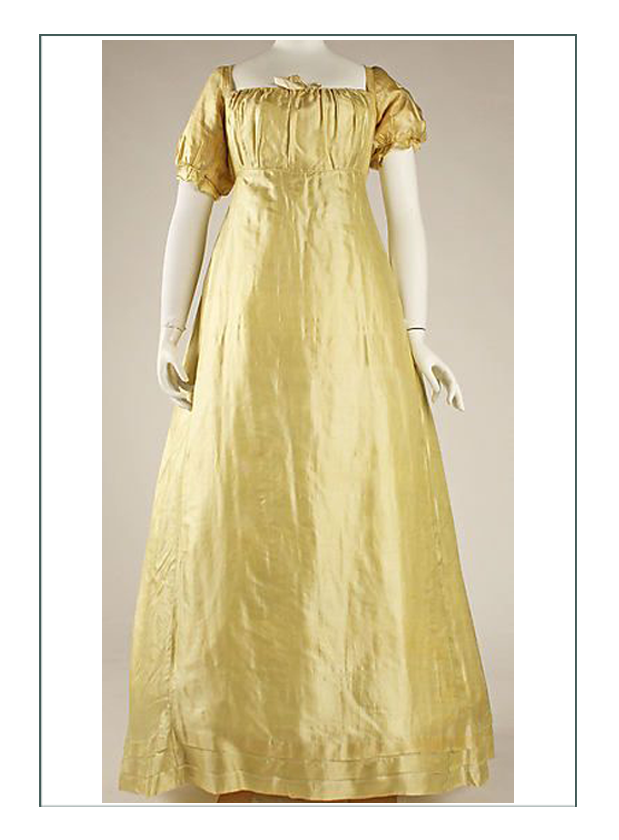
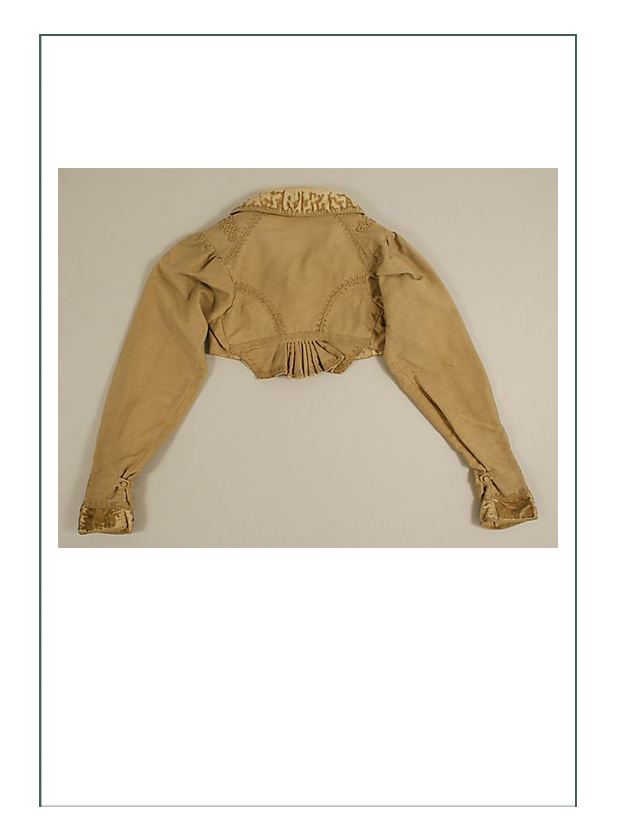
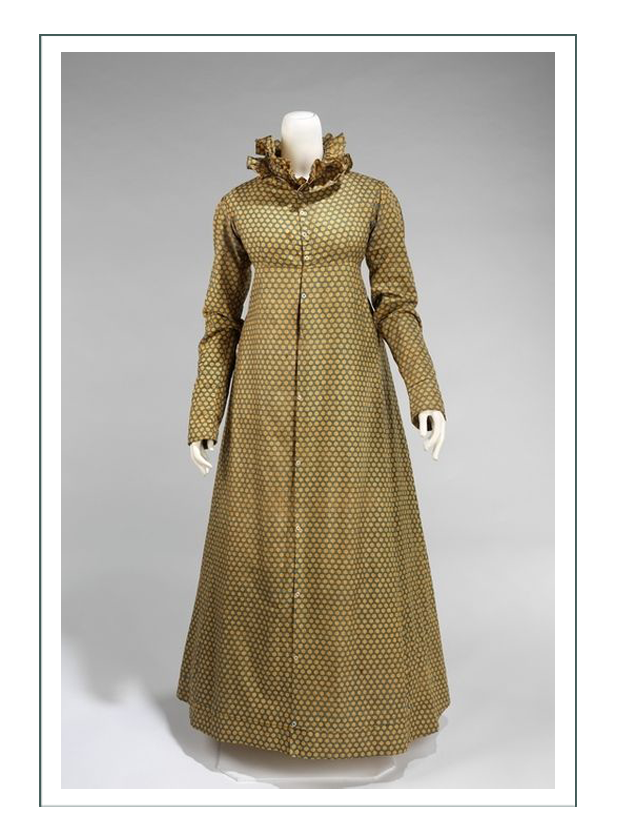
Click here to go to Jacinta’s Historical Context page
Click here to go to Jacinta’s Fashion History Research page
Click here to go to Jacinta’s Design Development page
Click here to return to Jacinta’s main page with the FINAL PRODUCT
